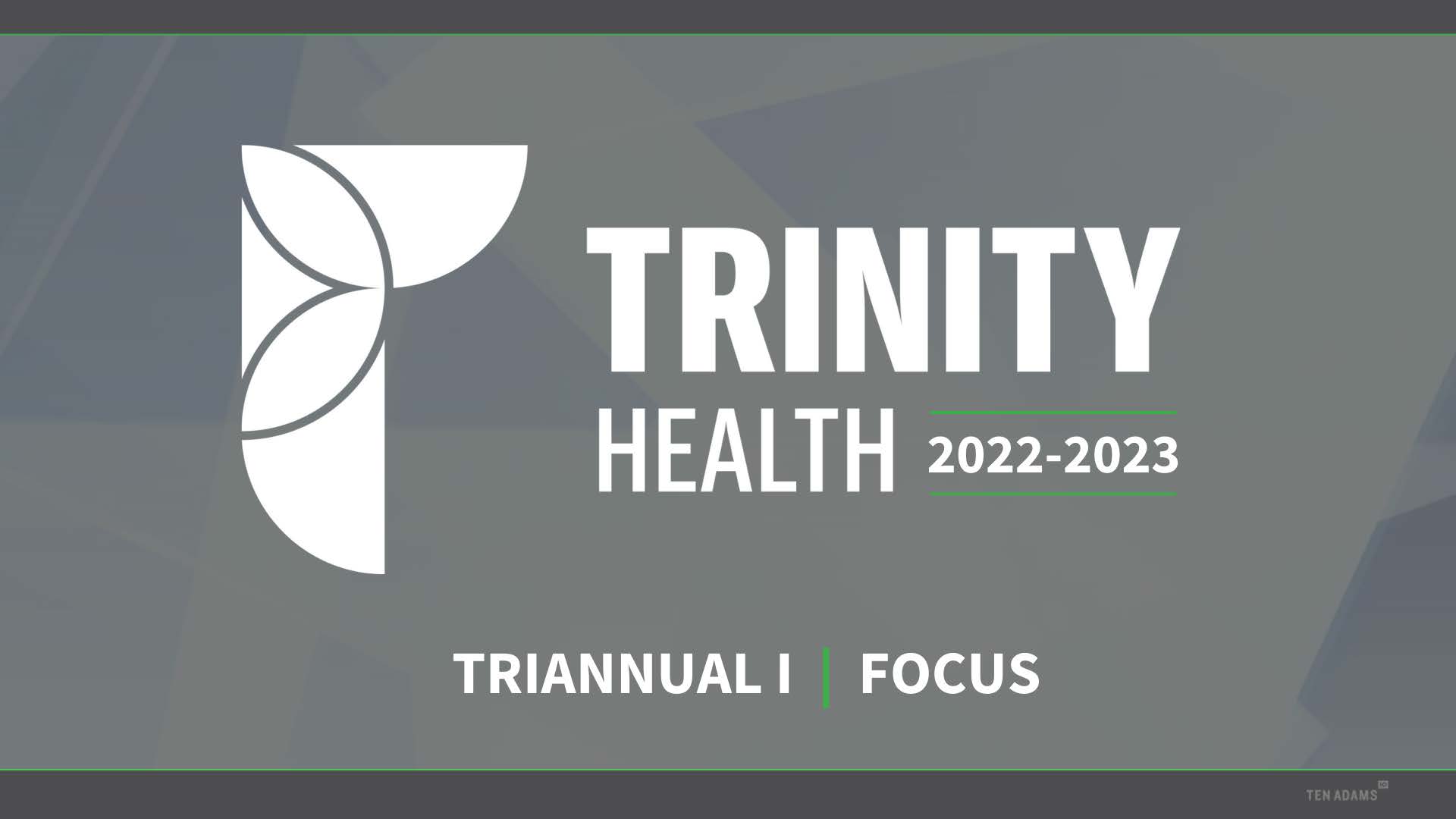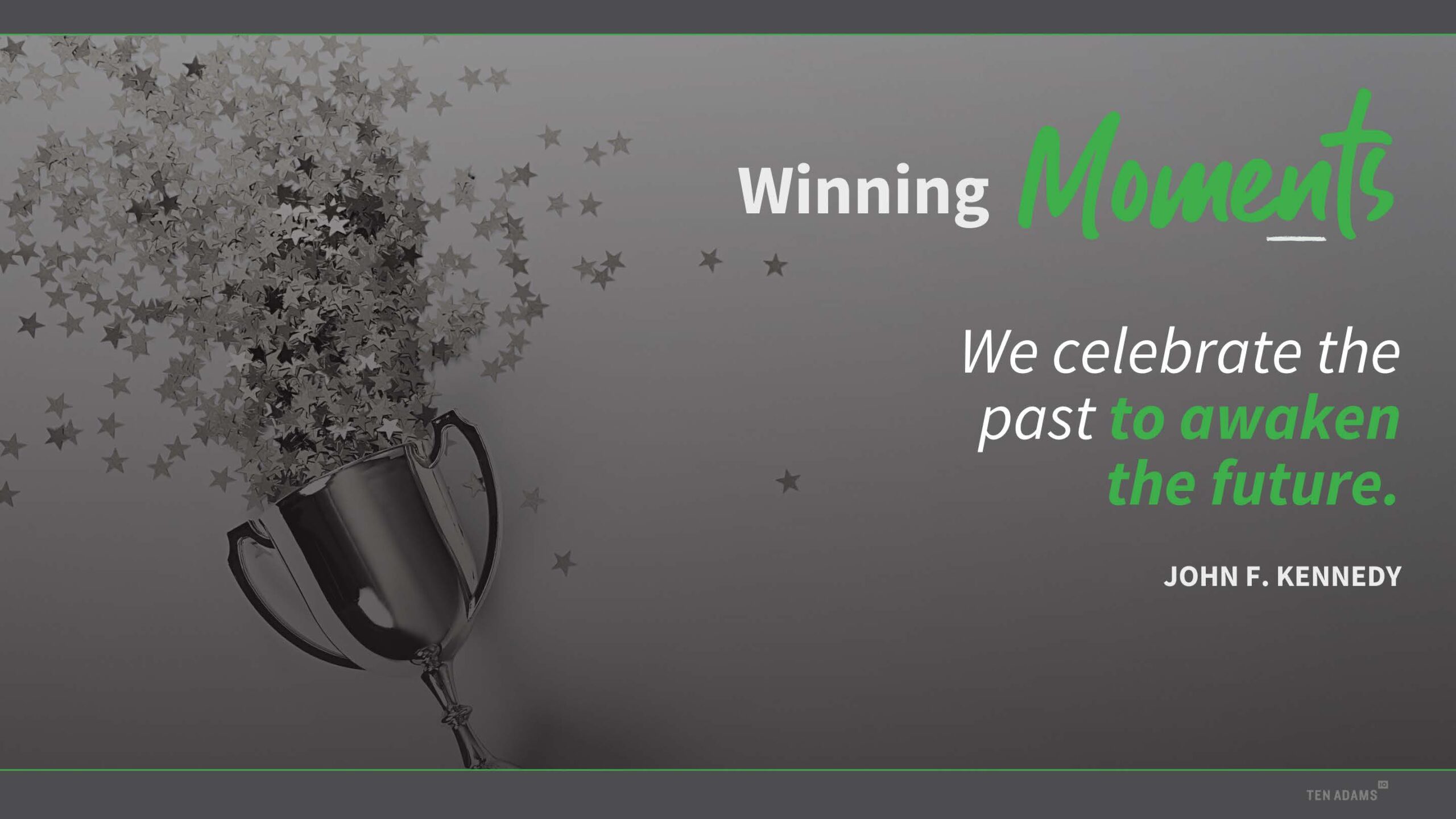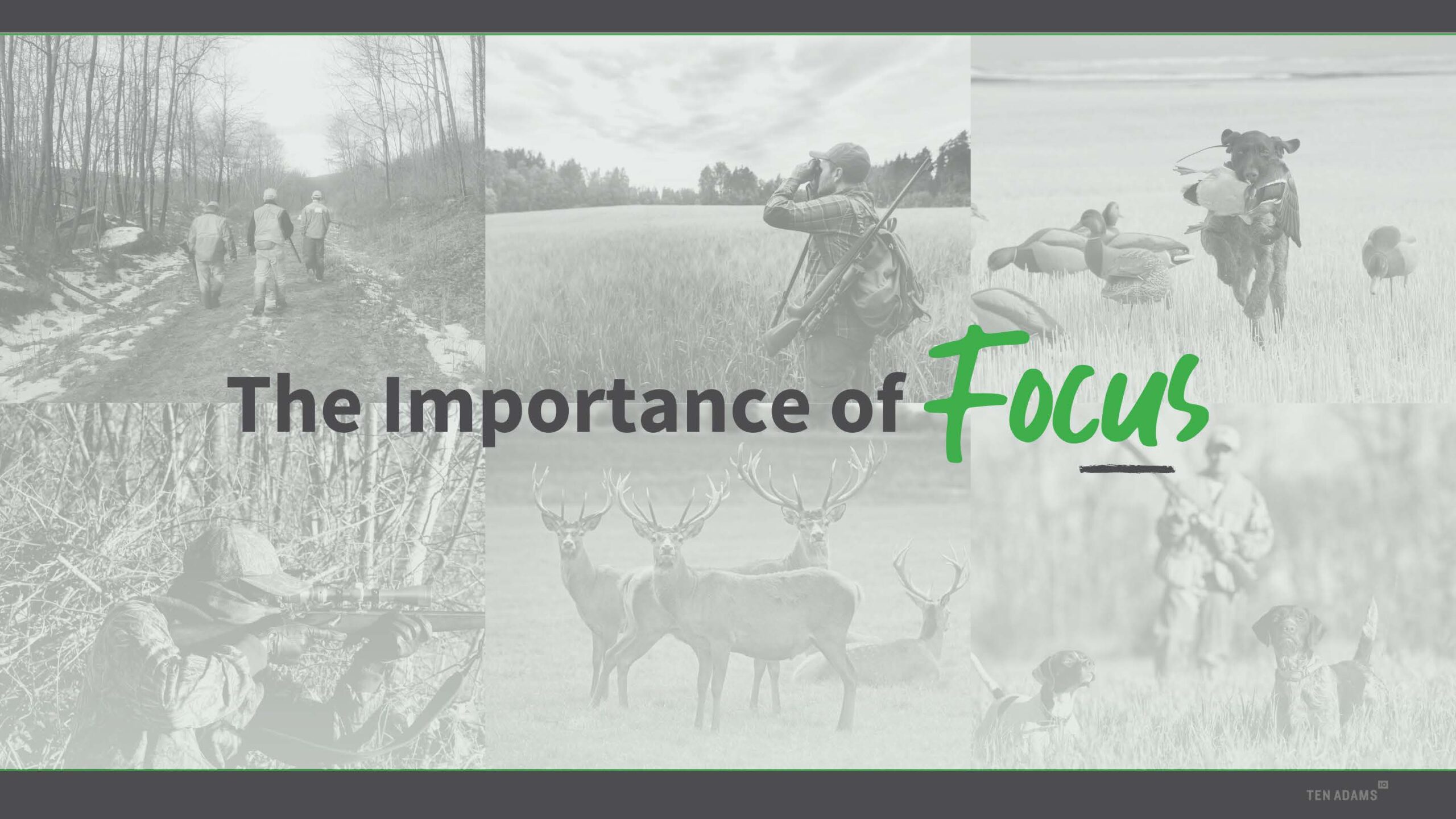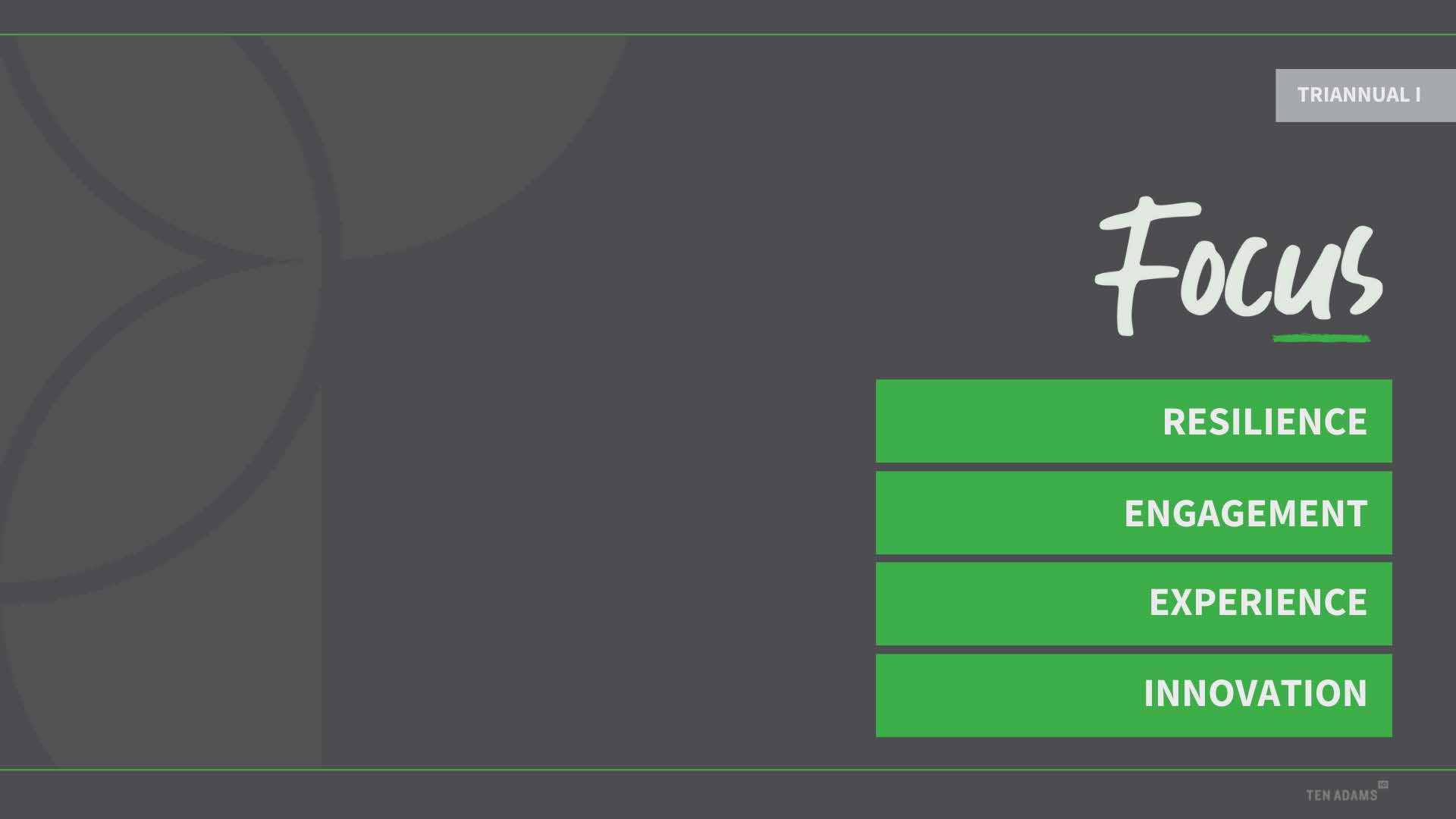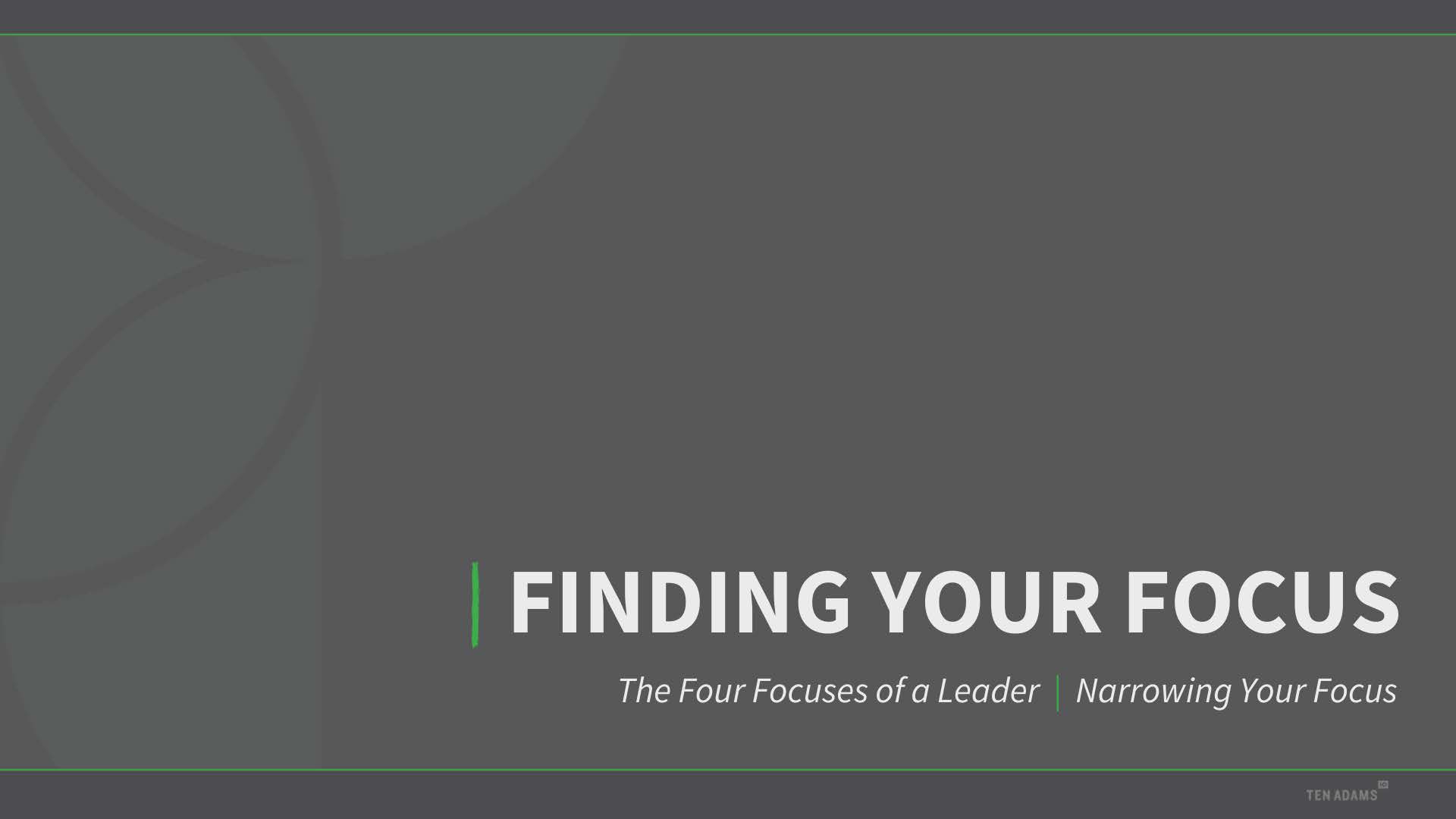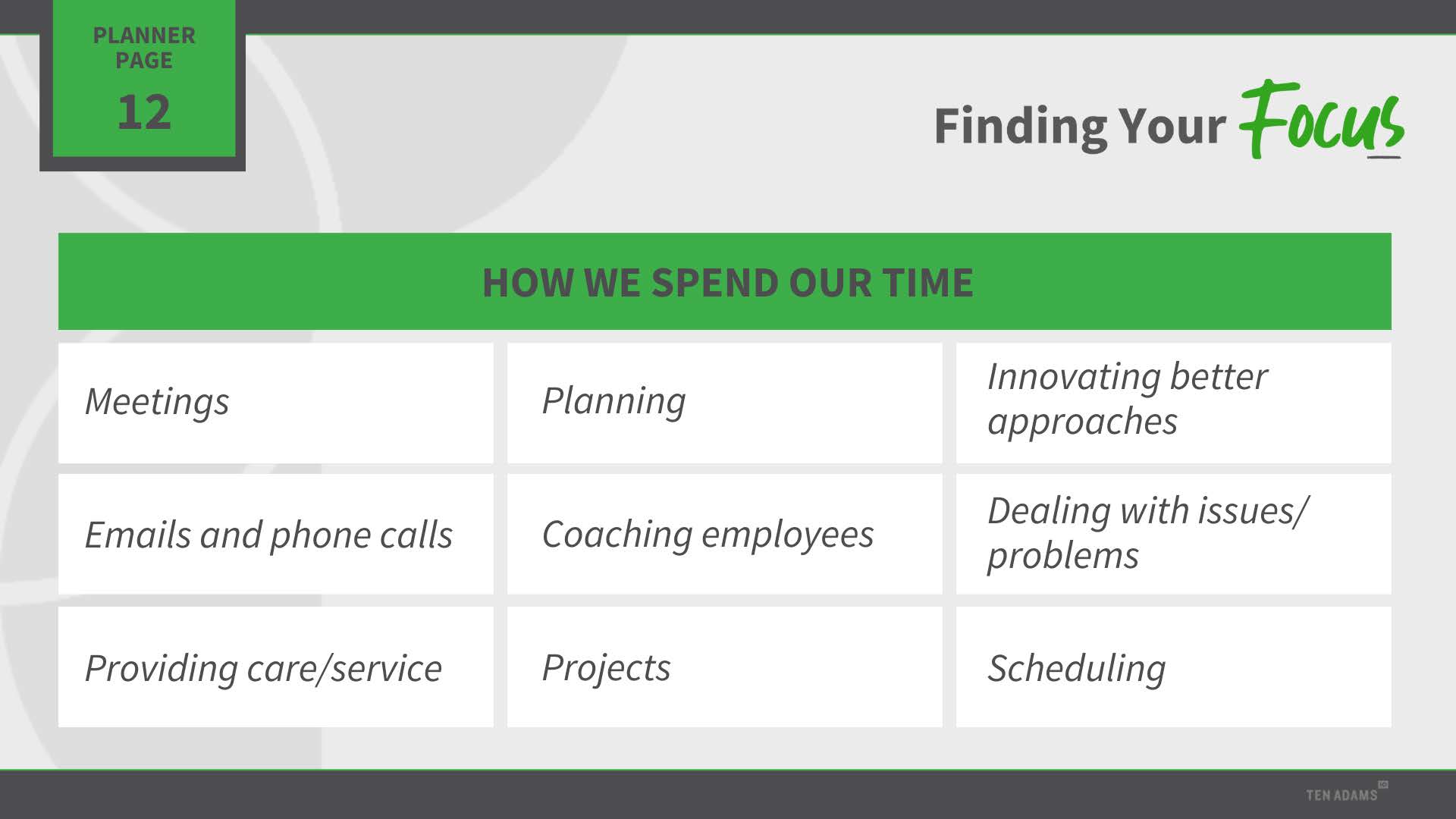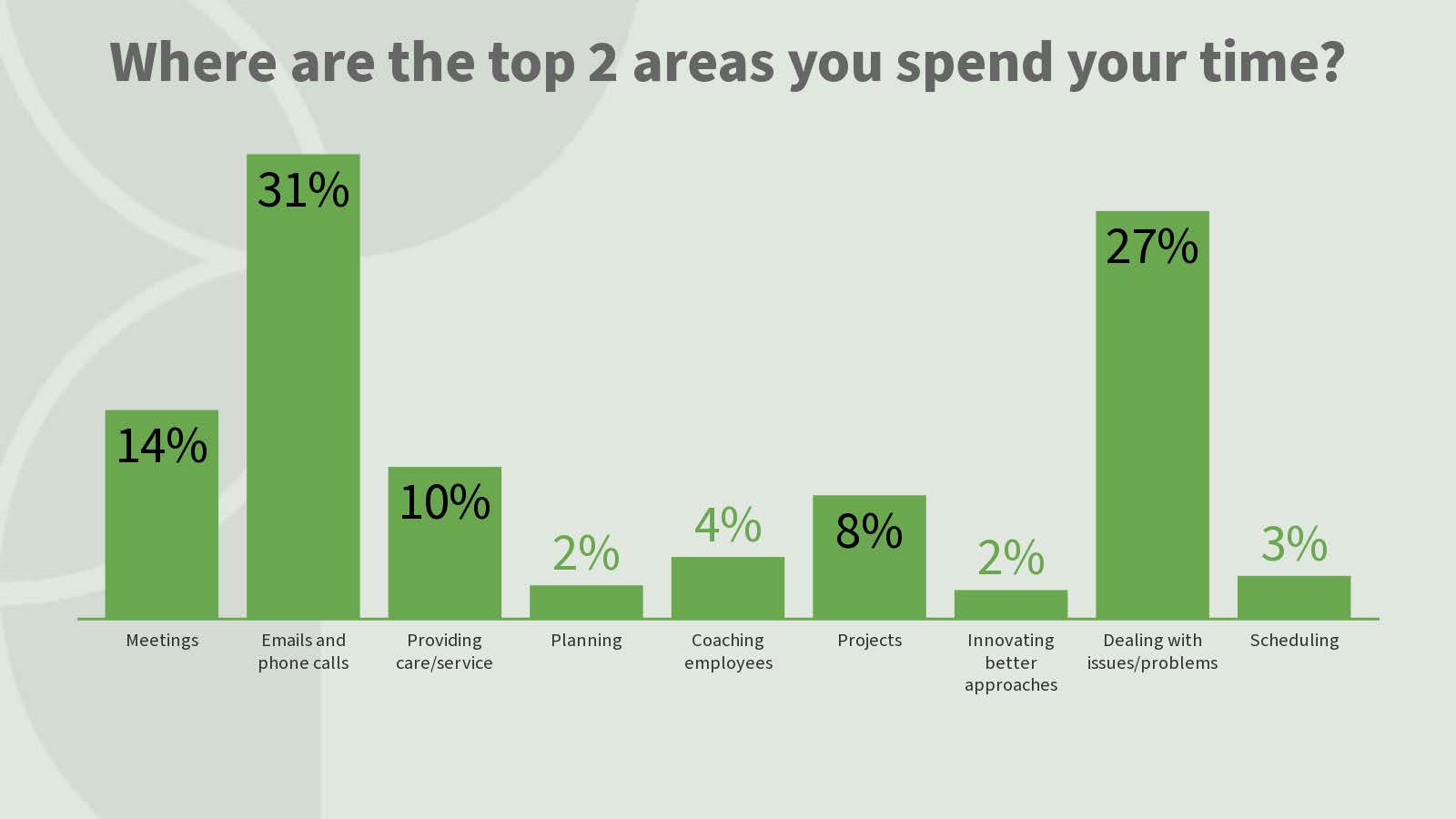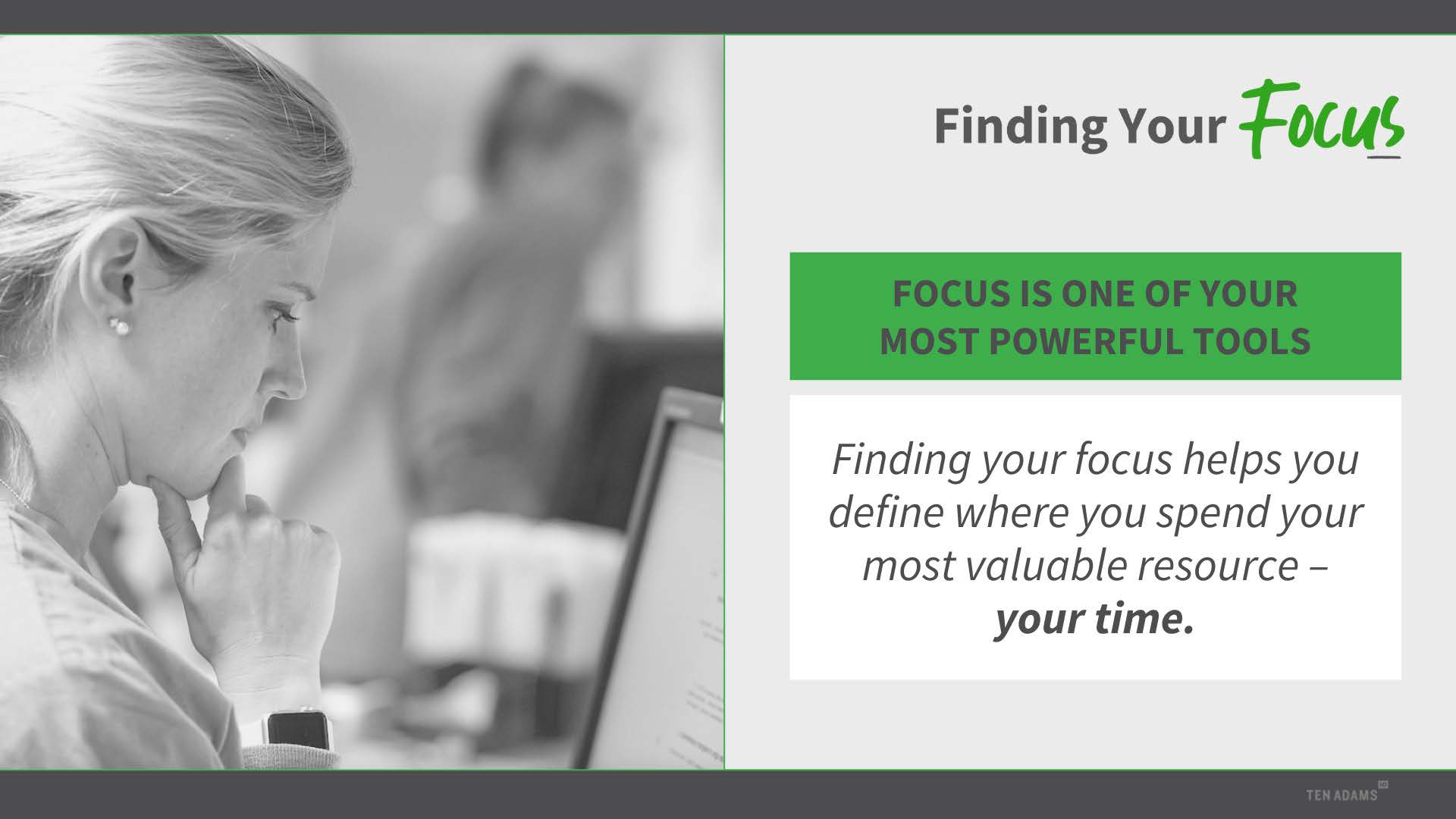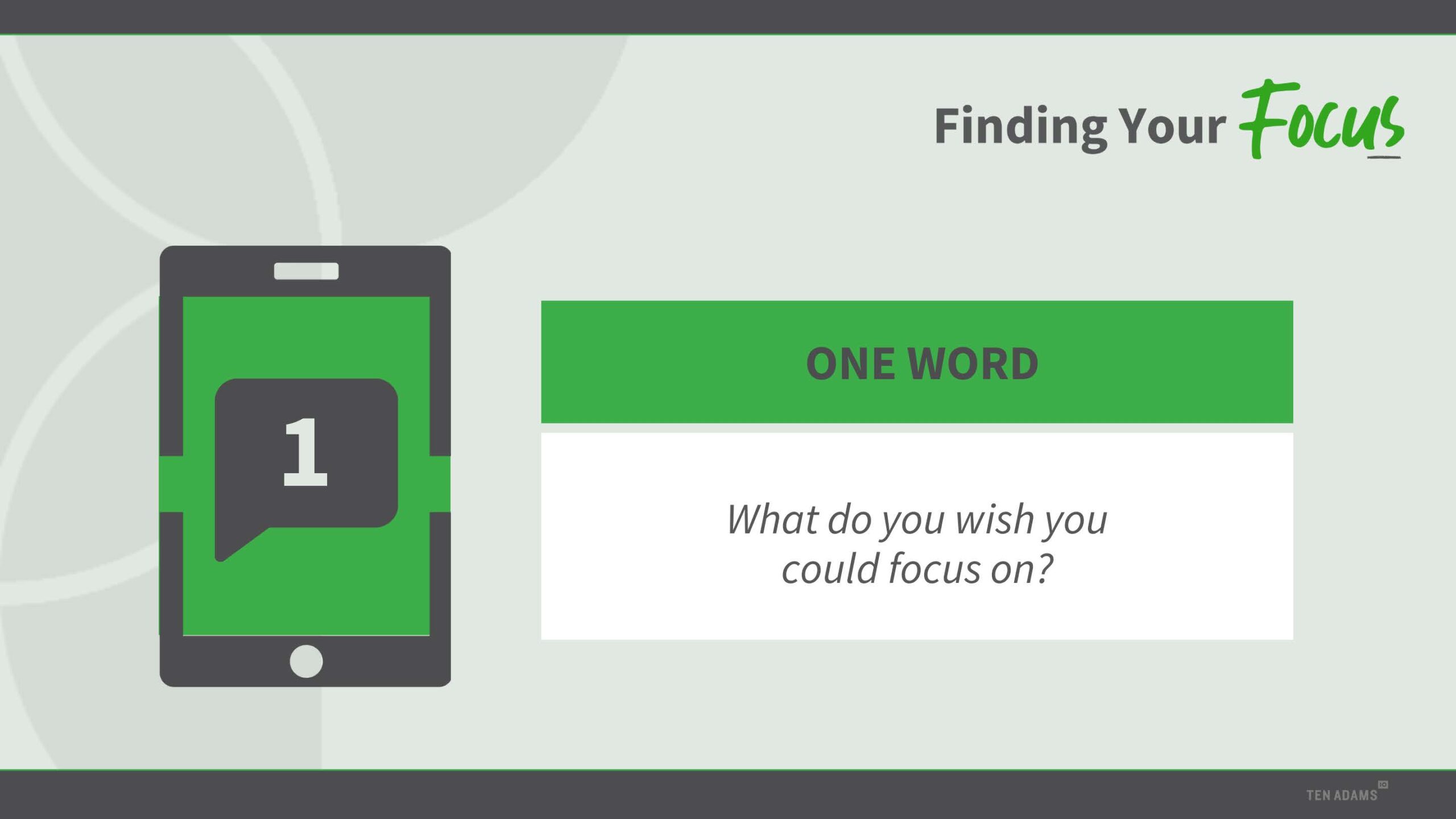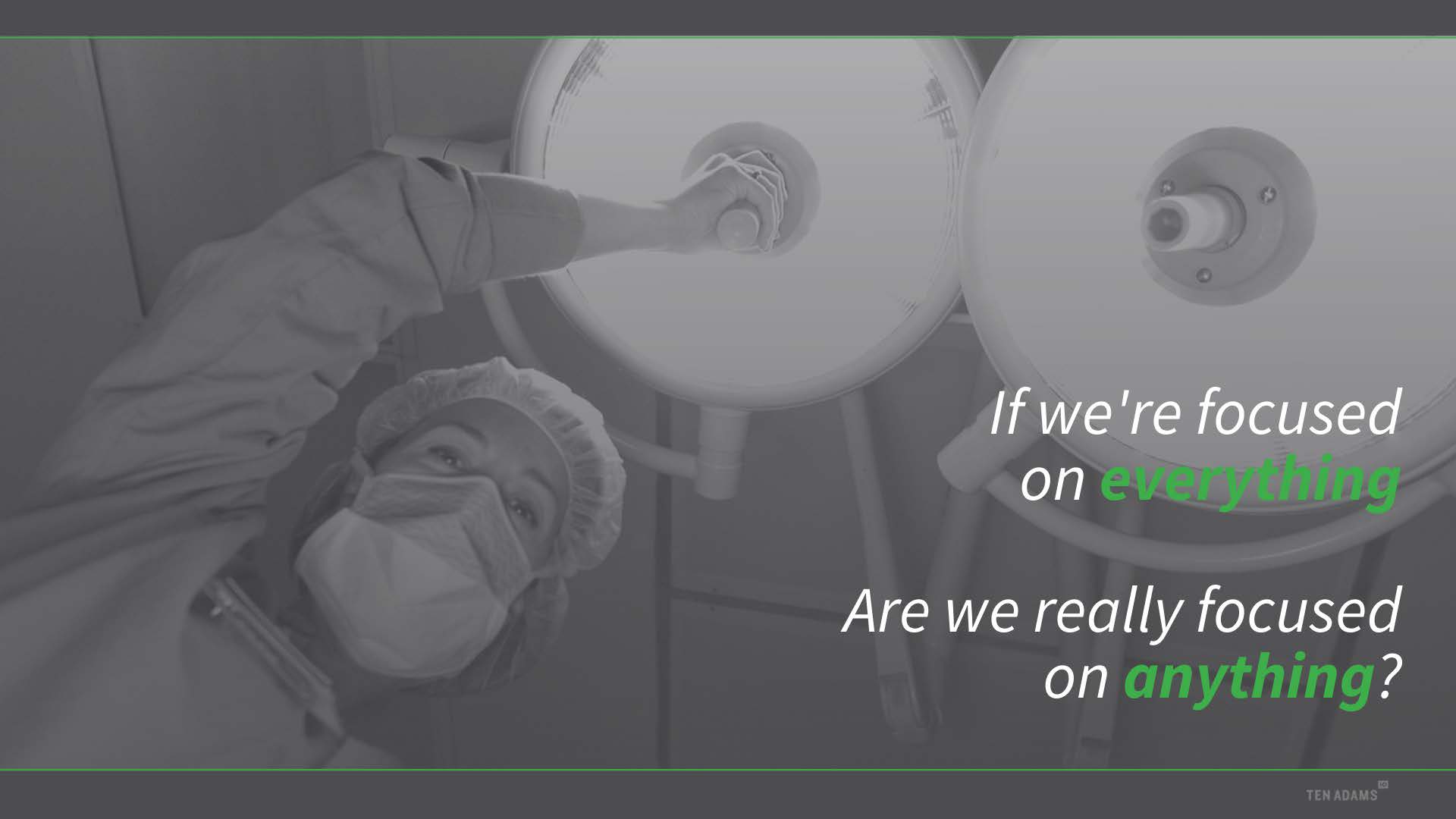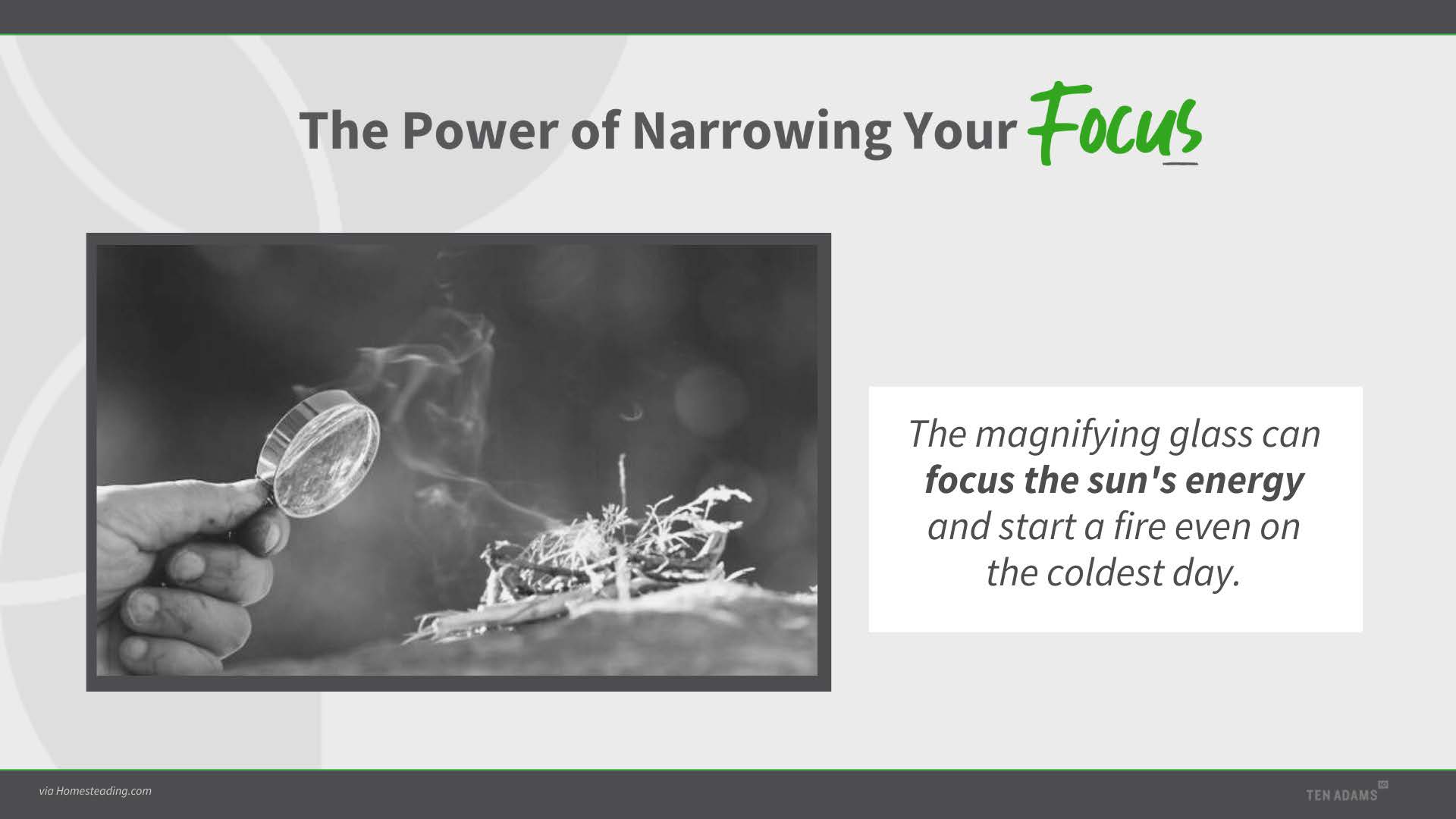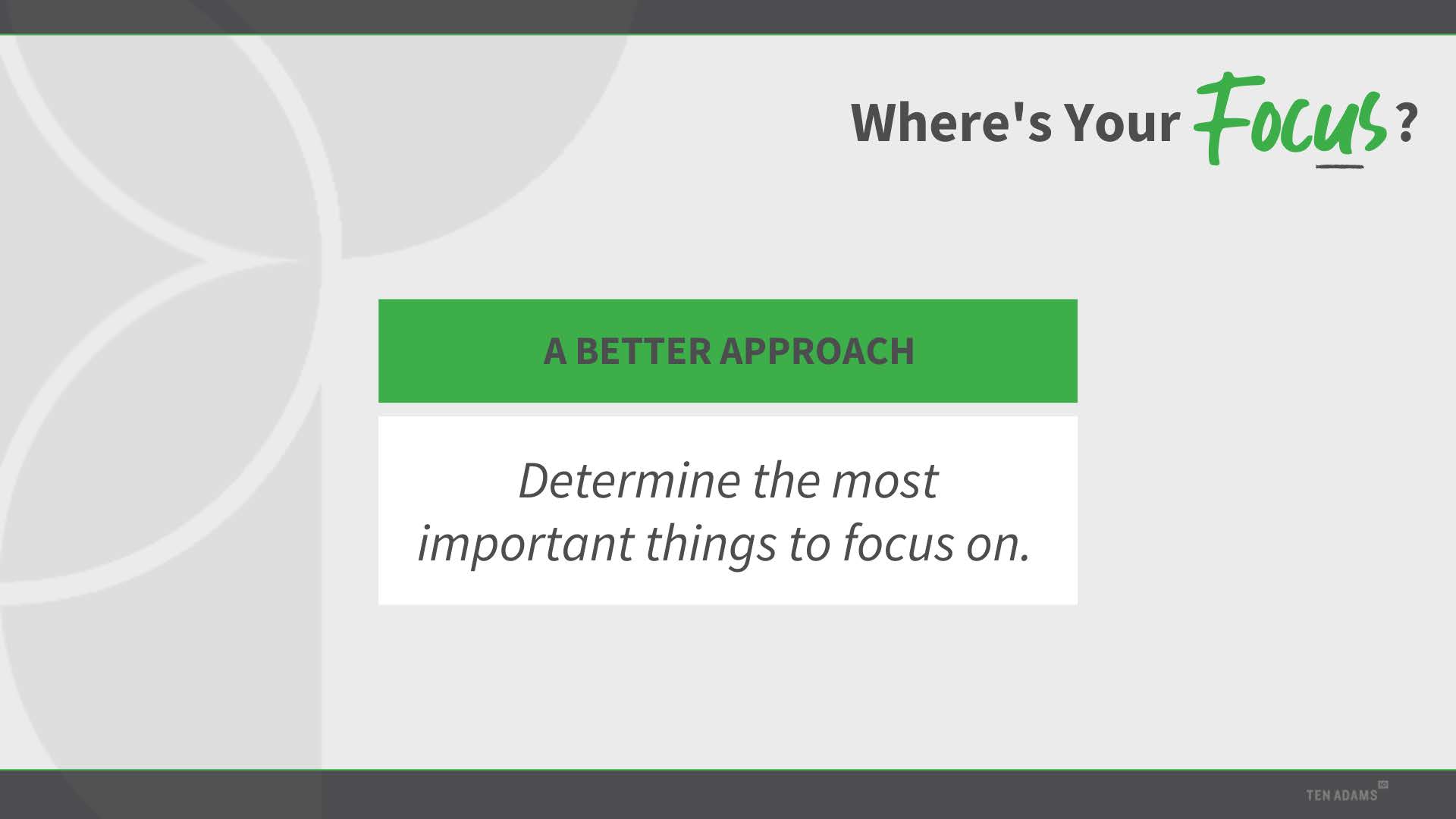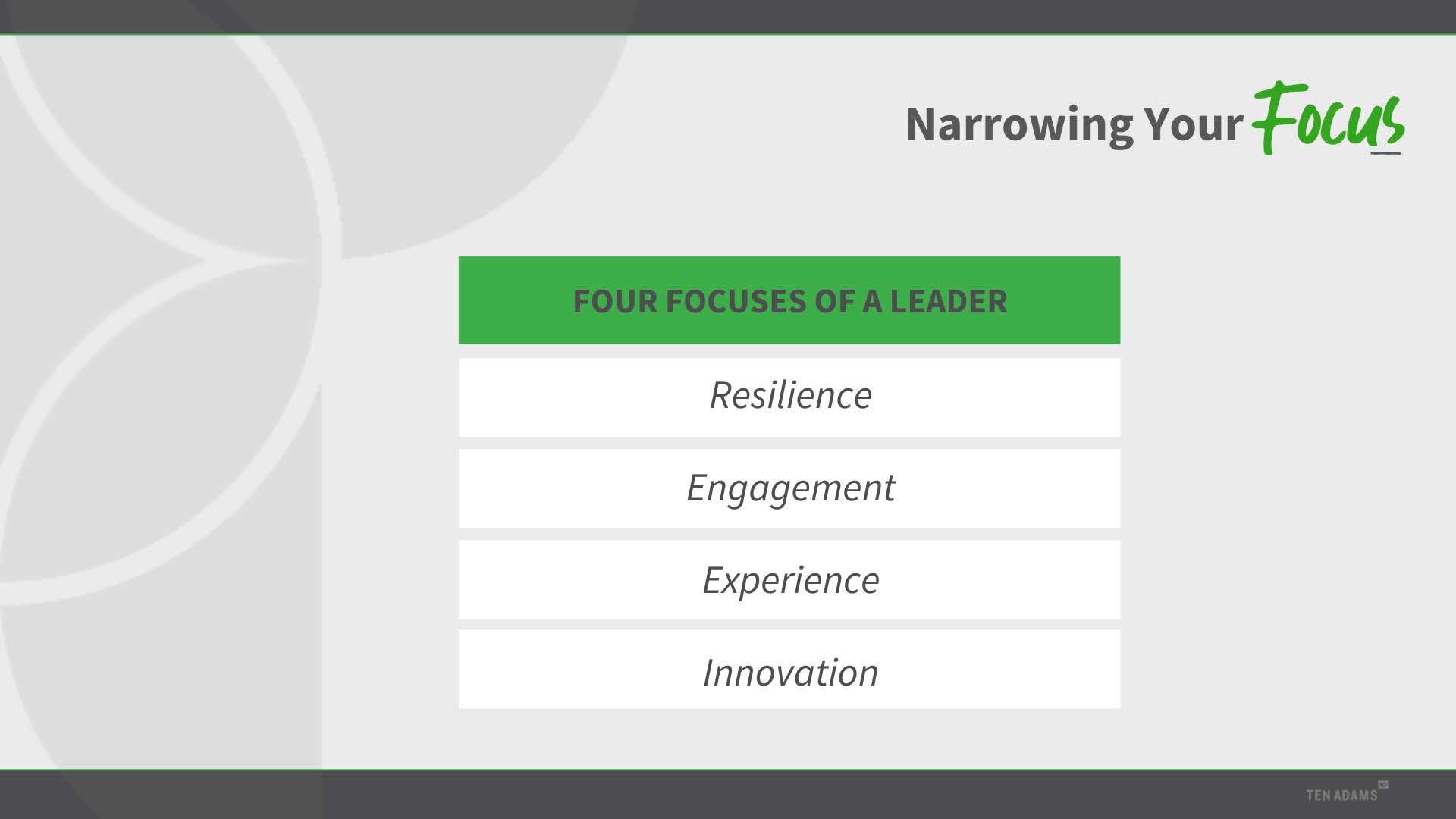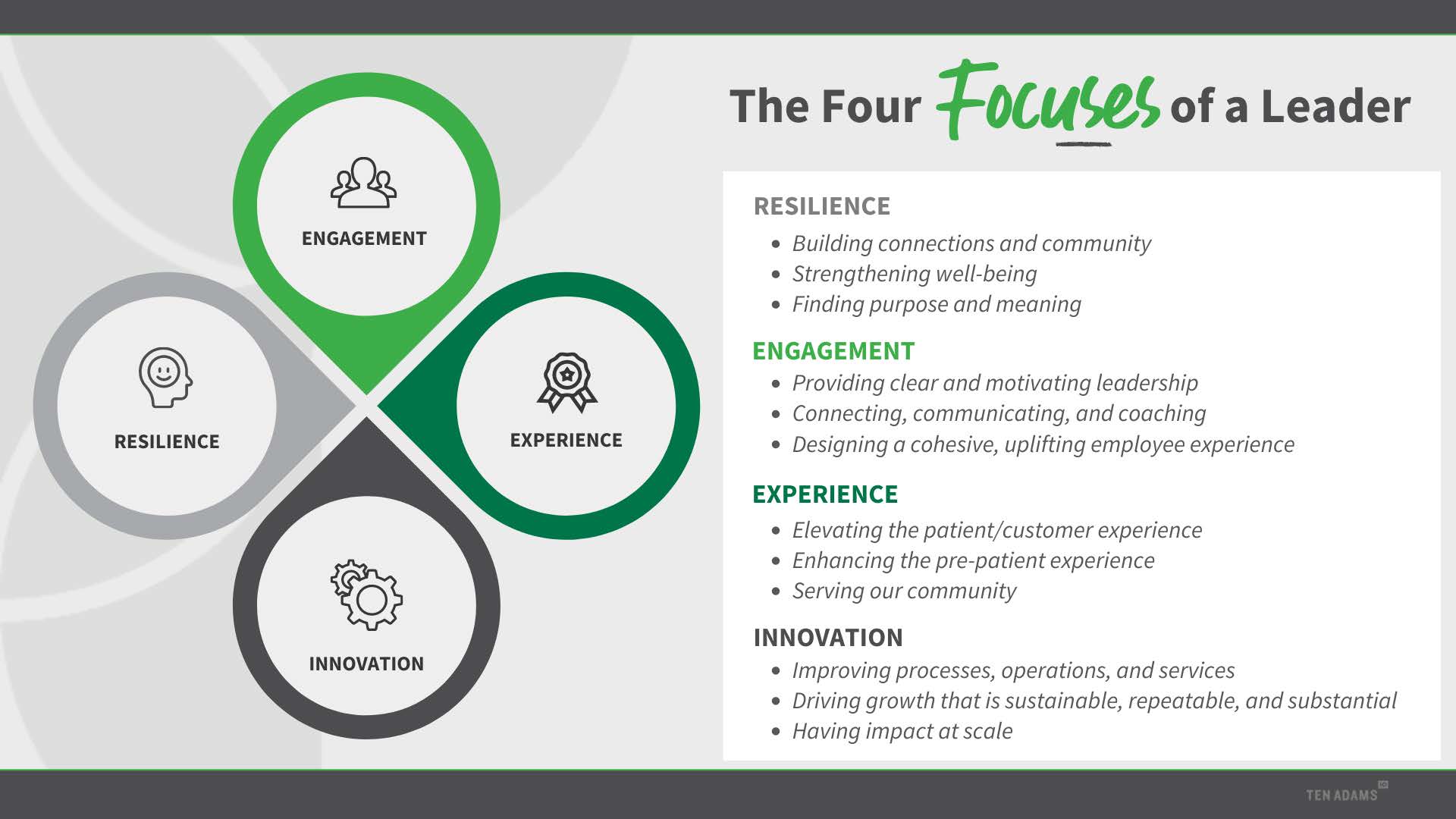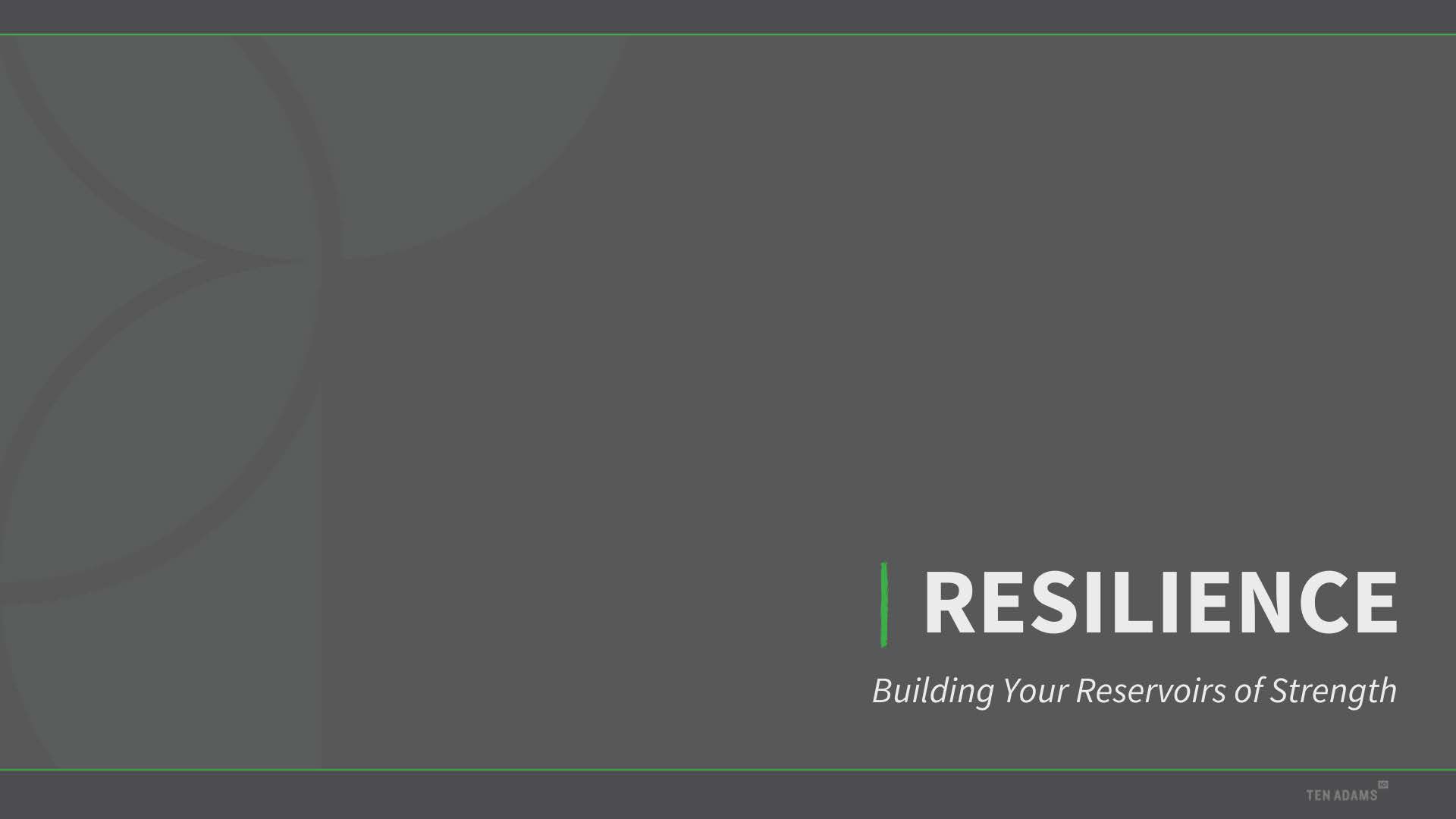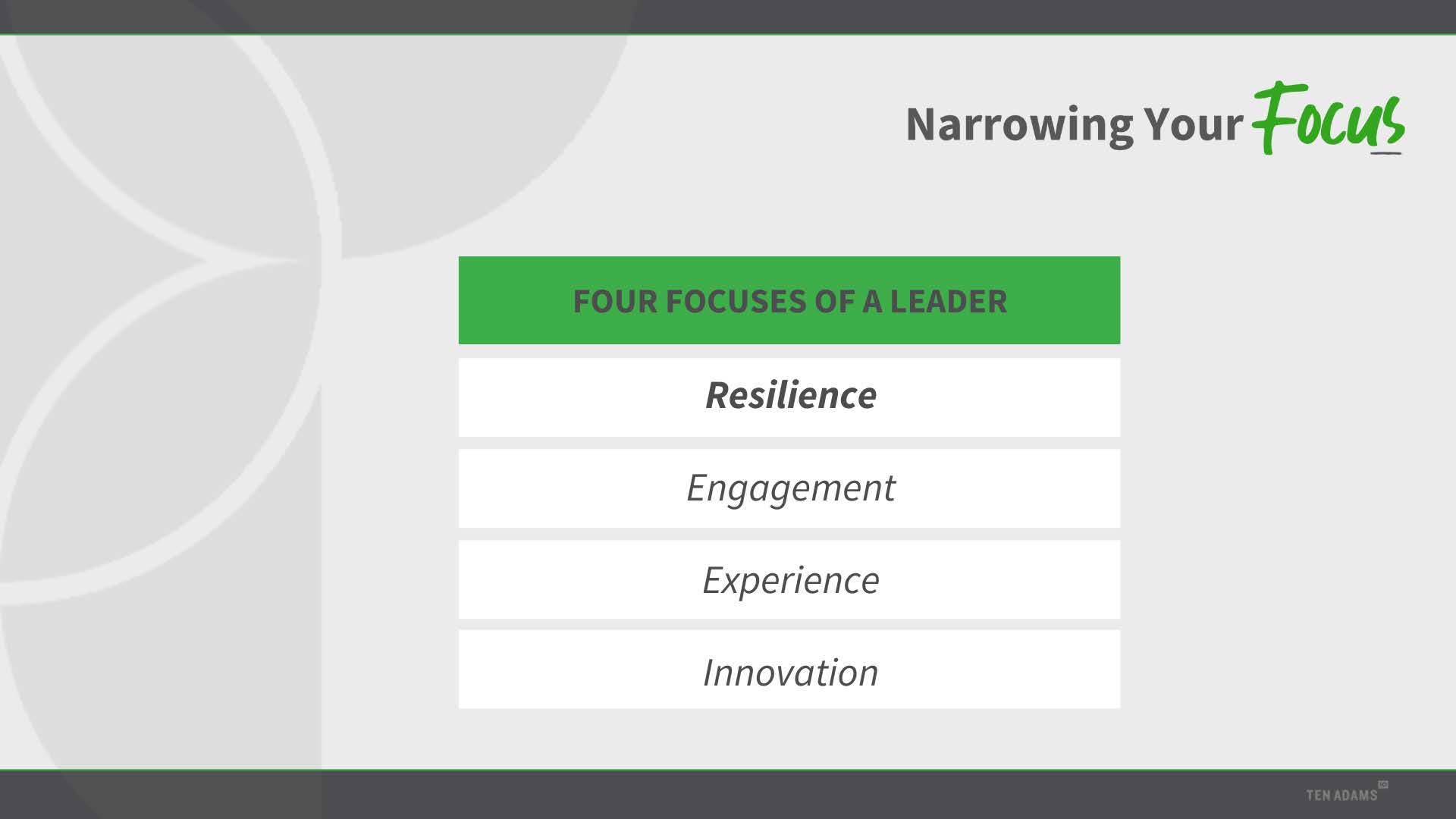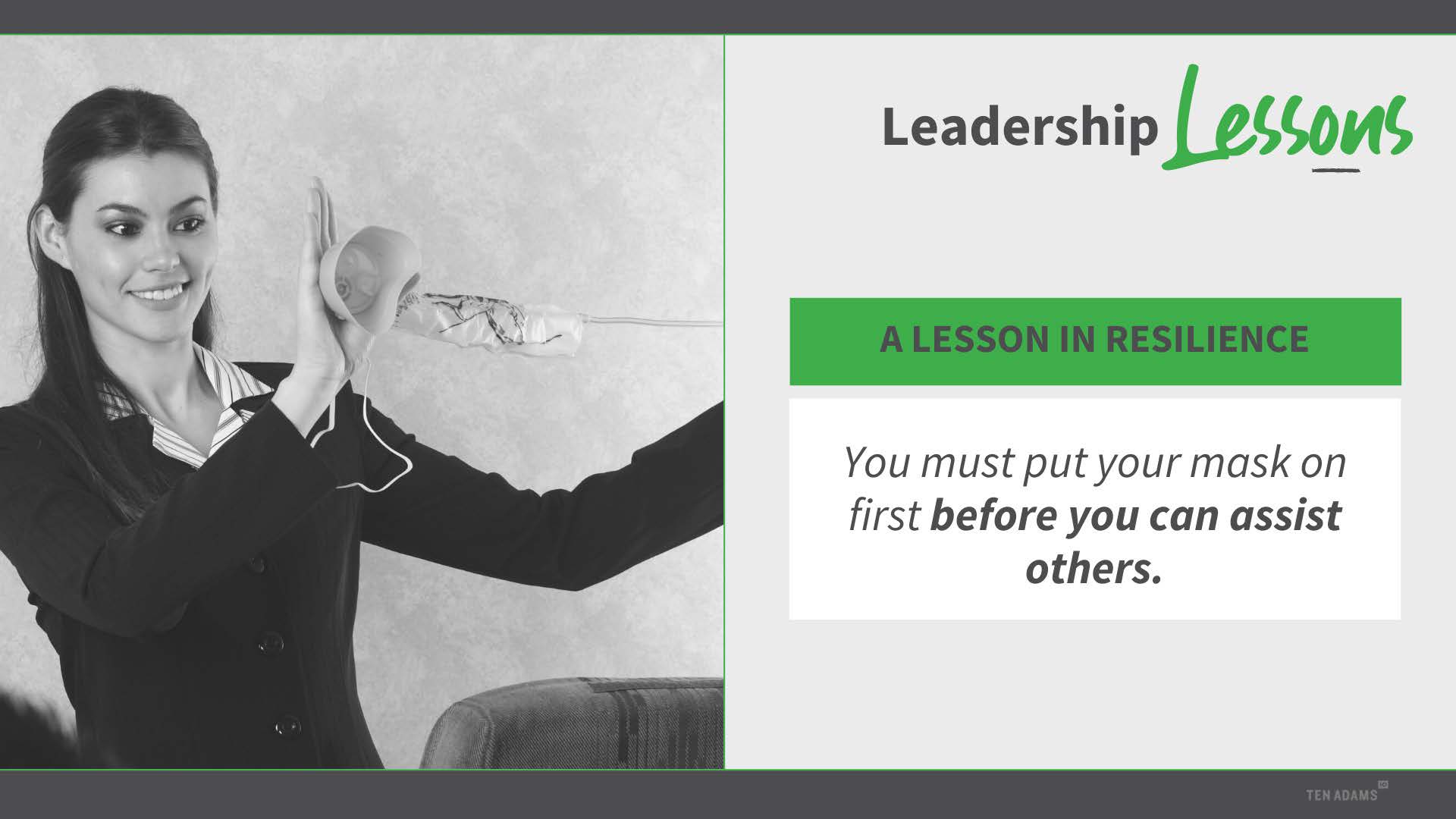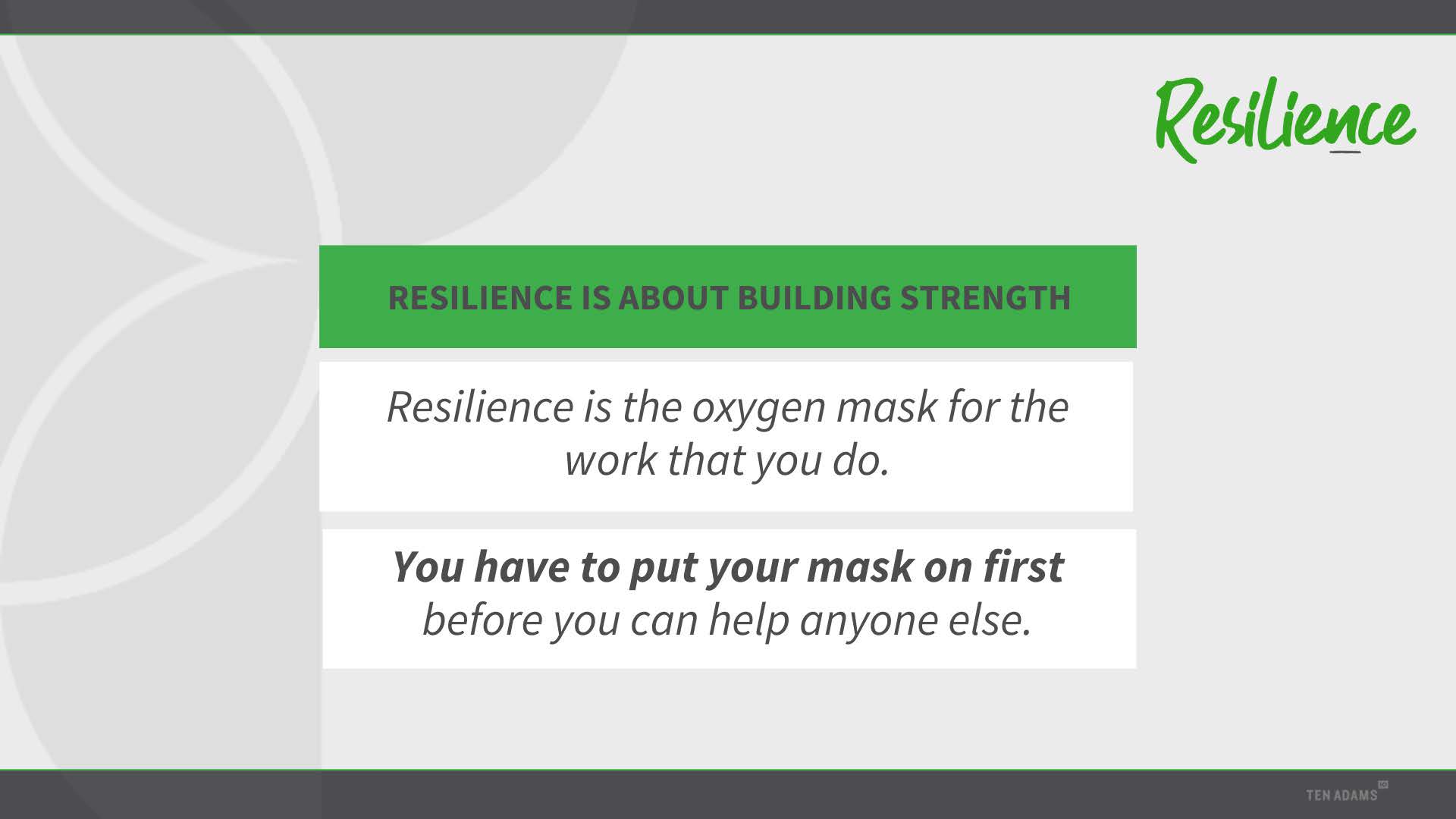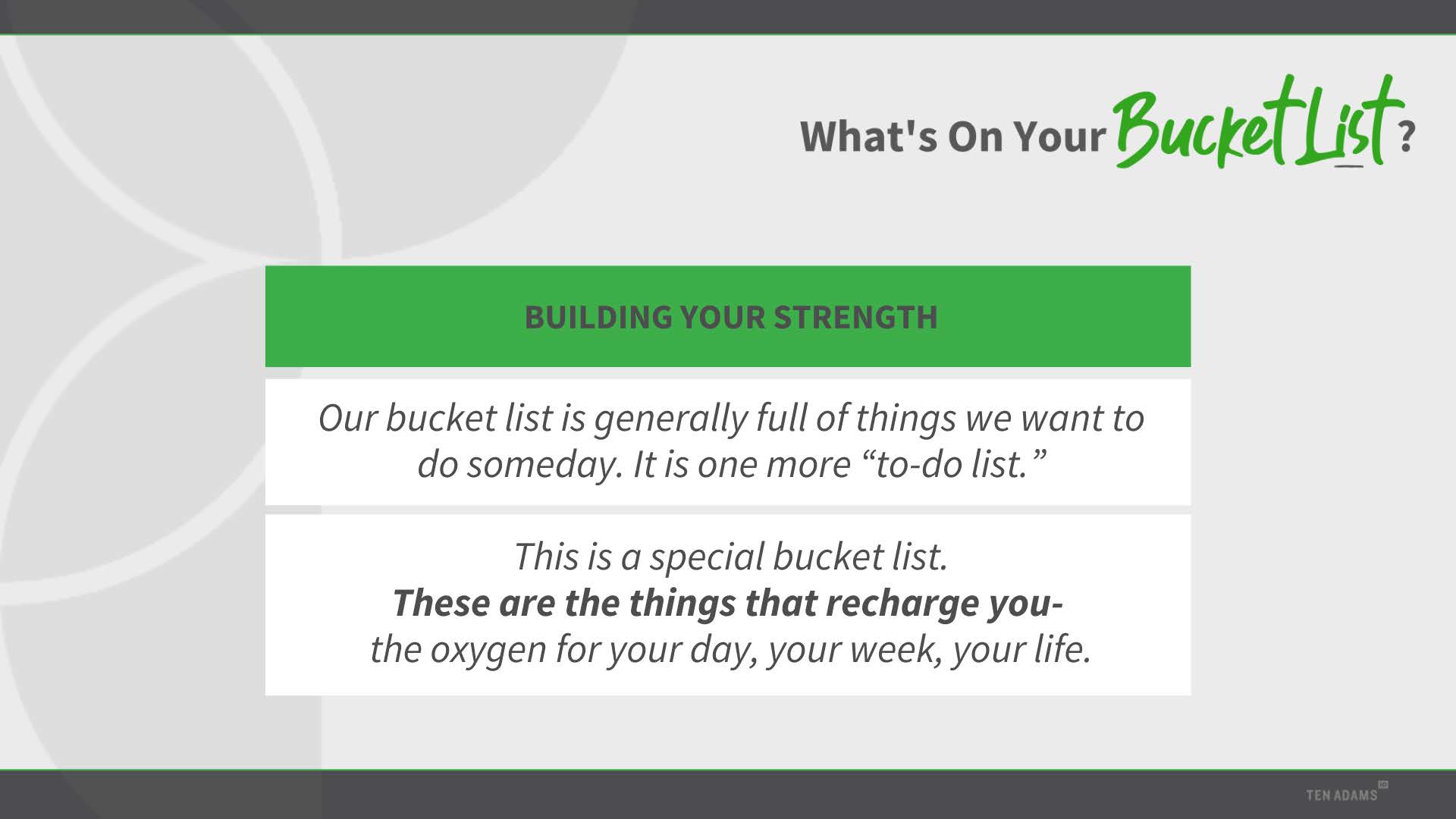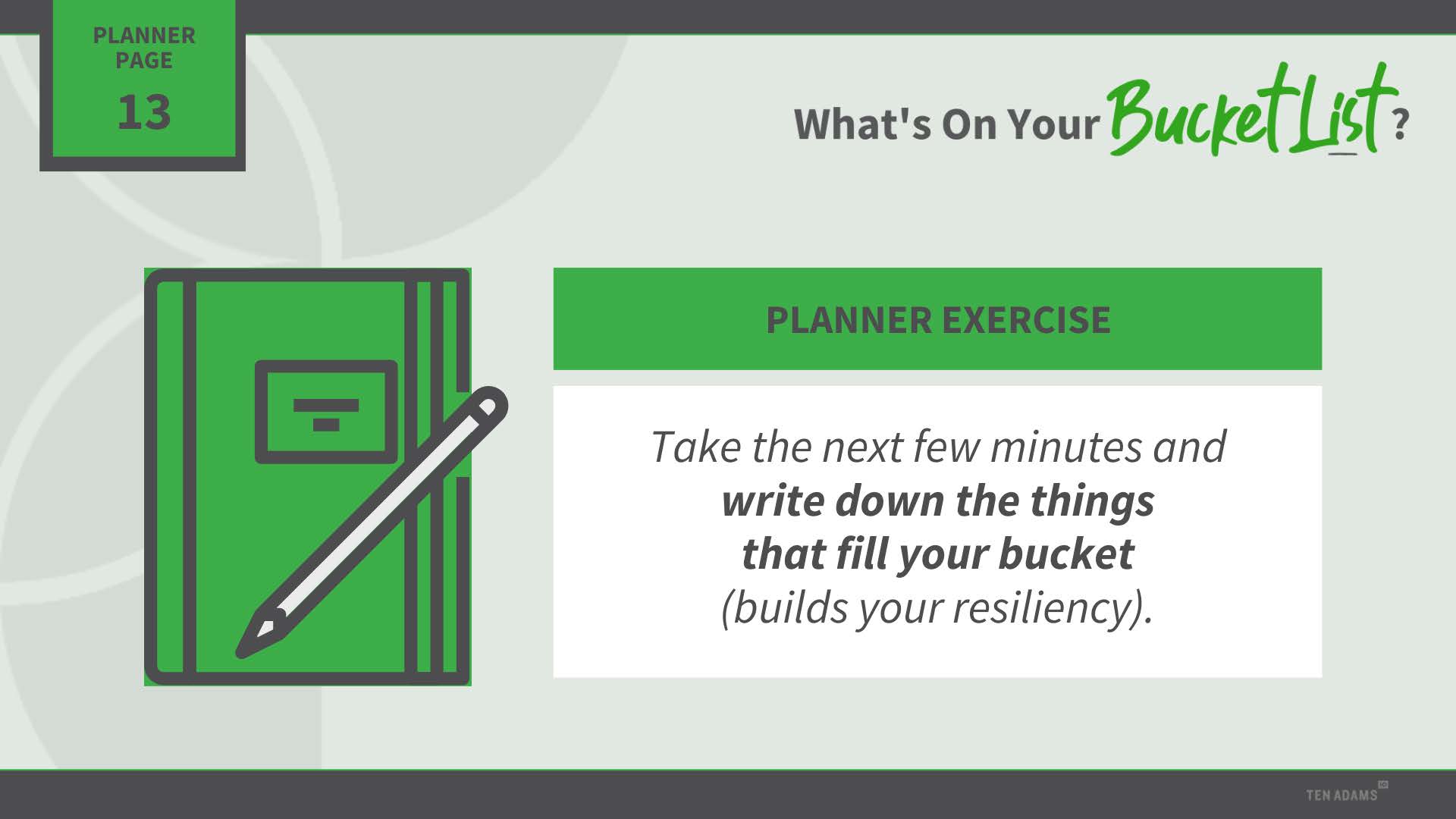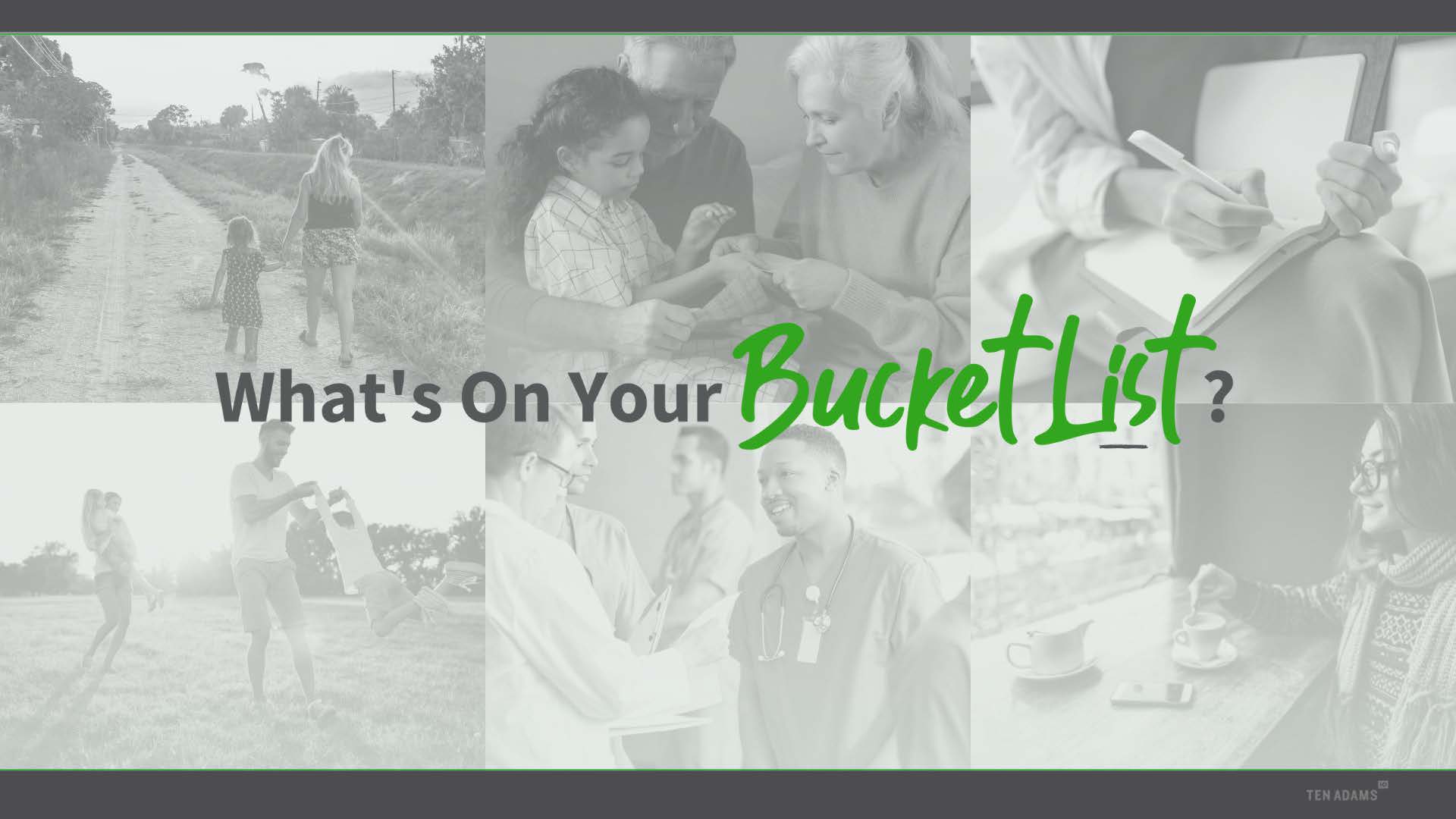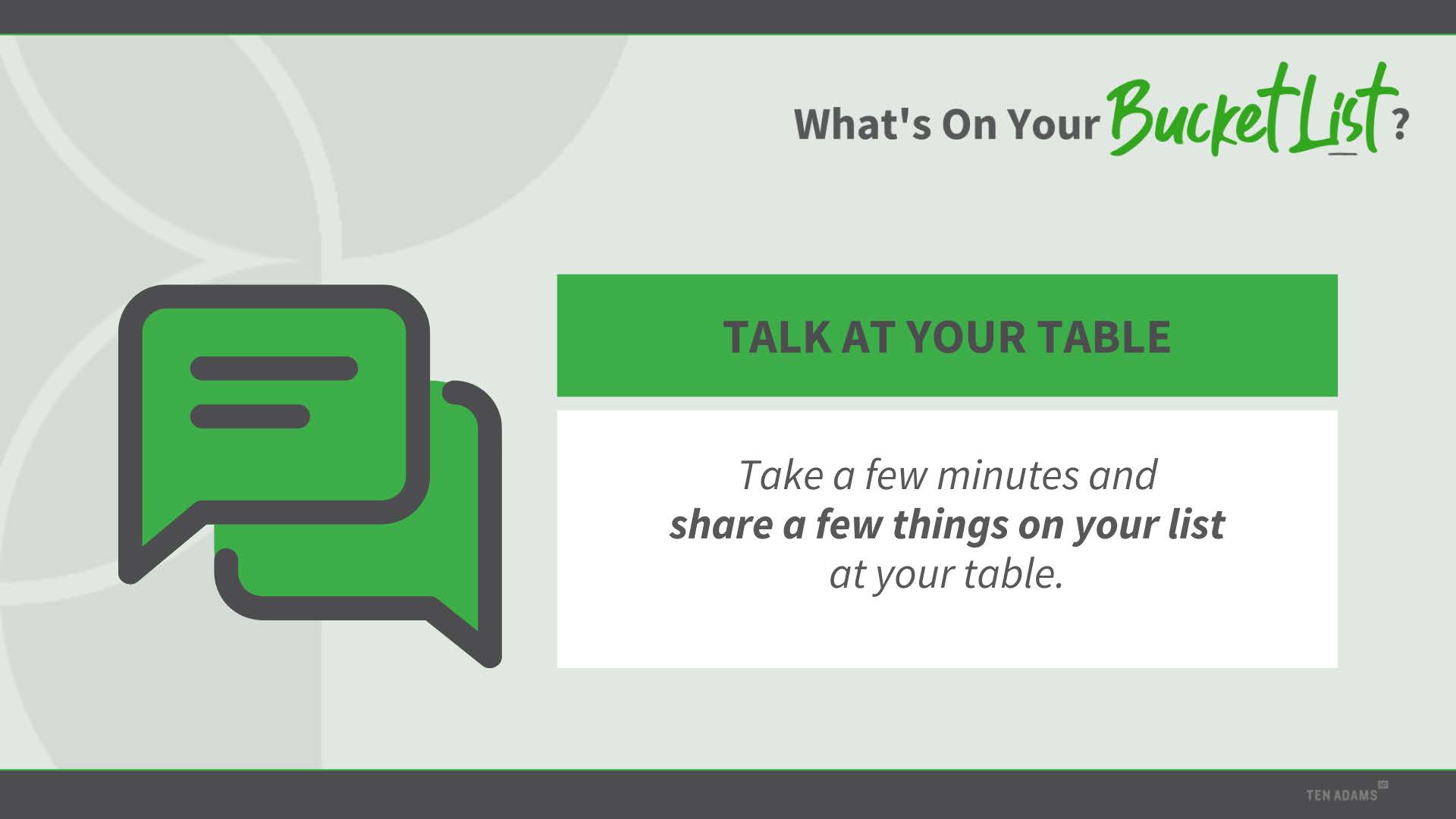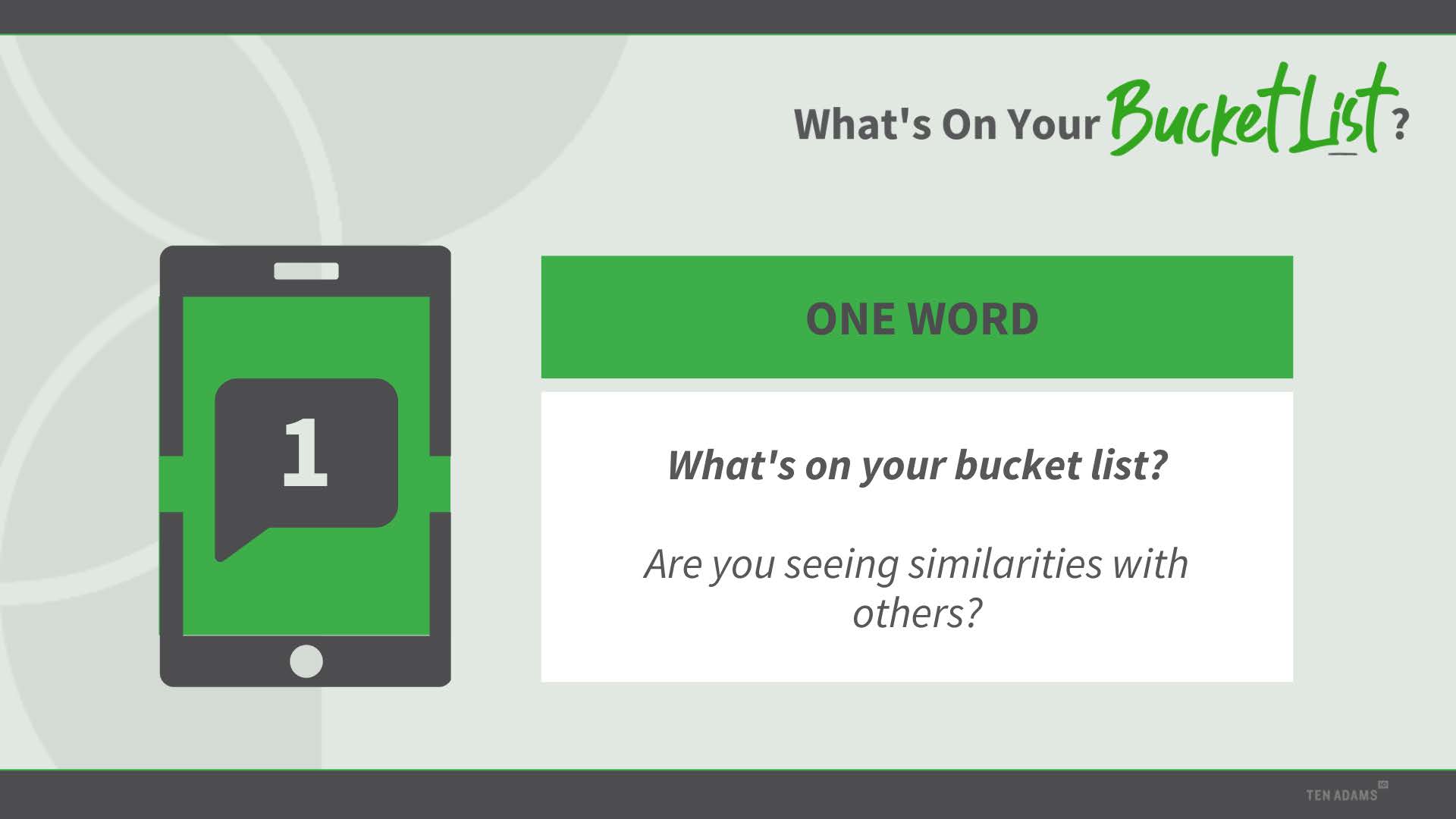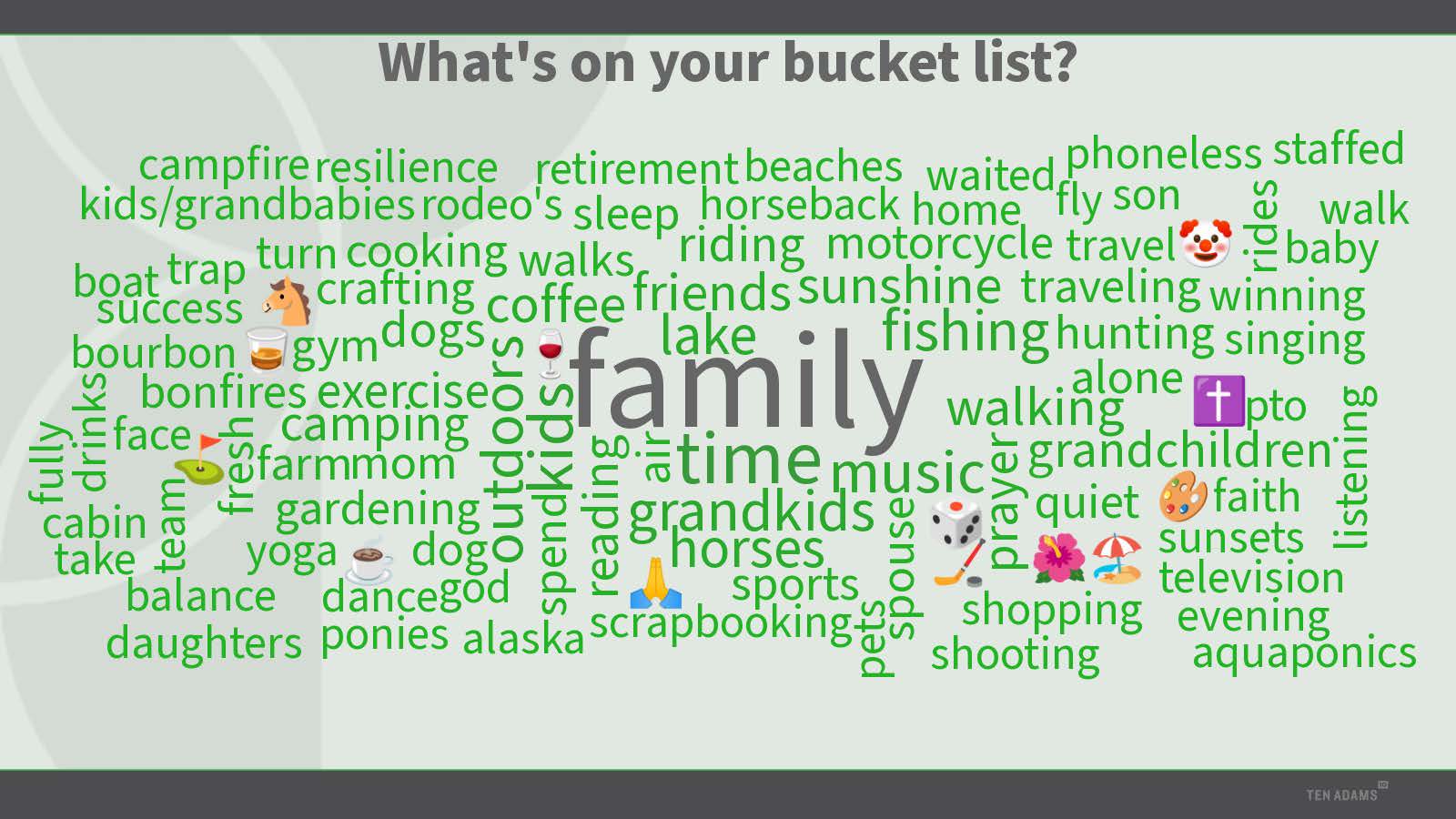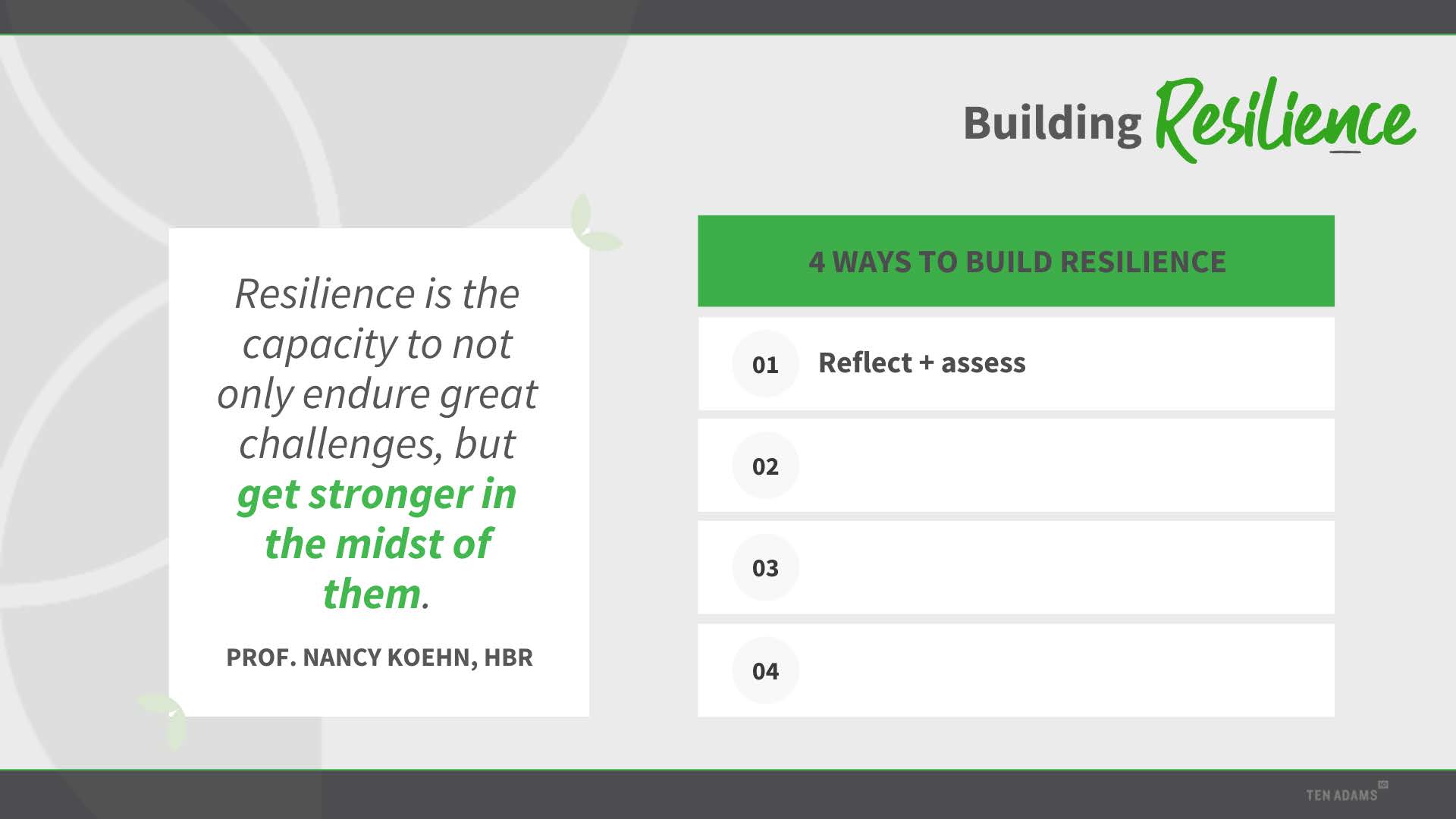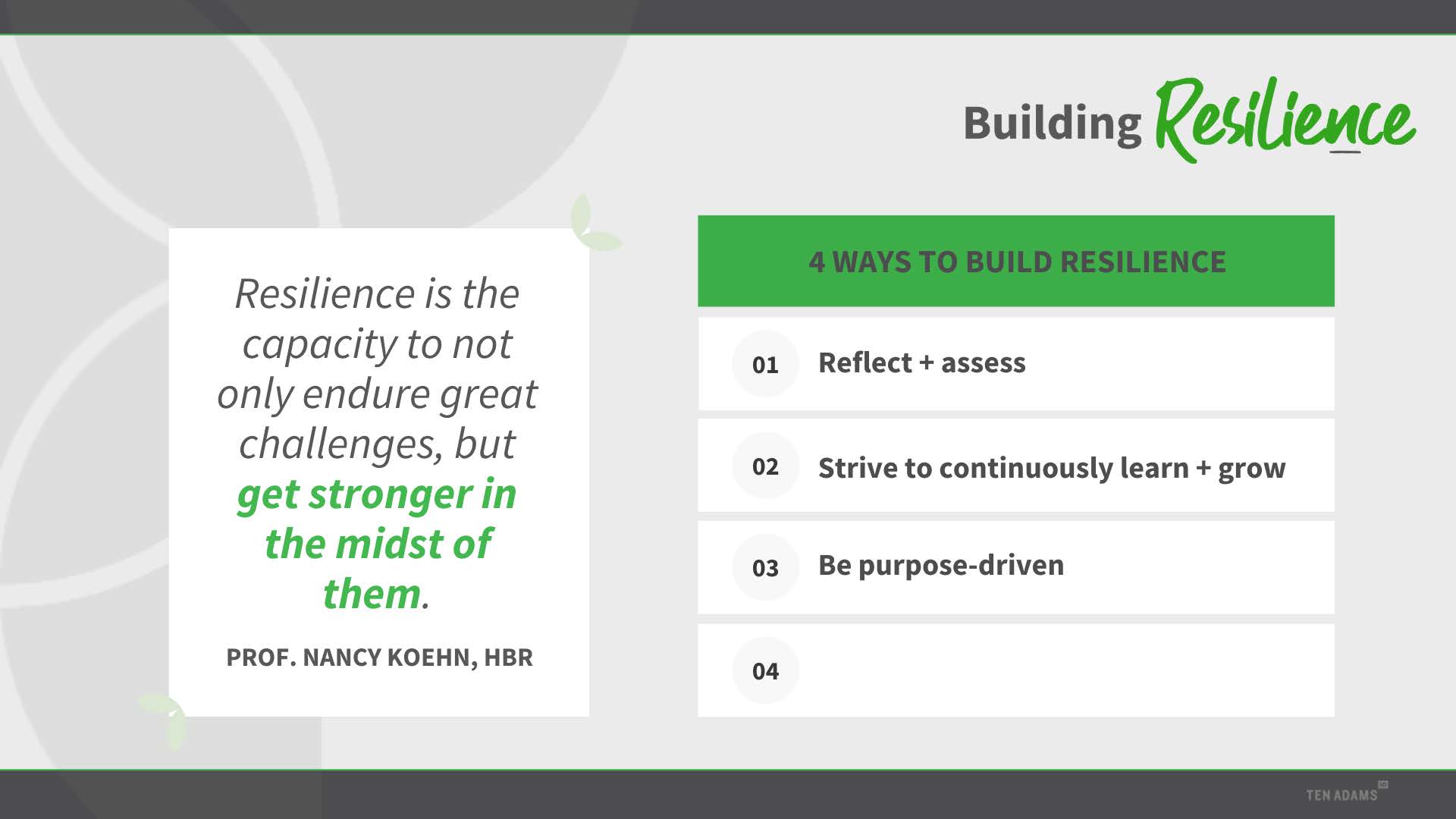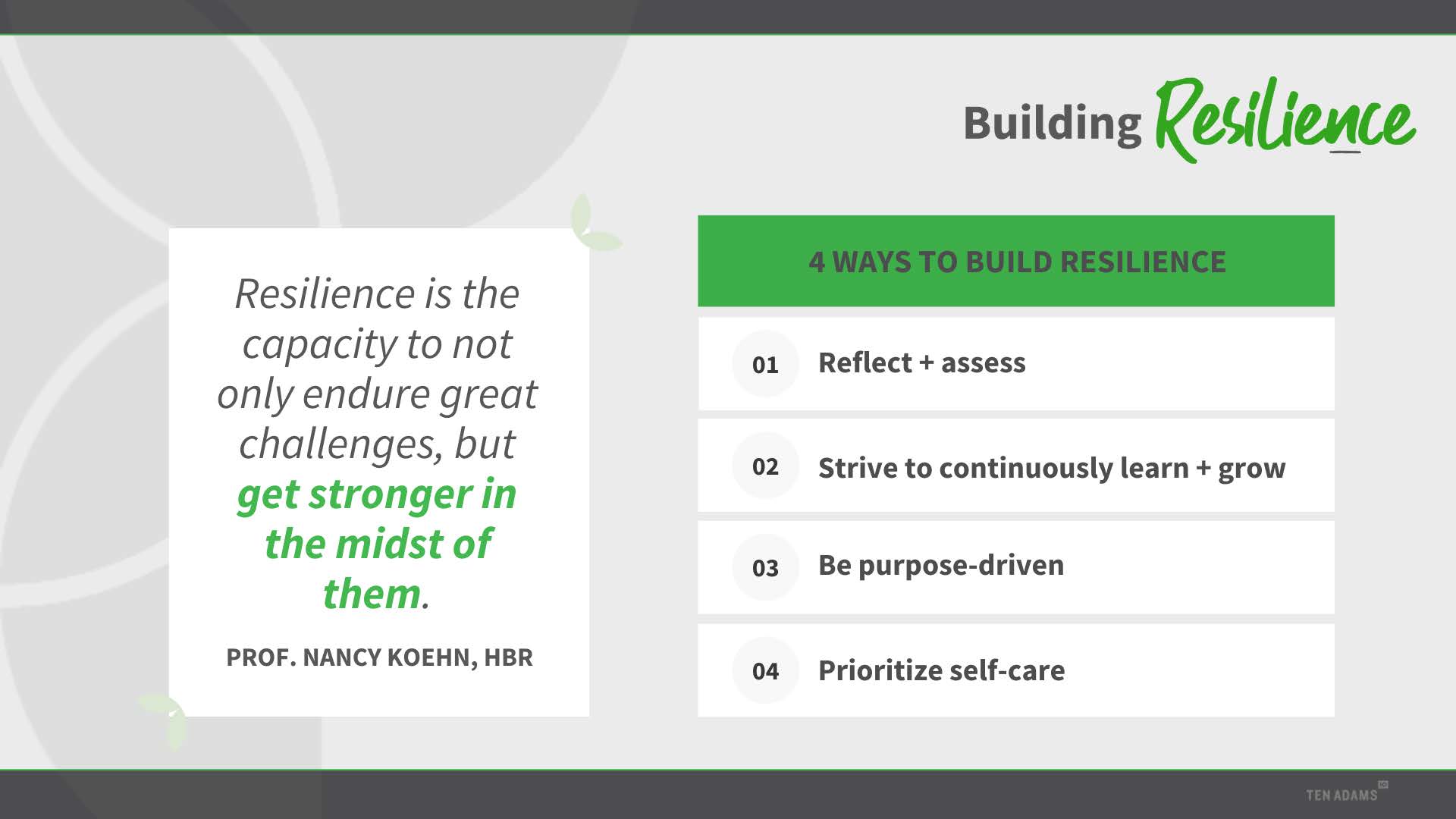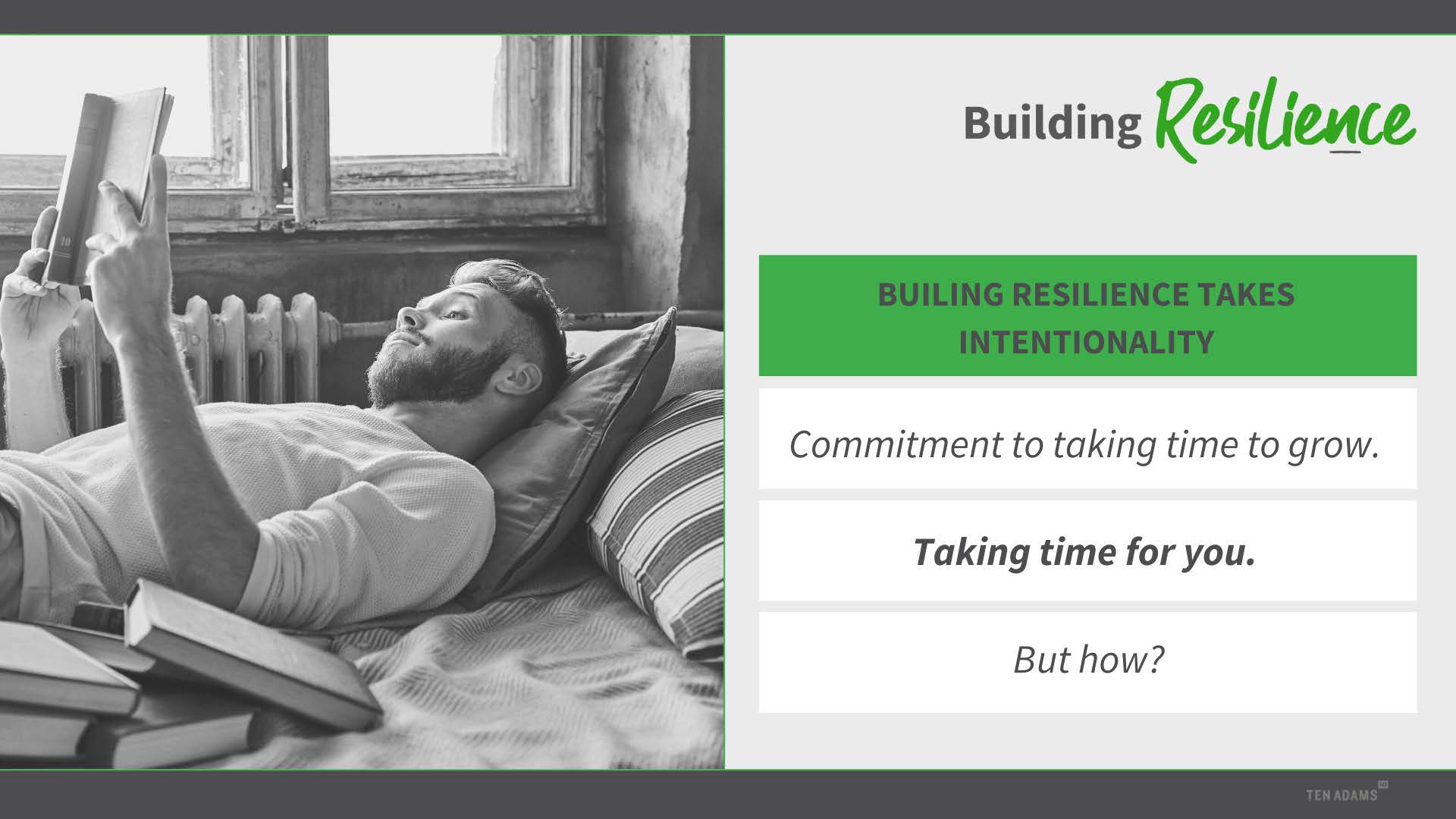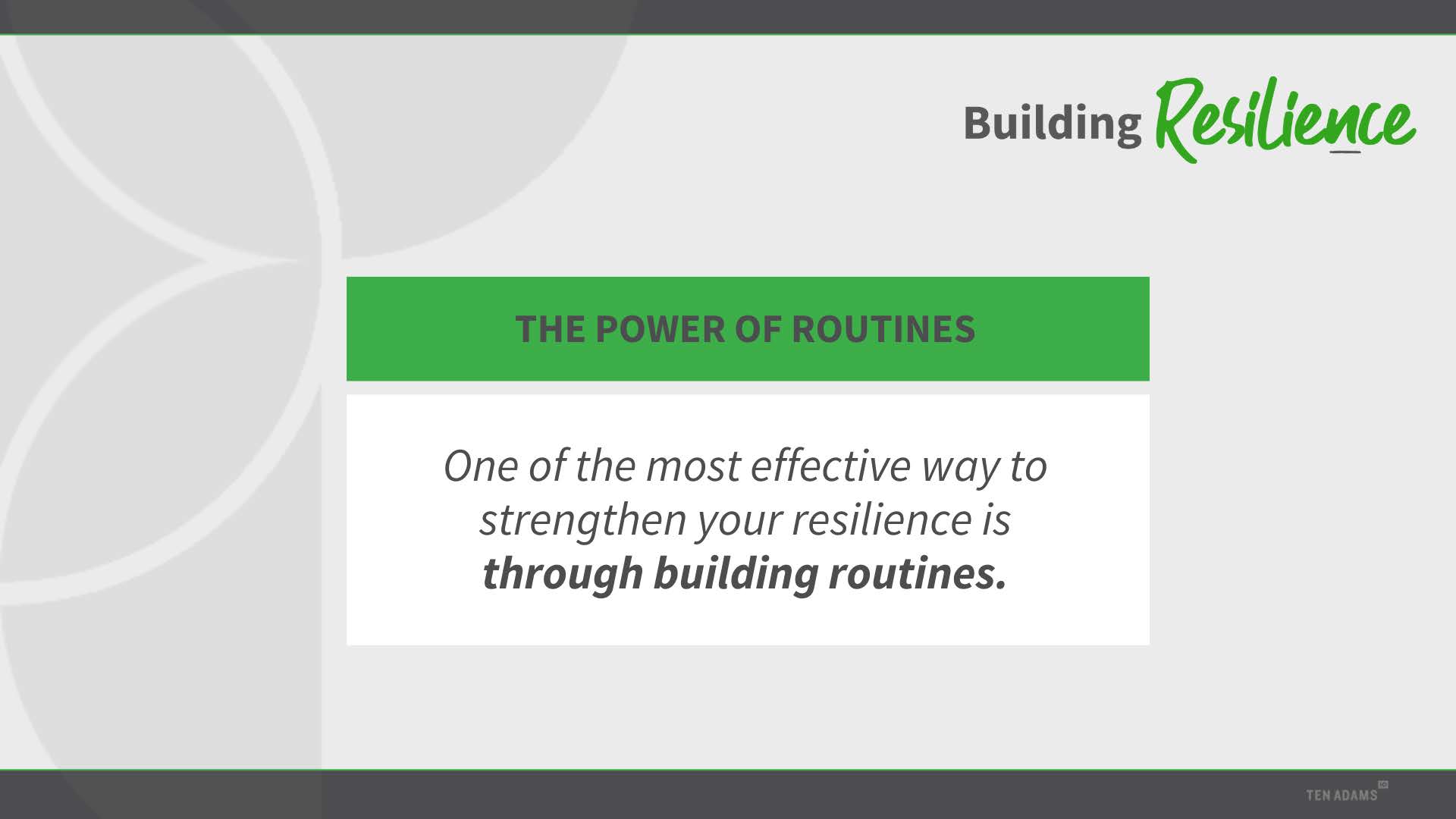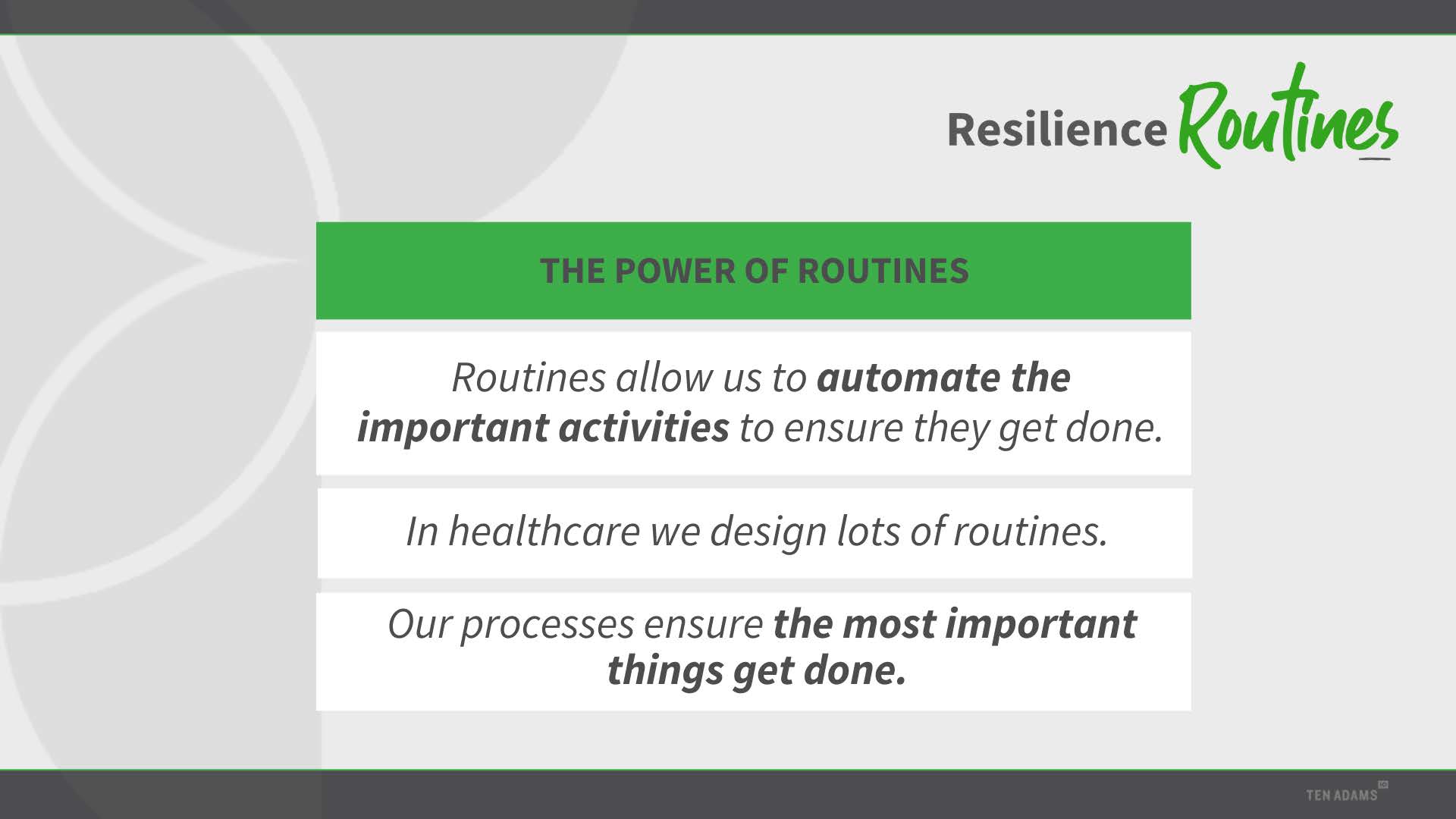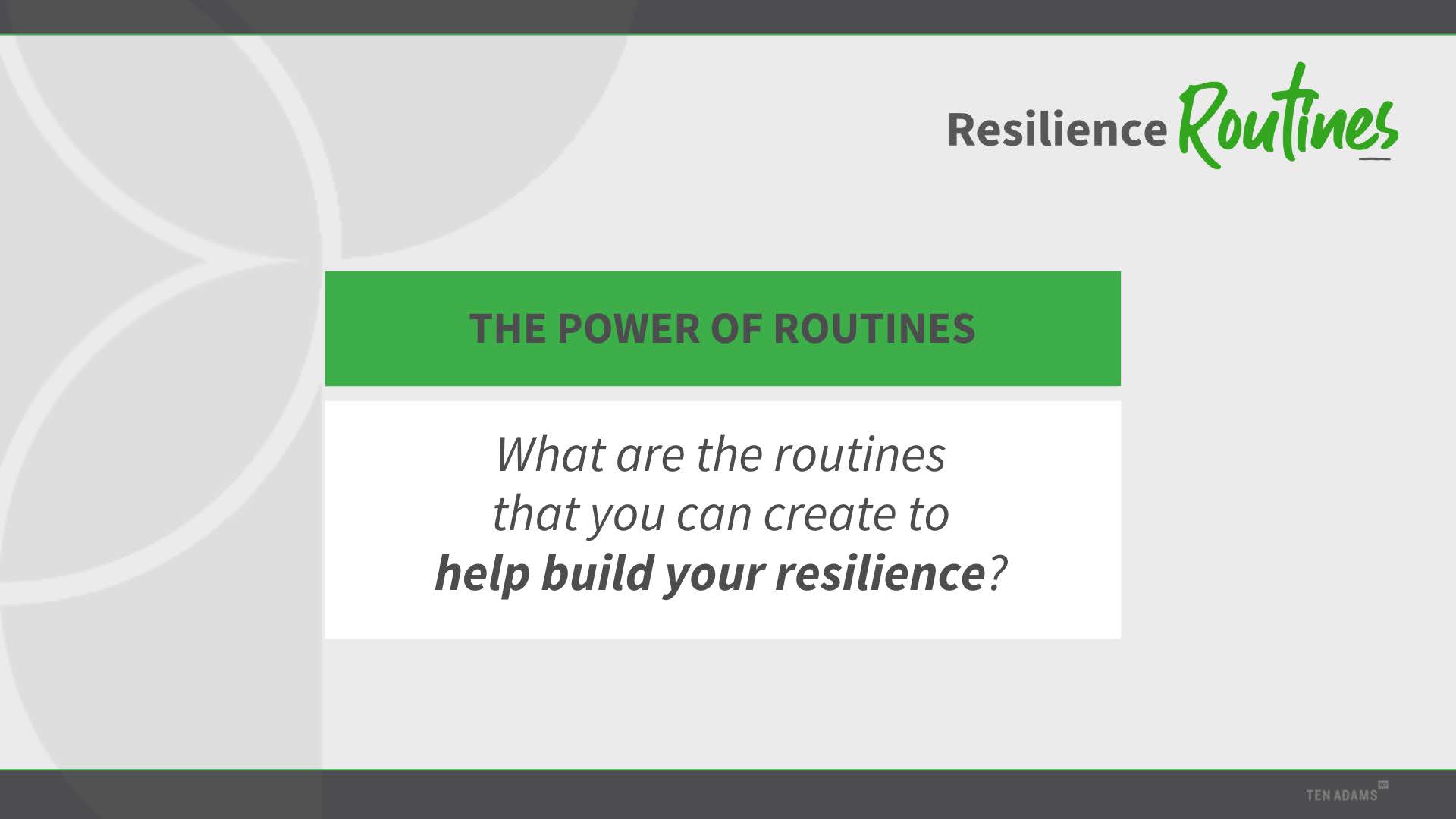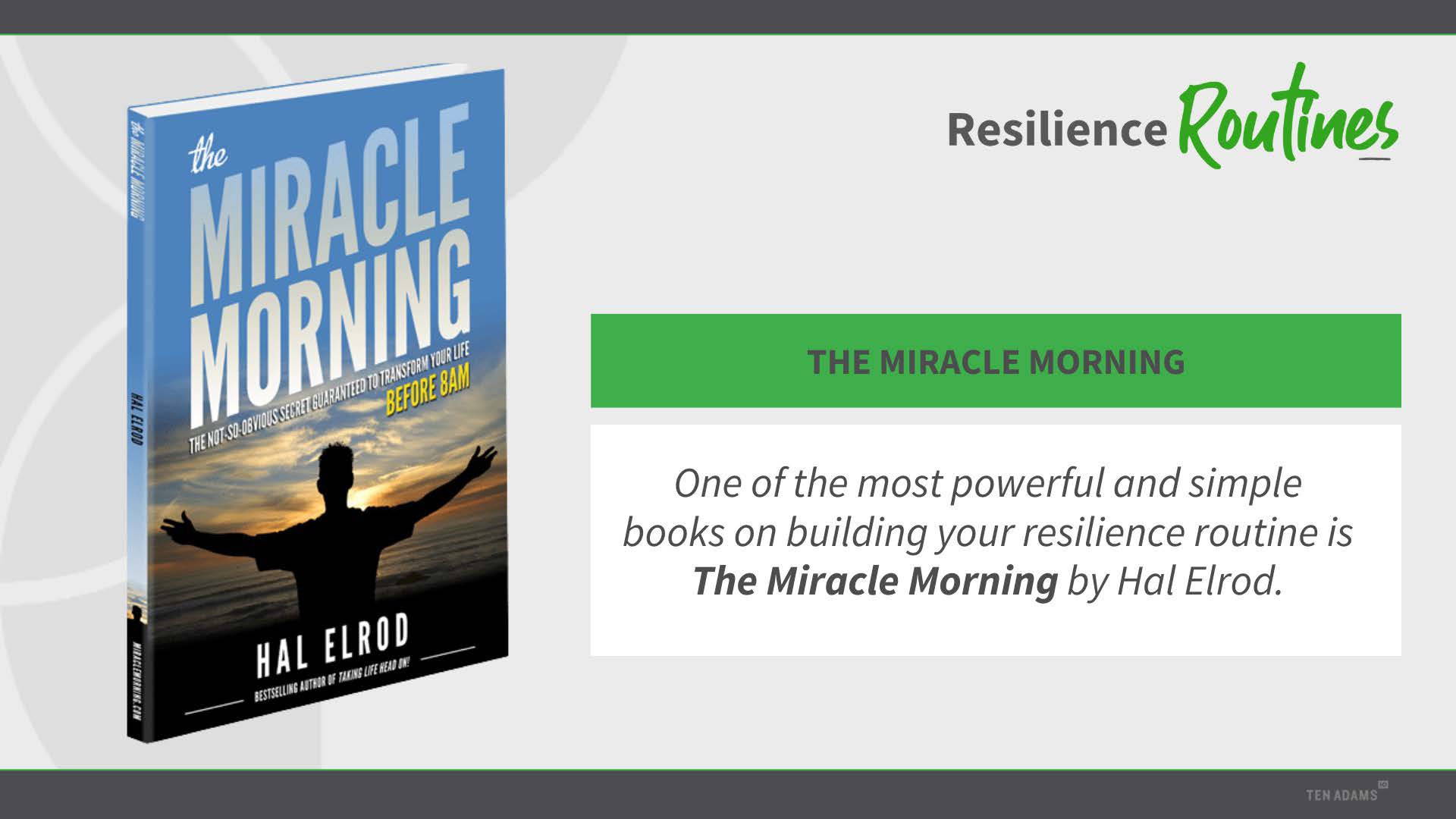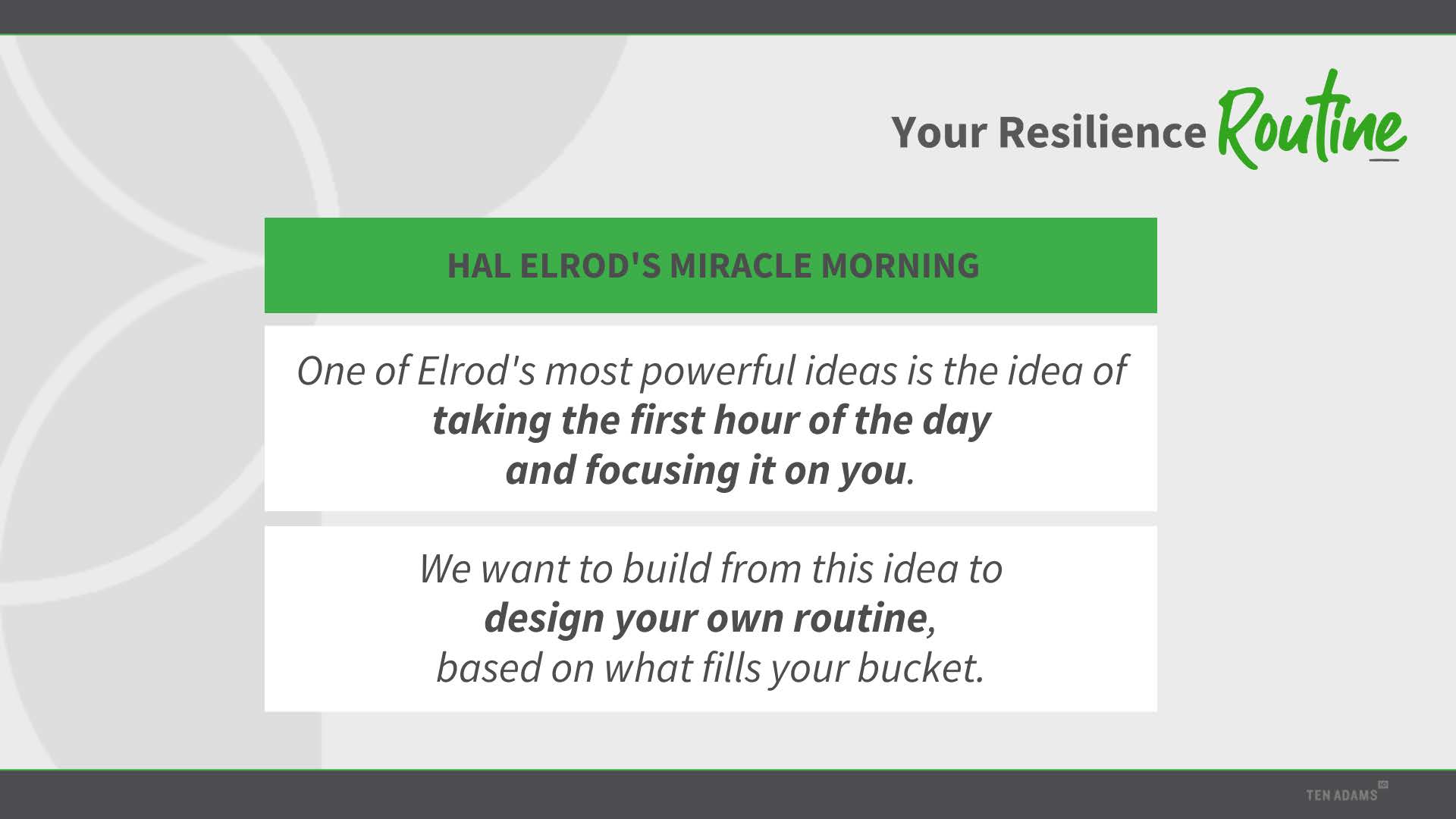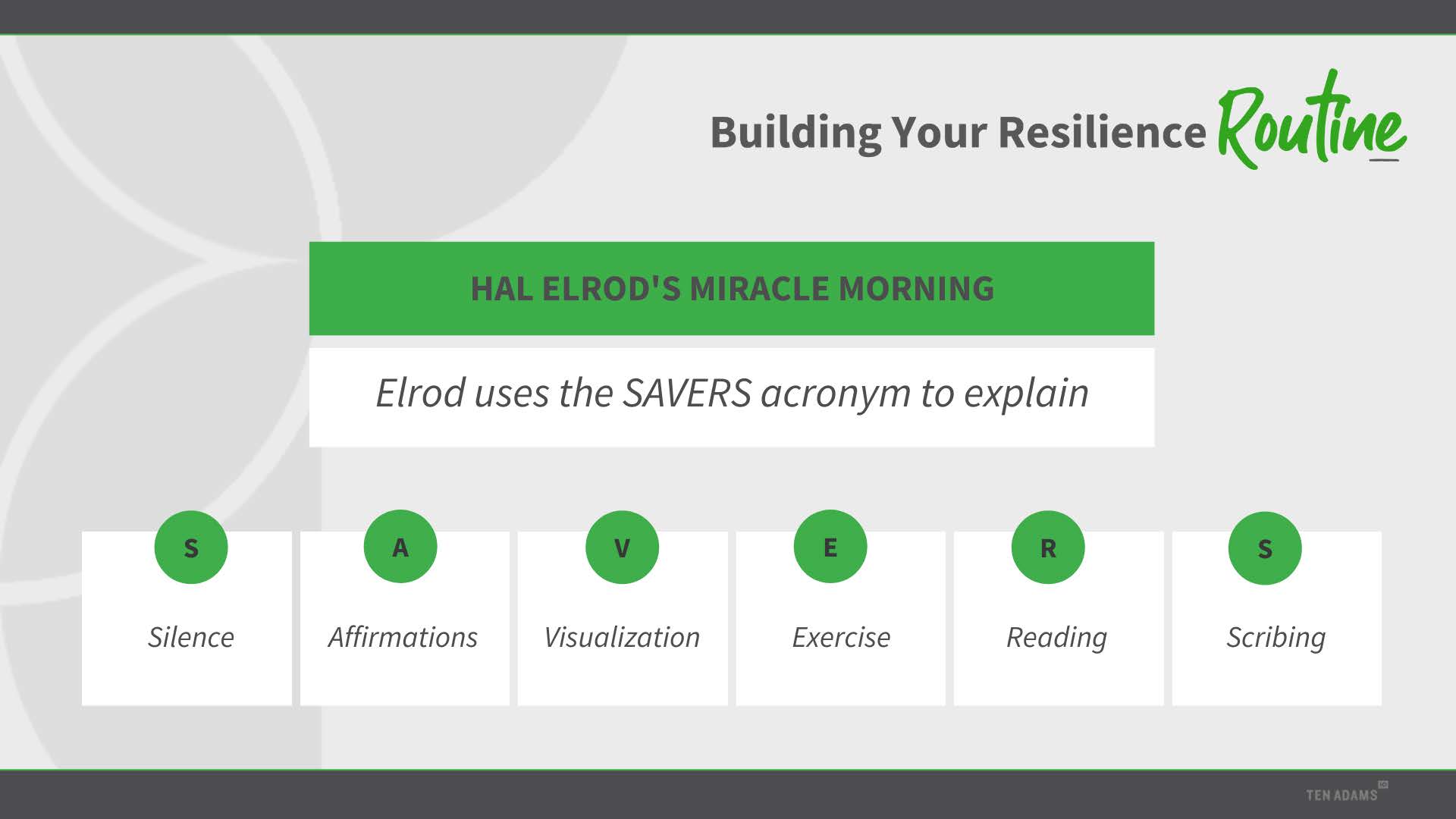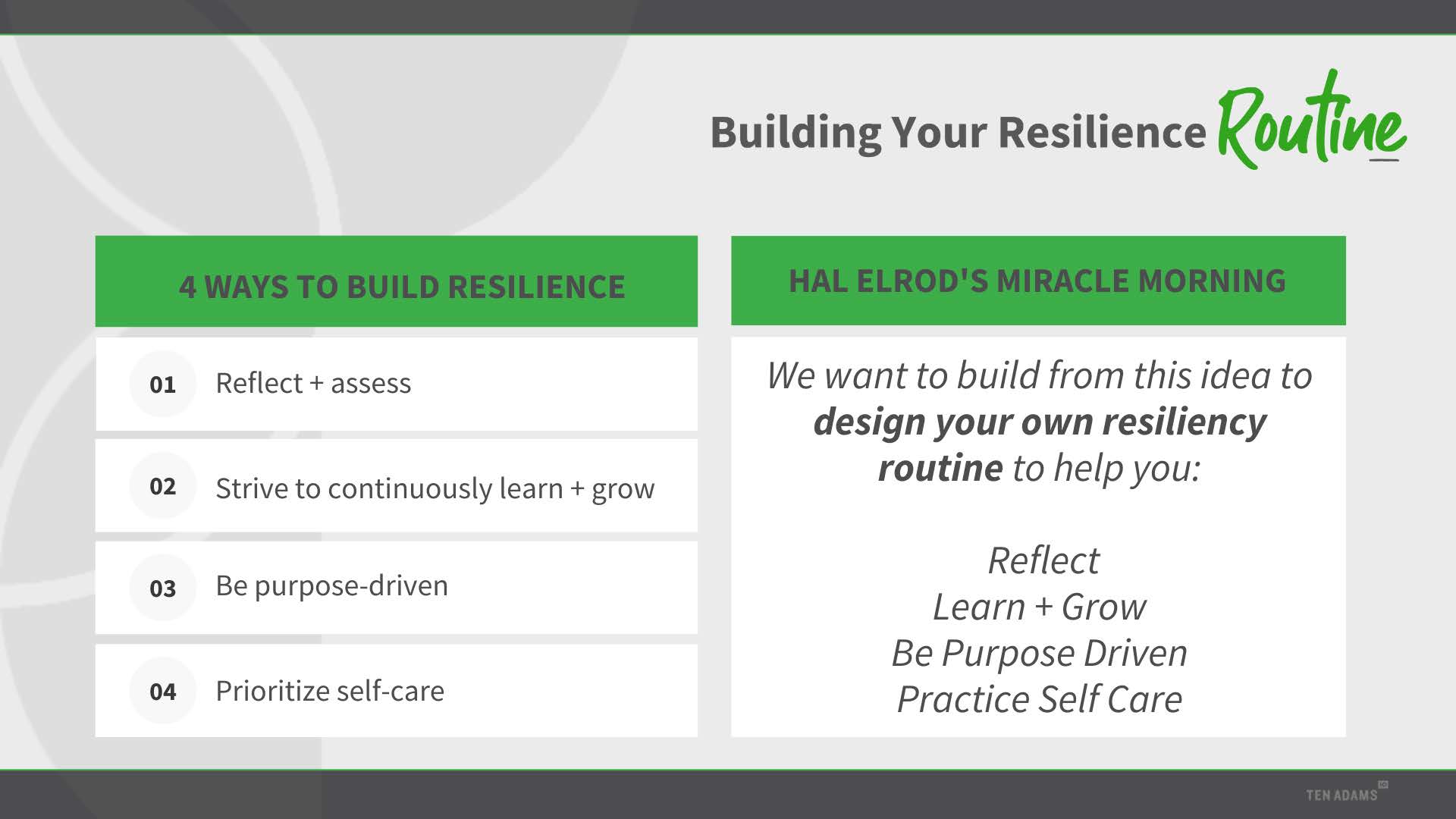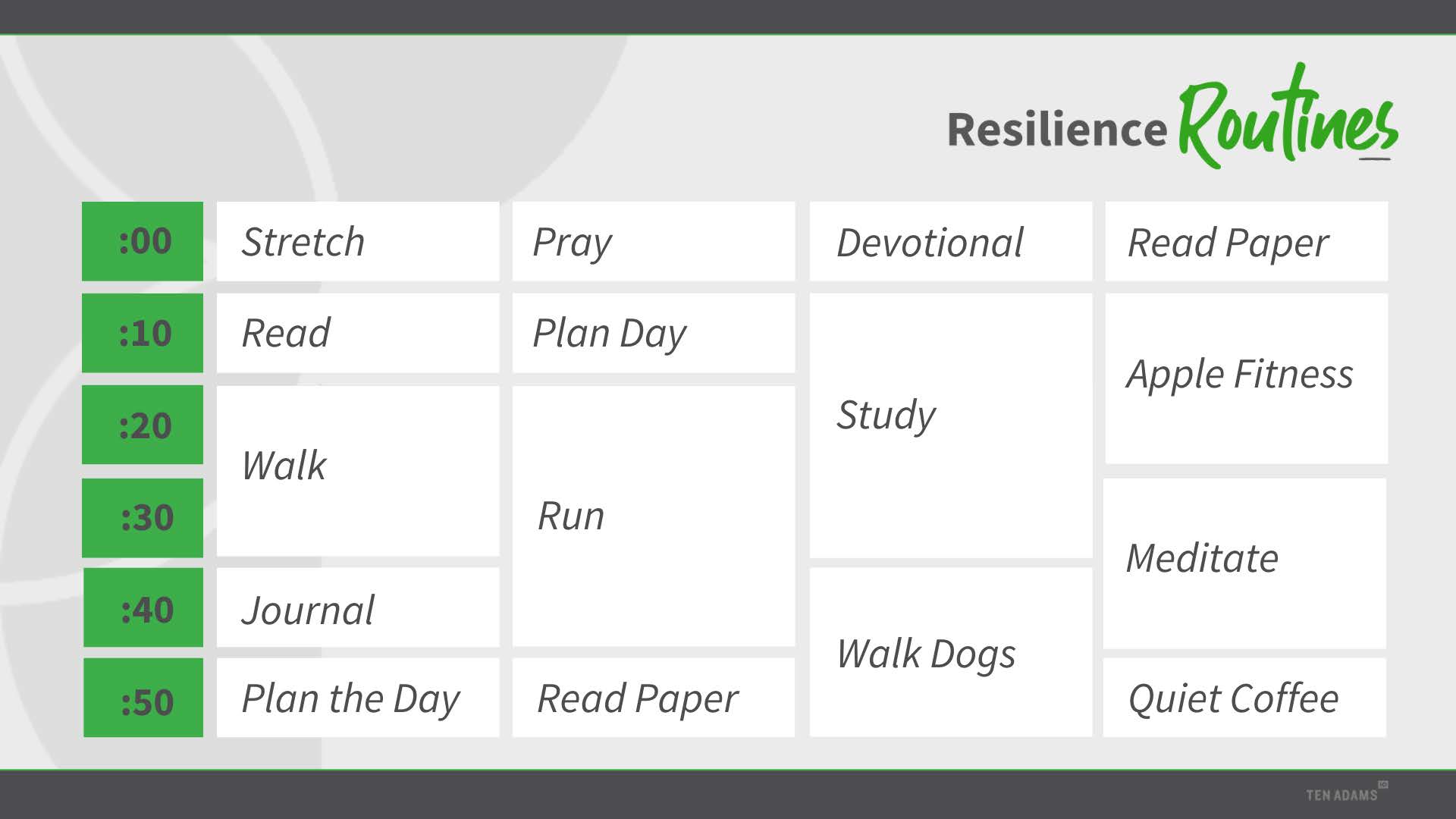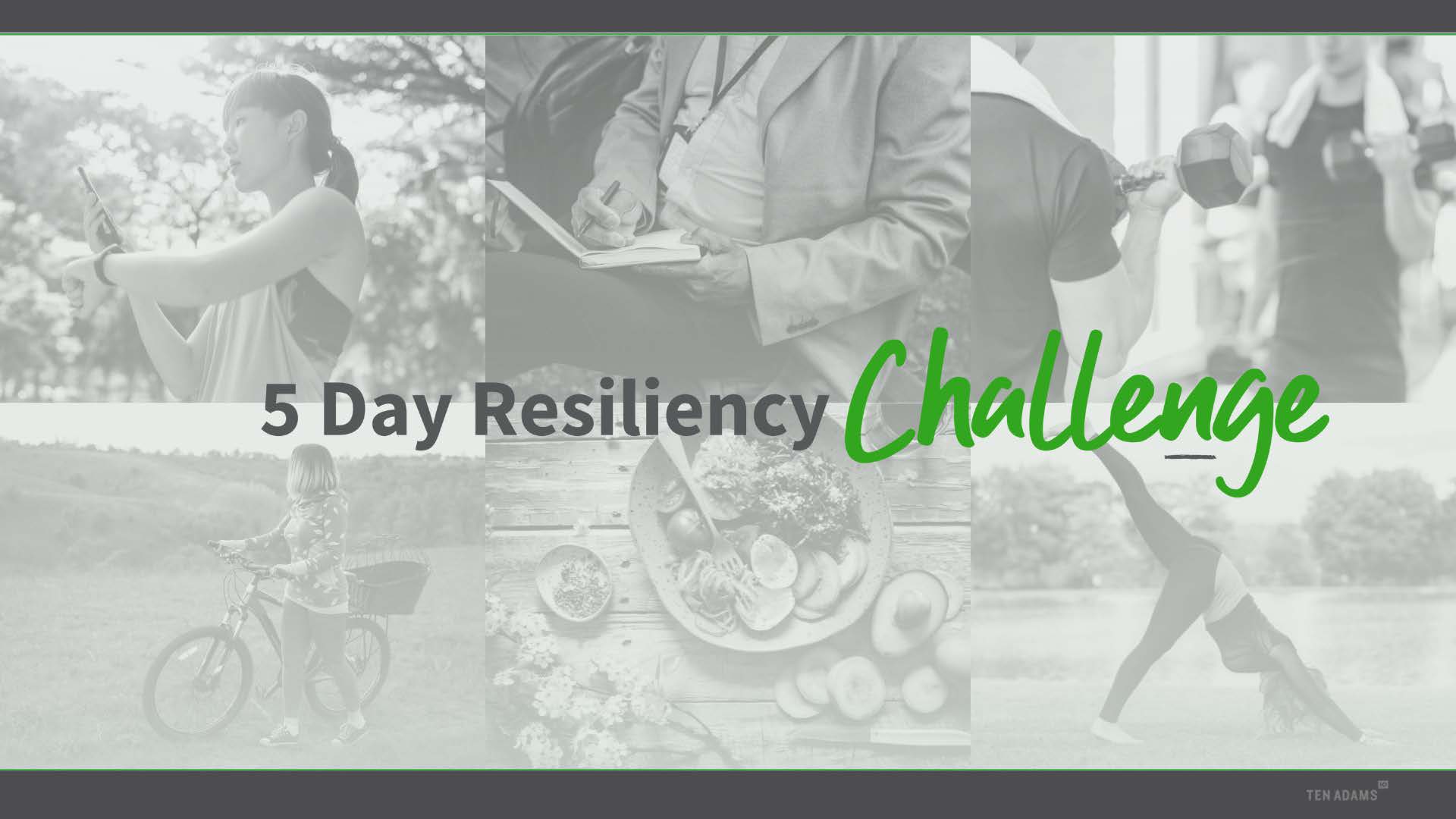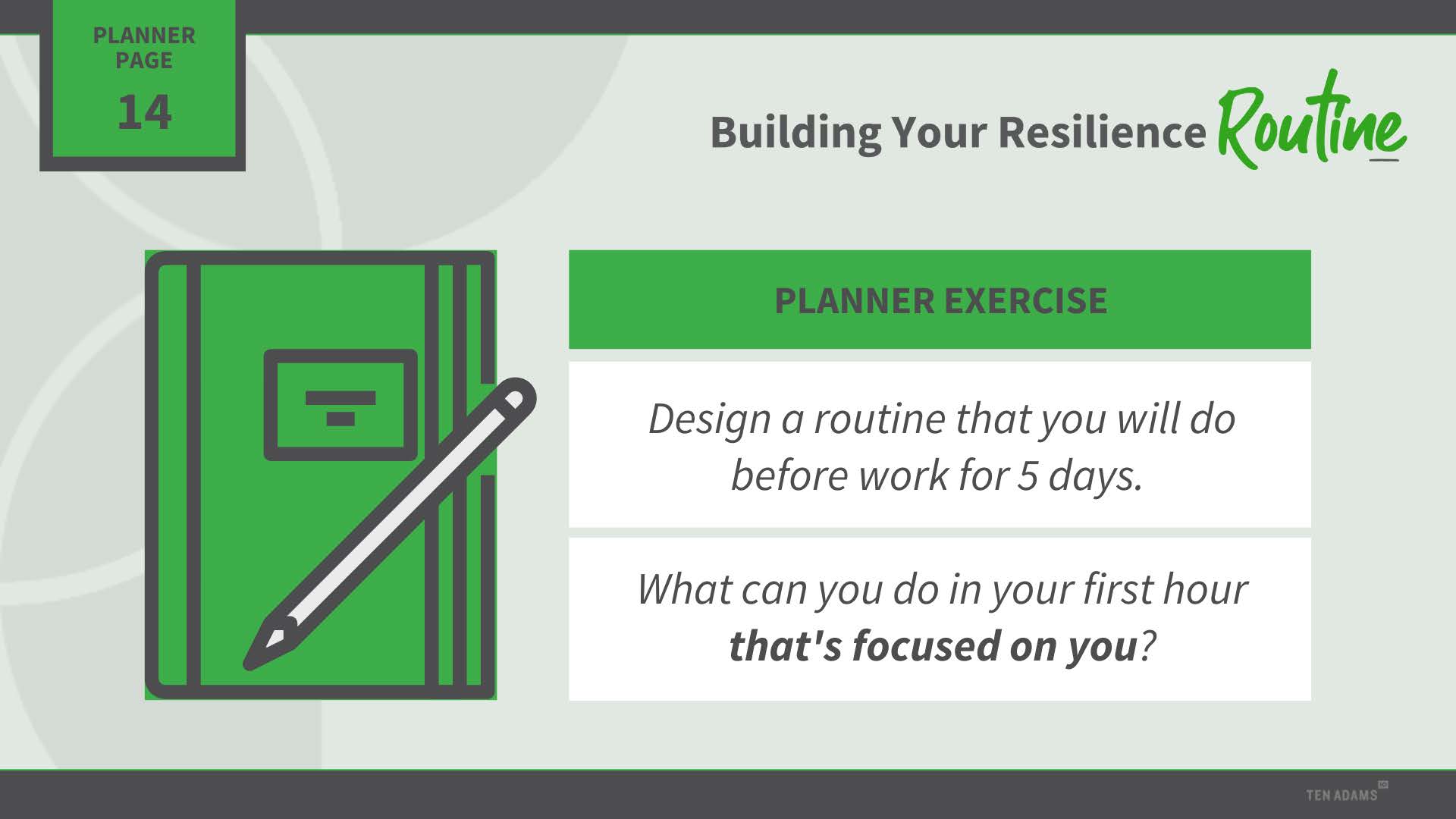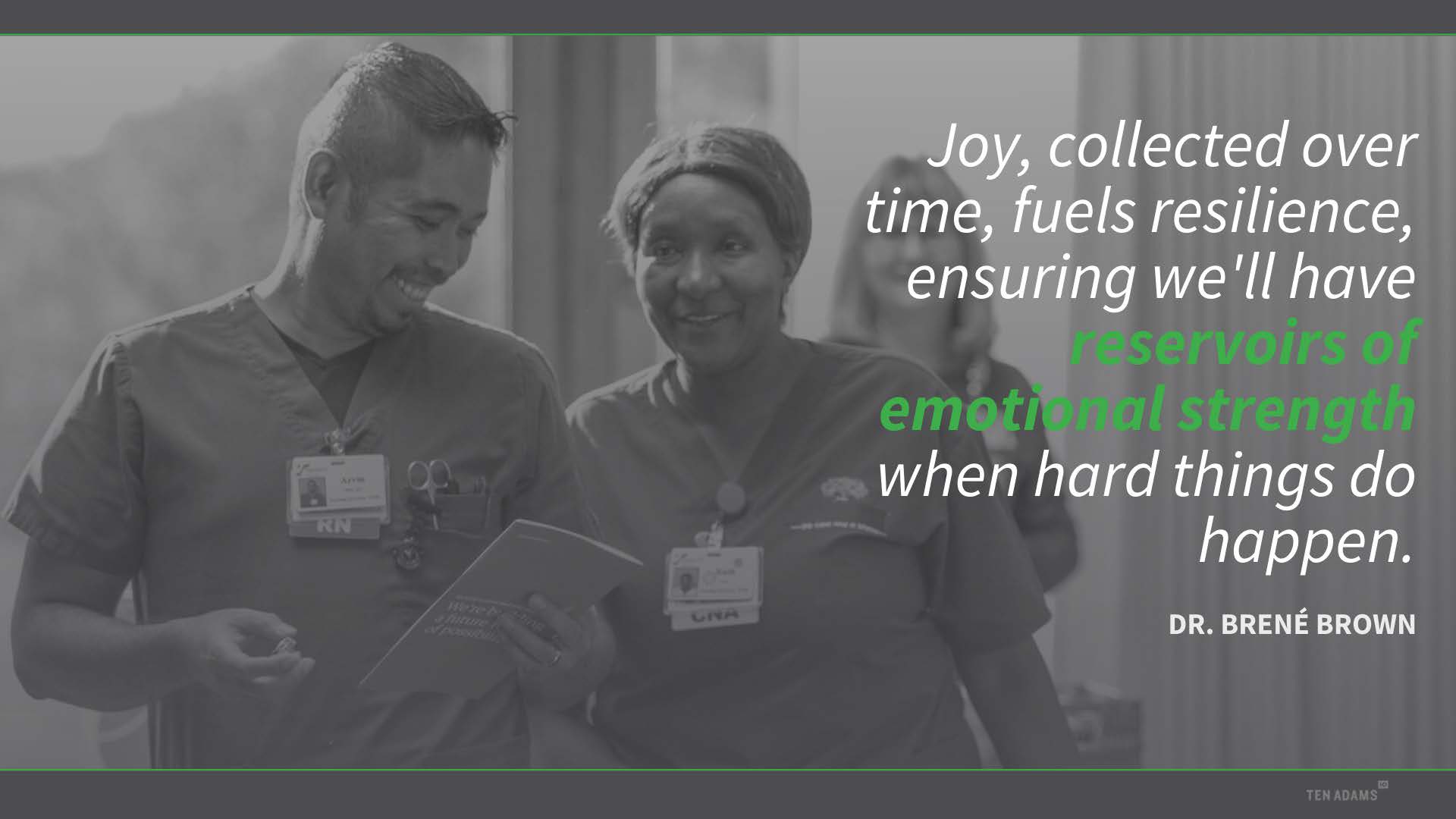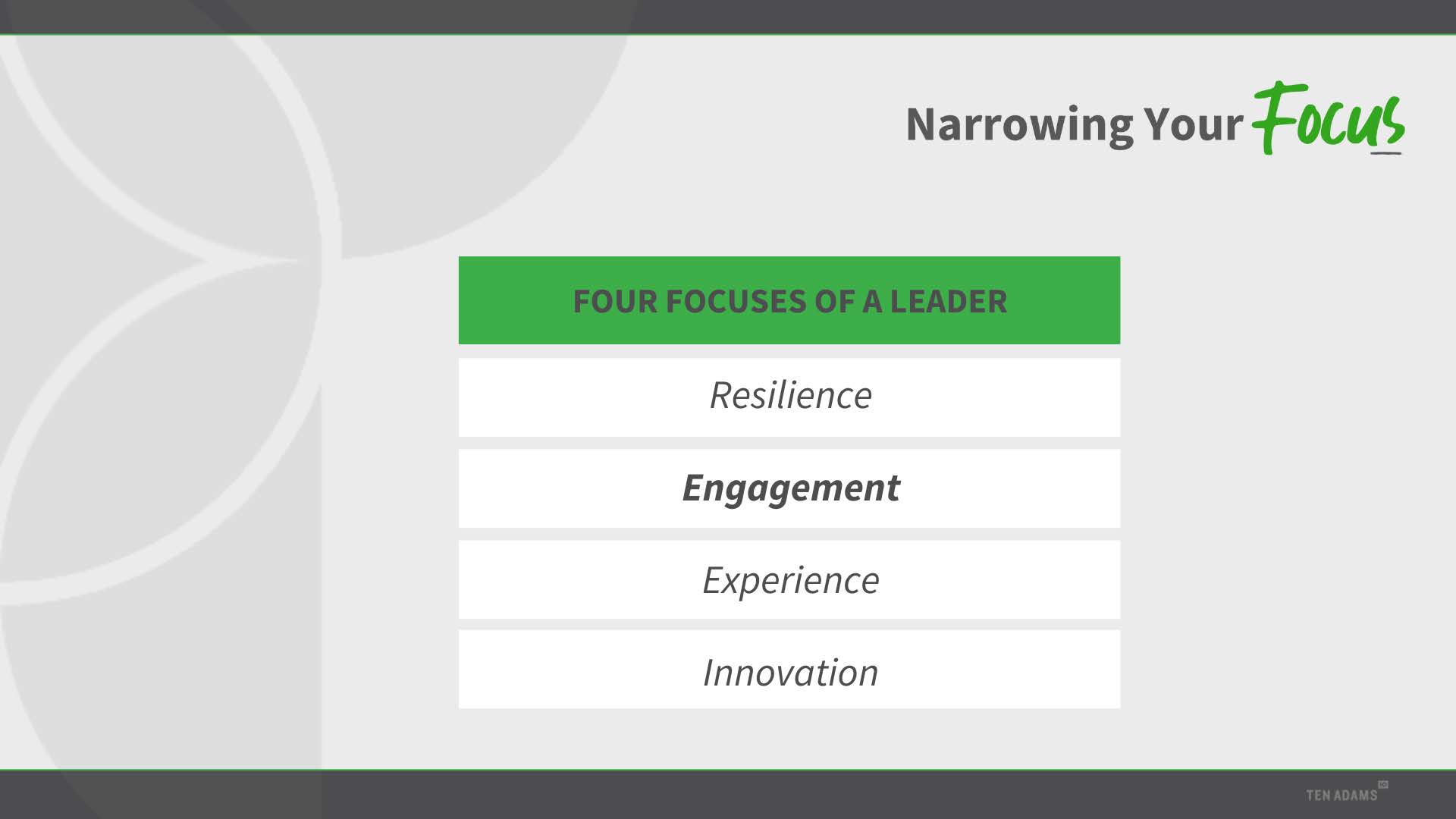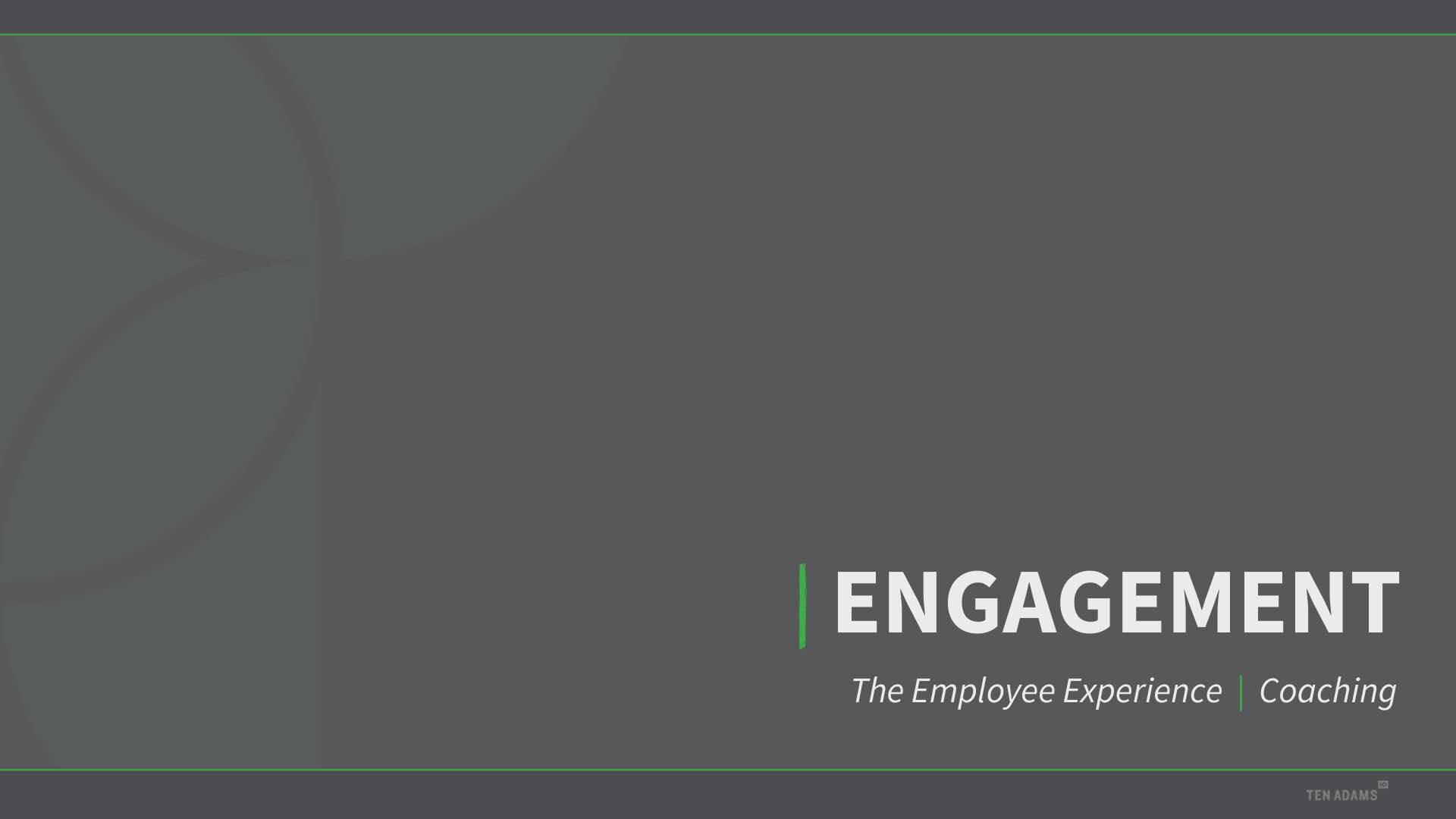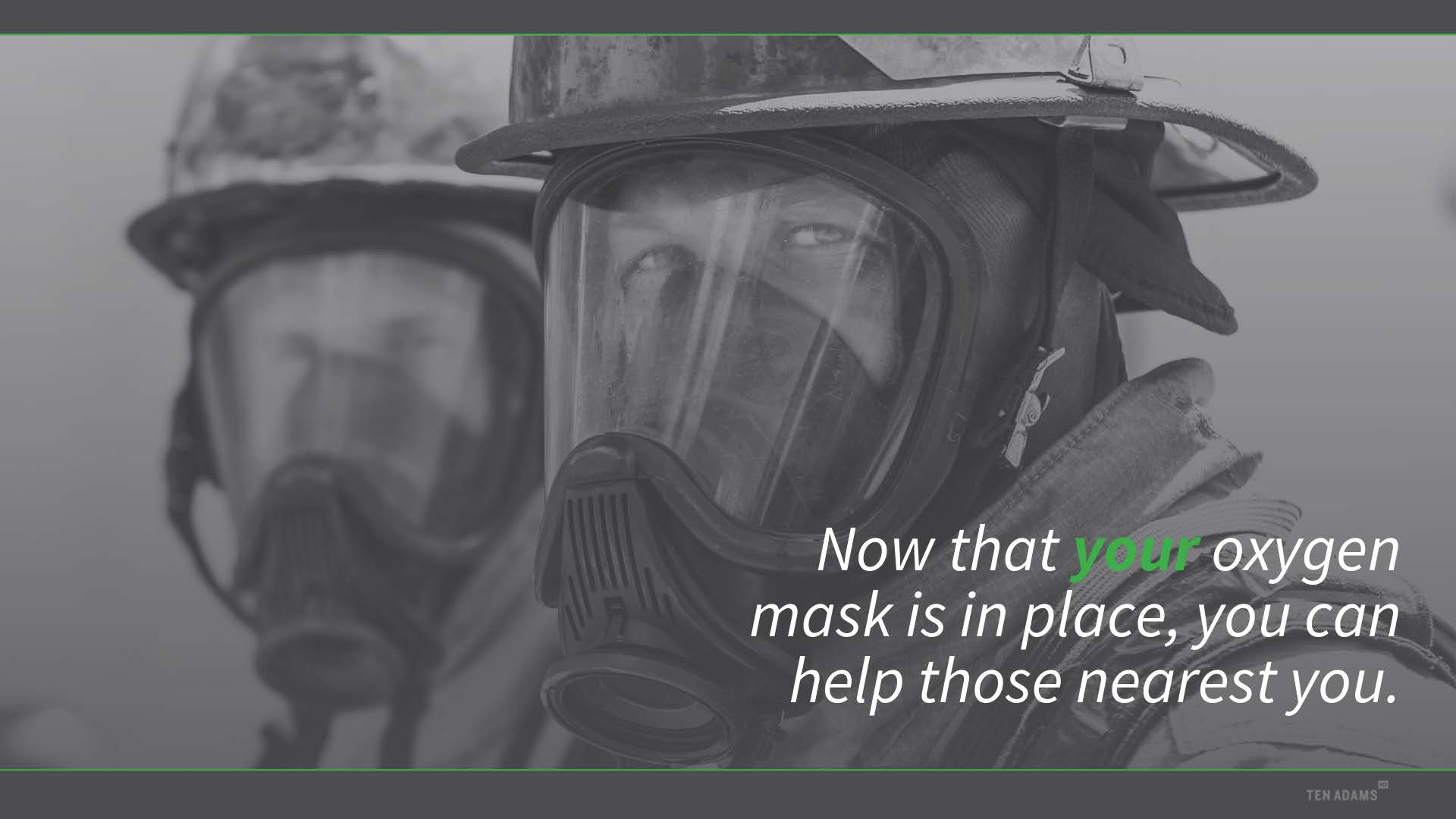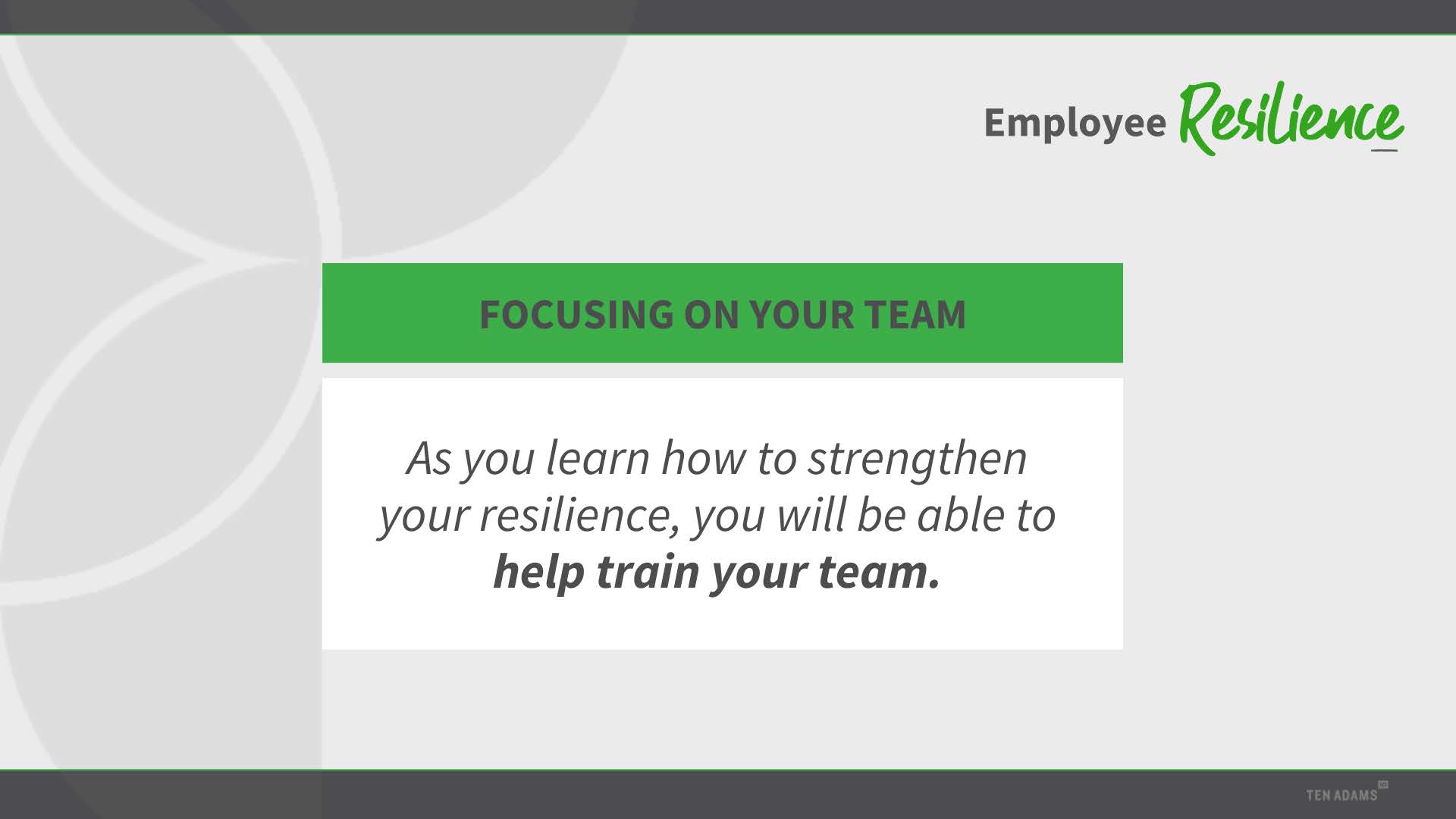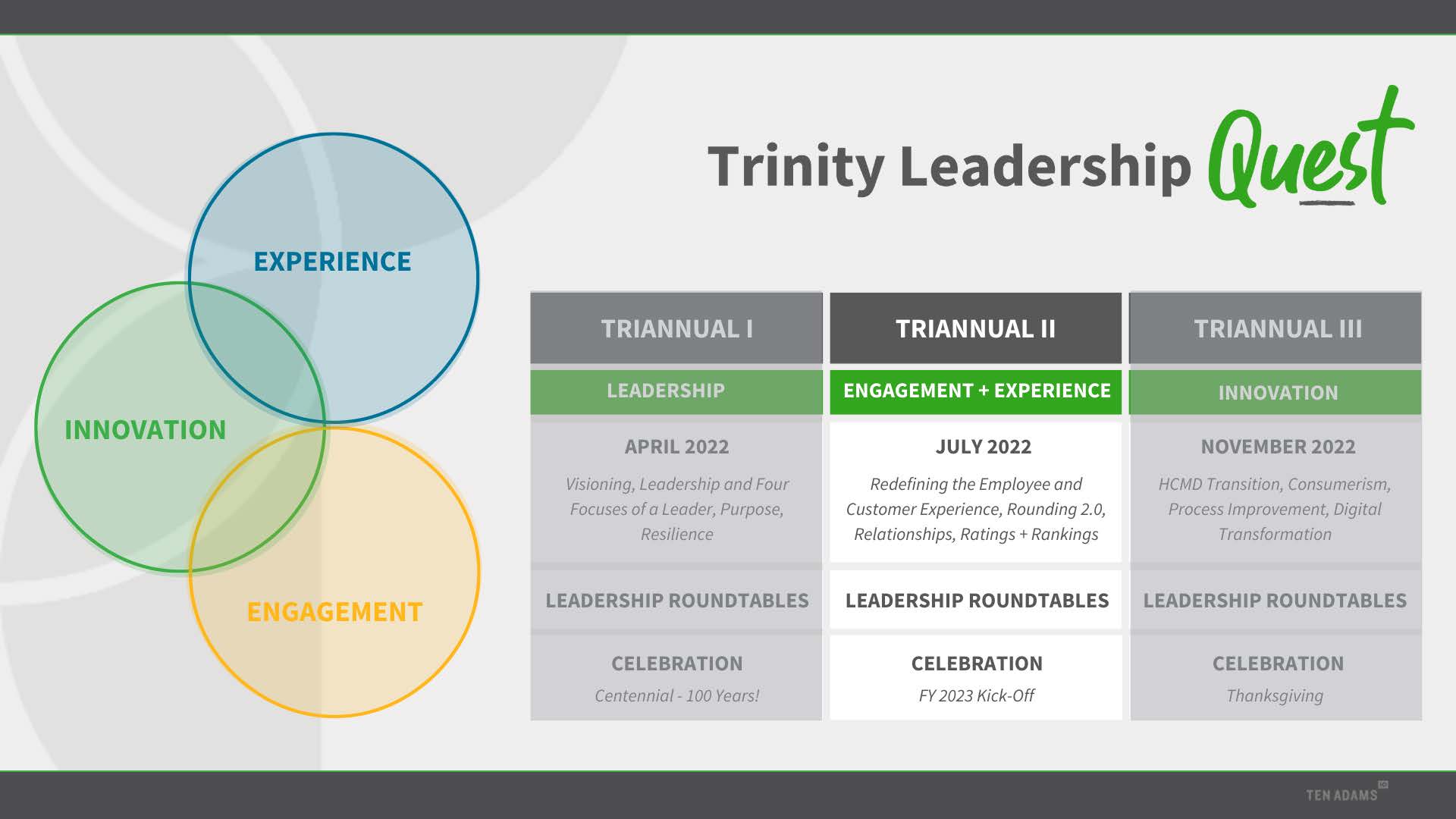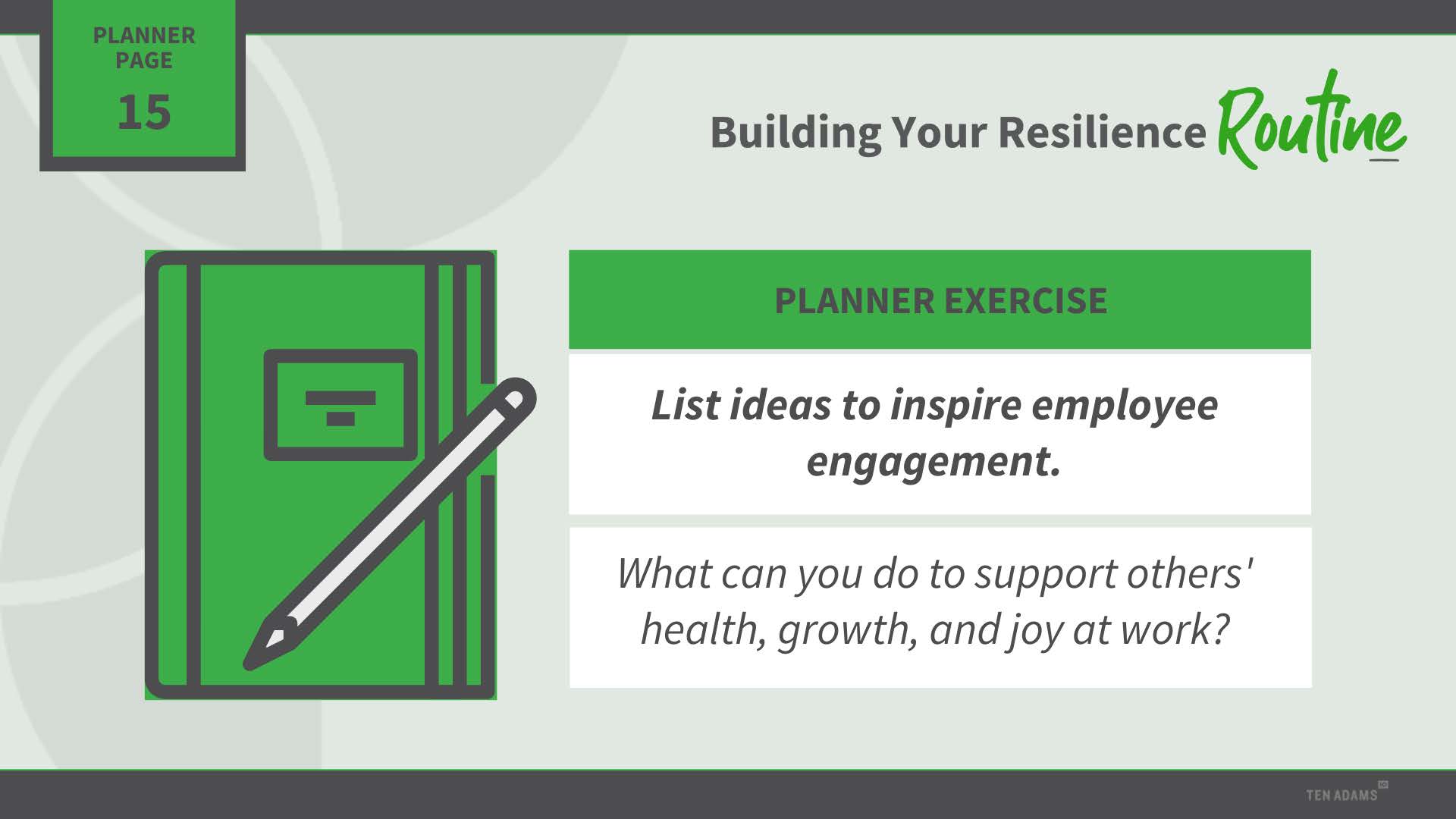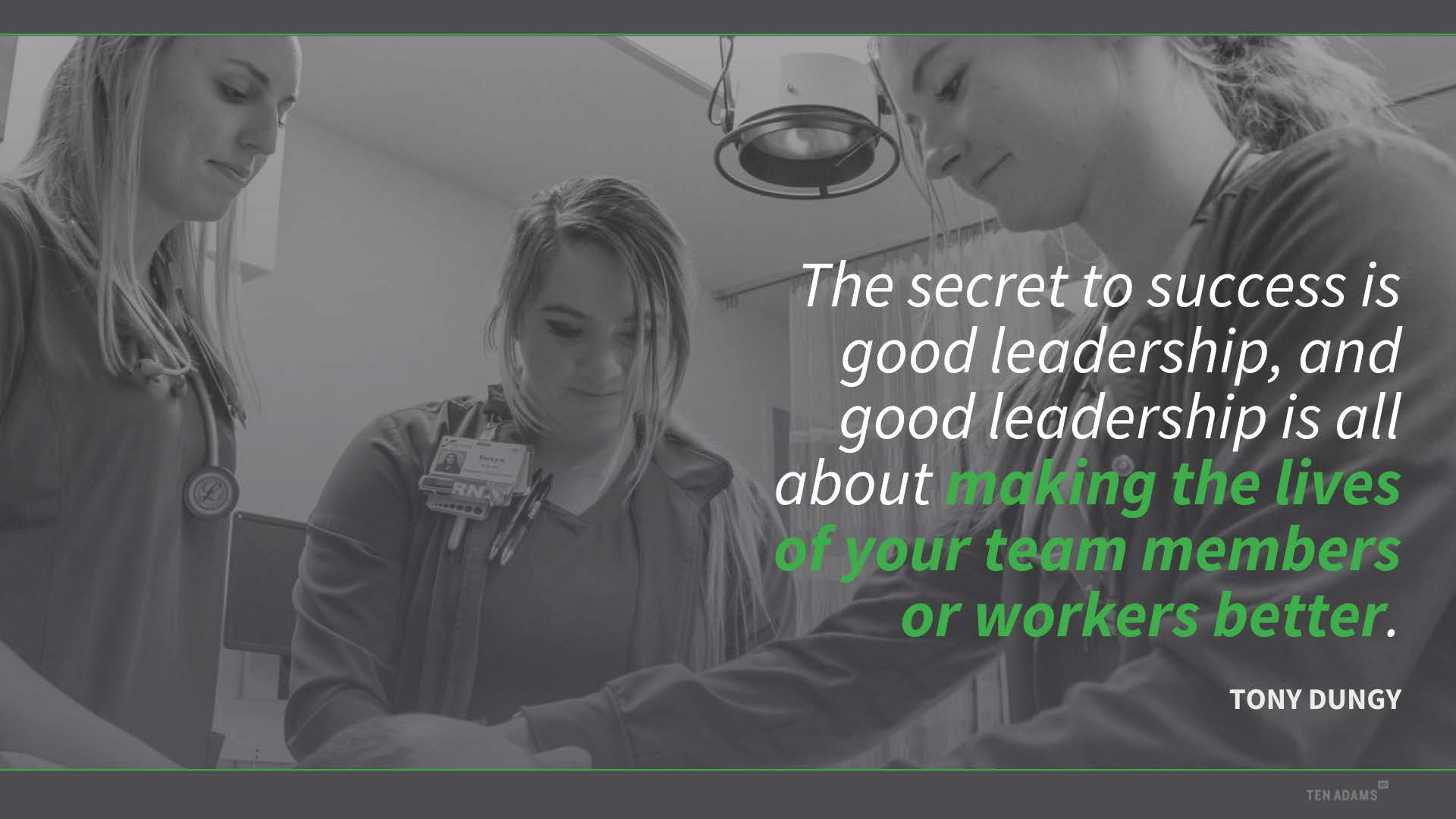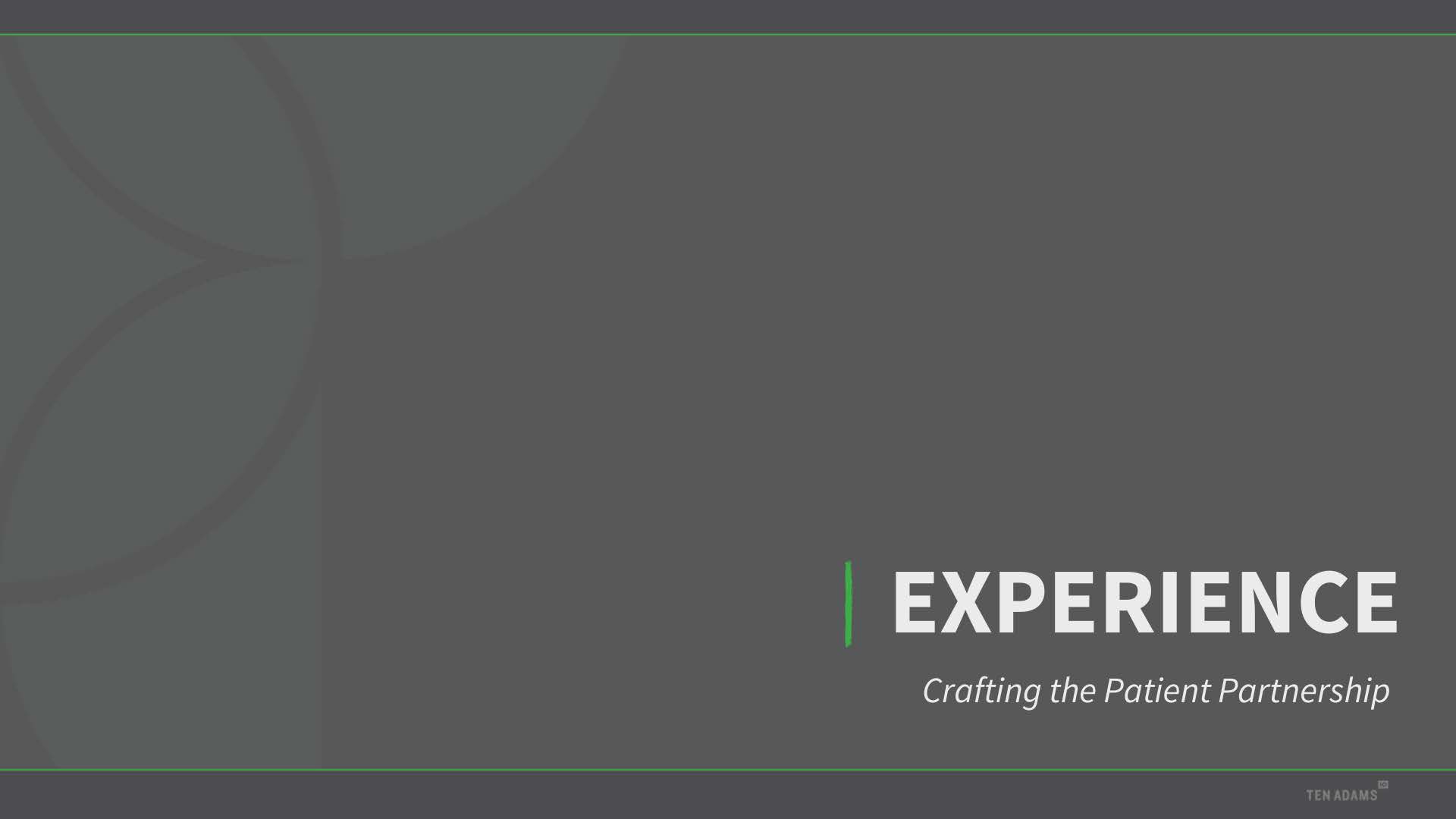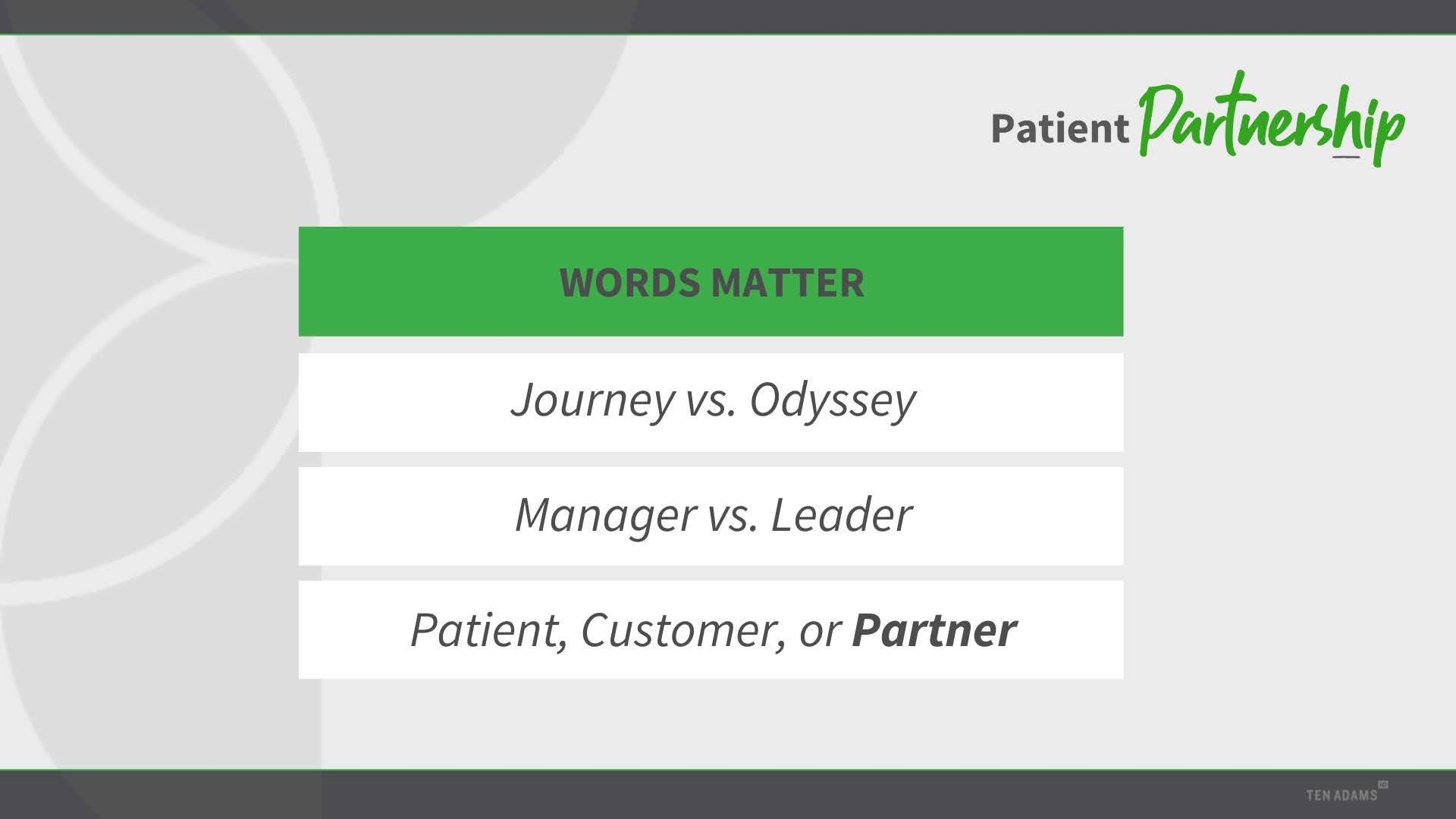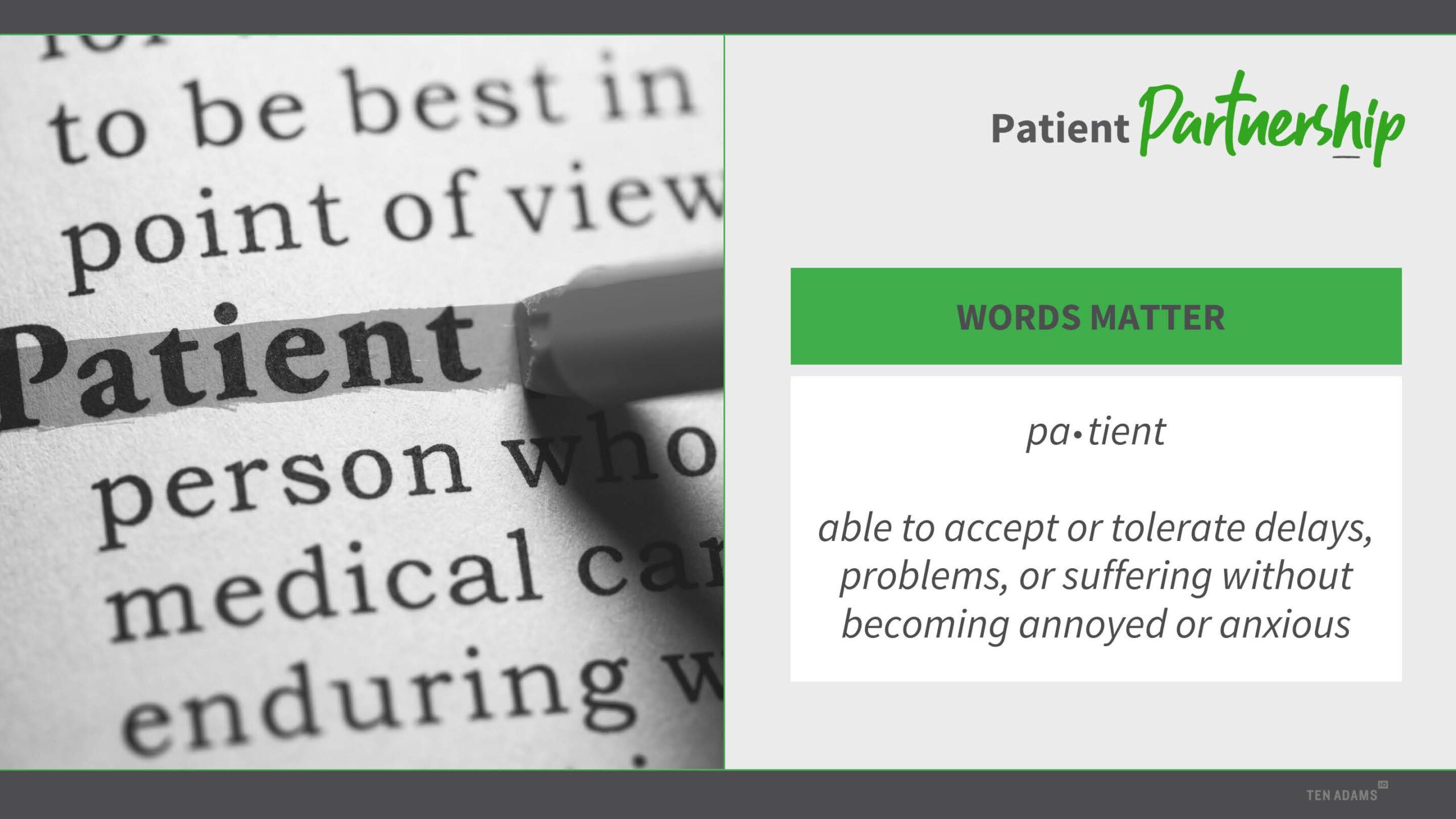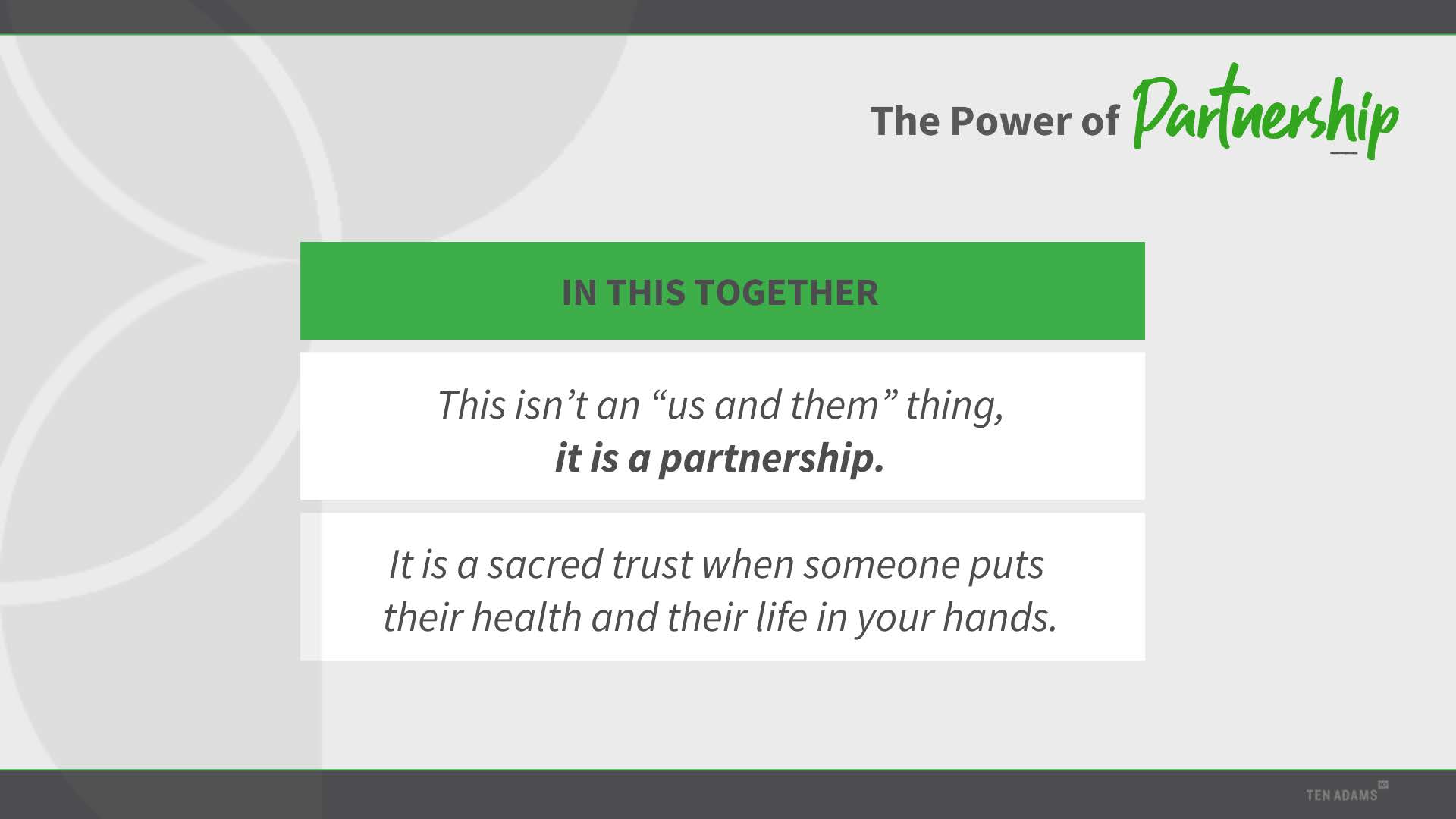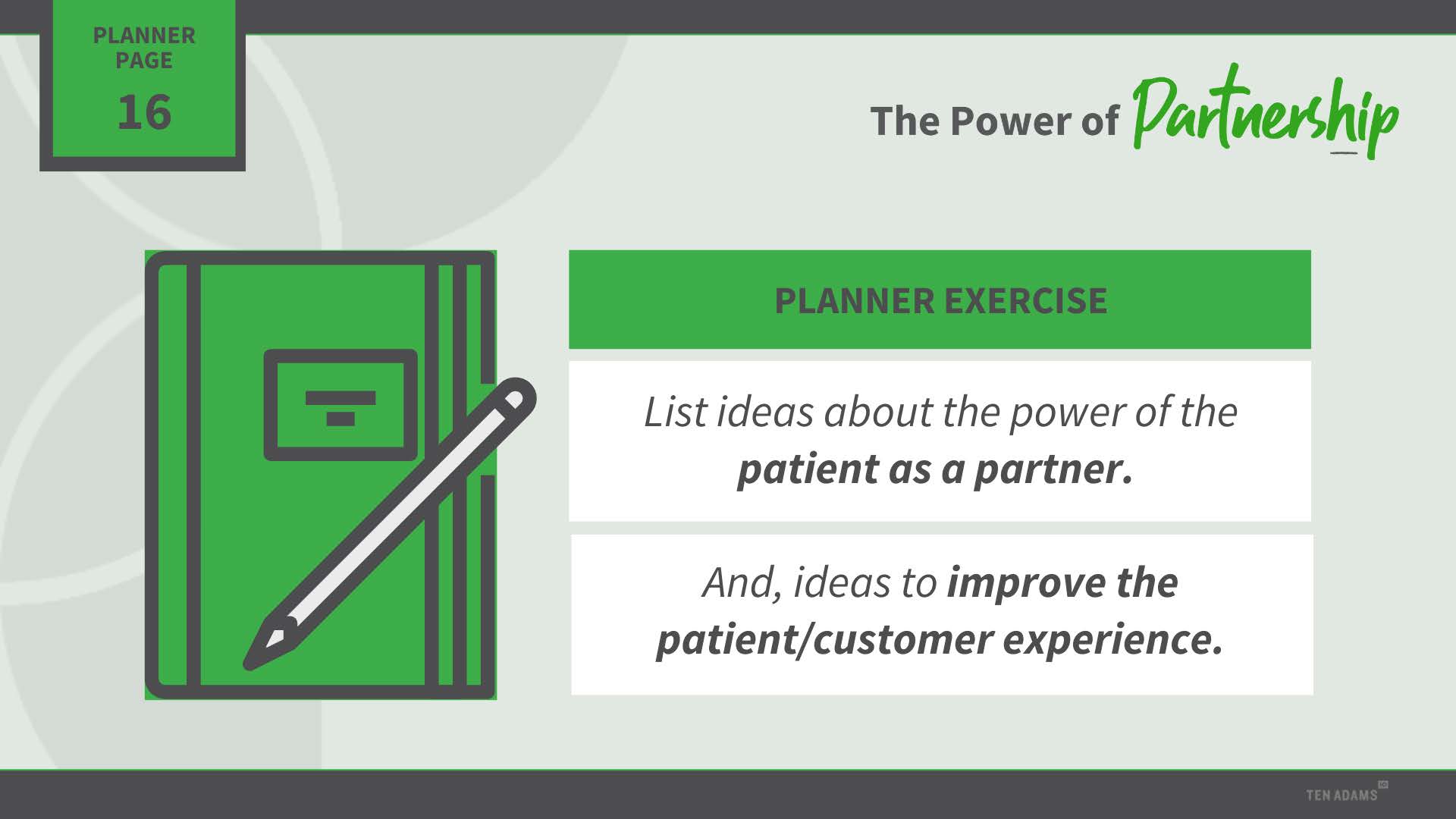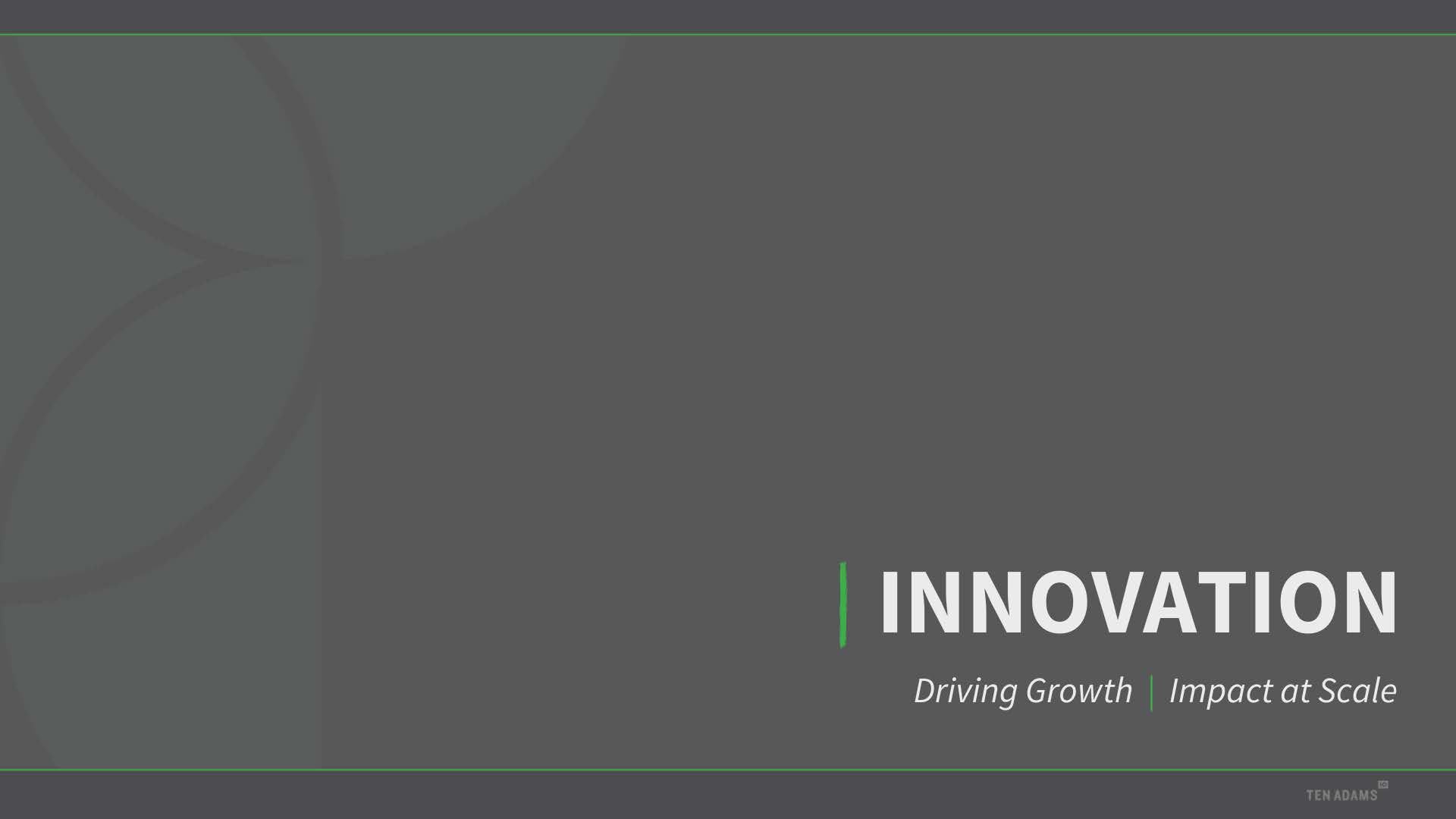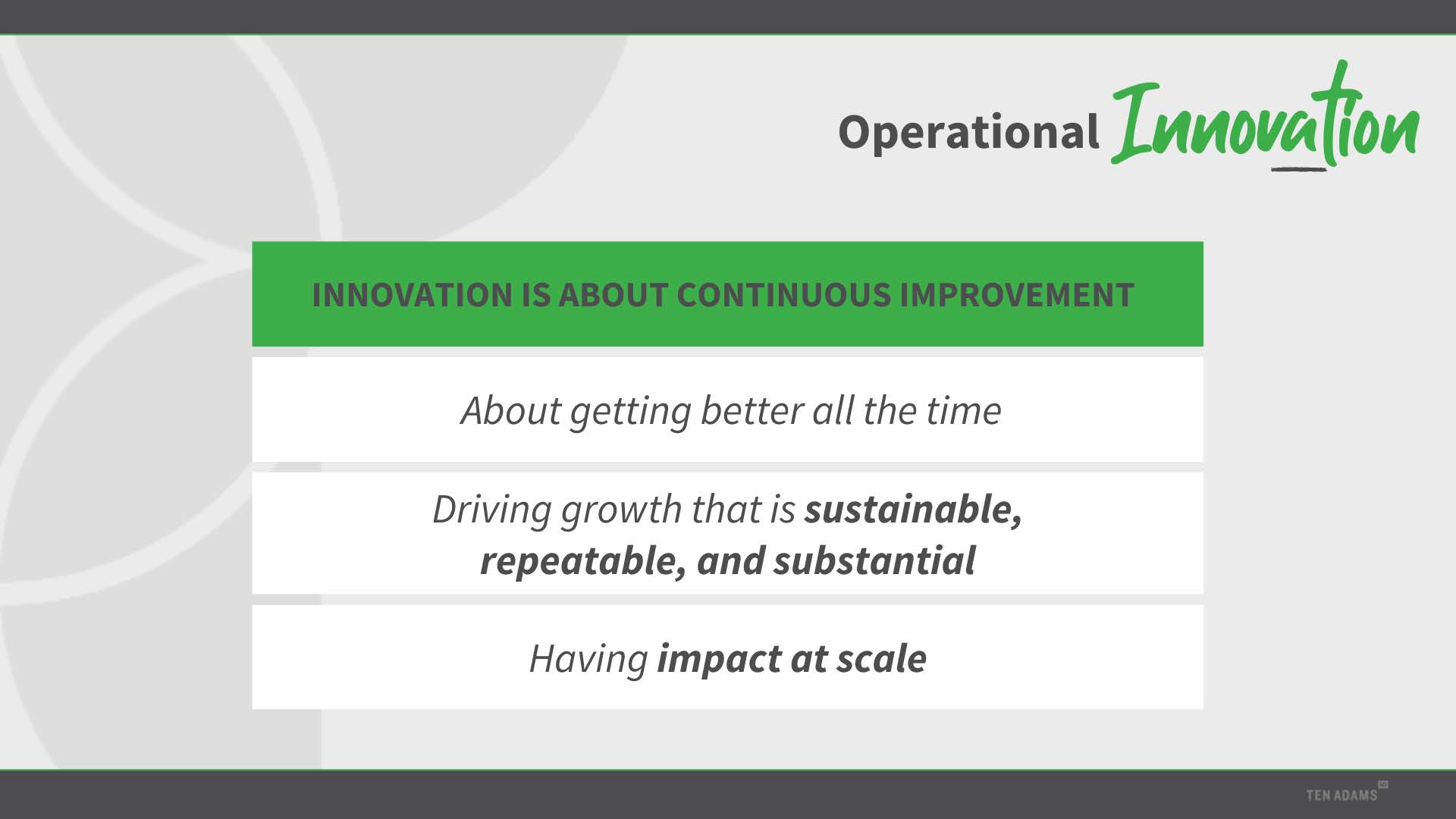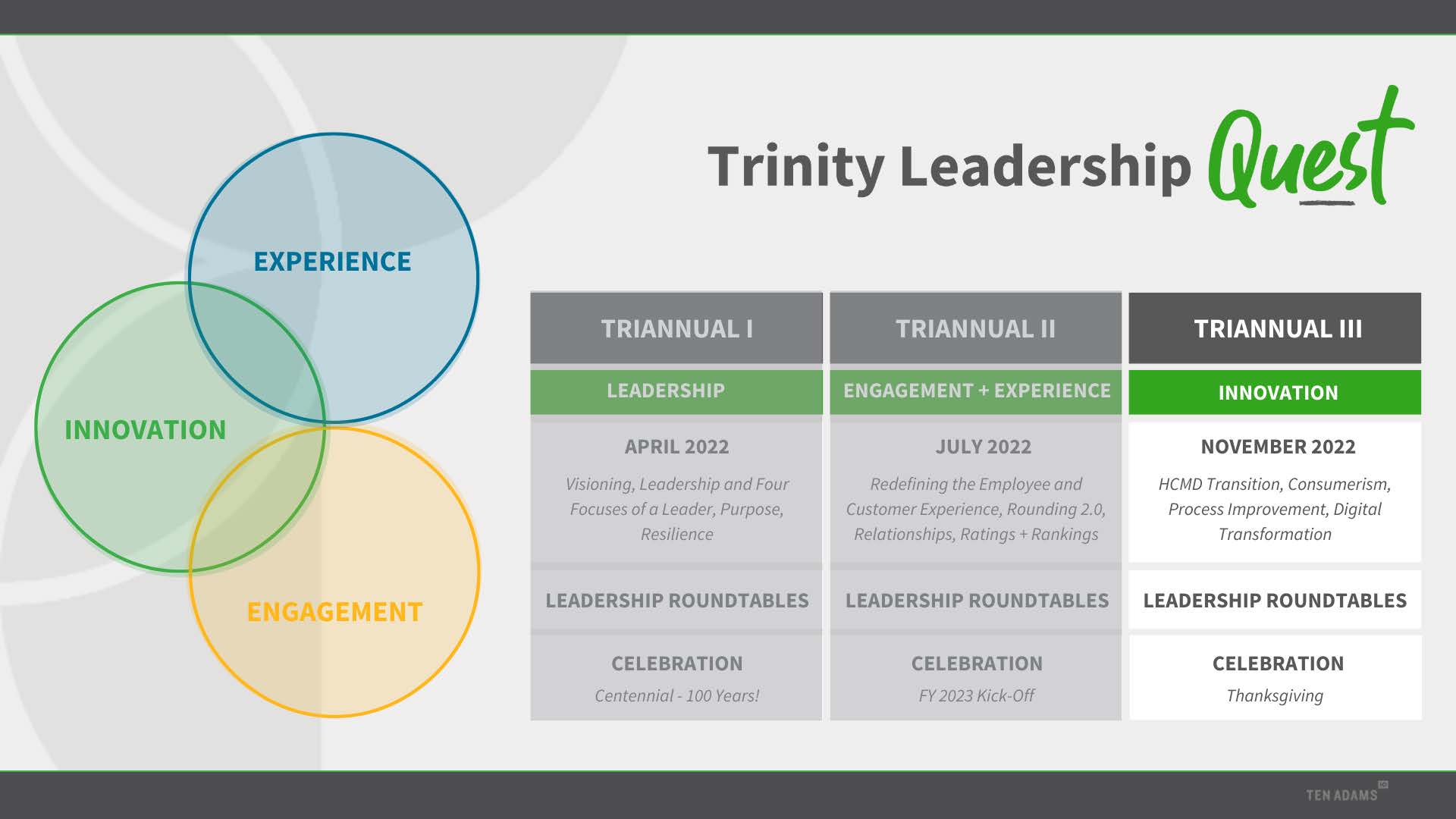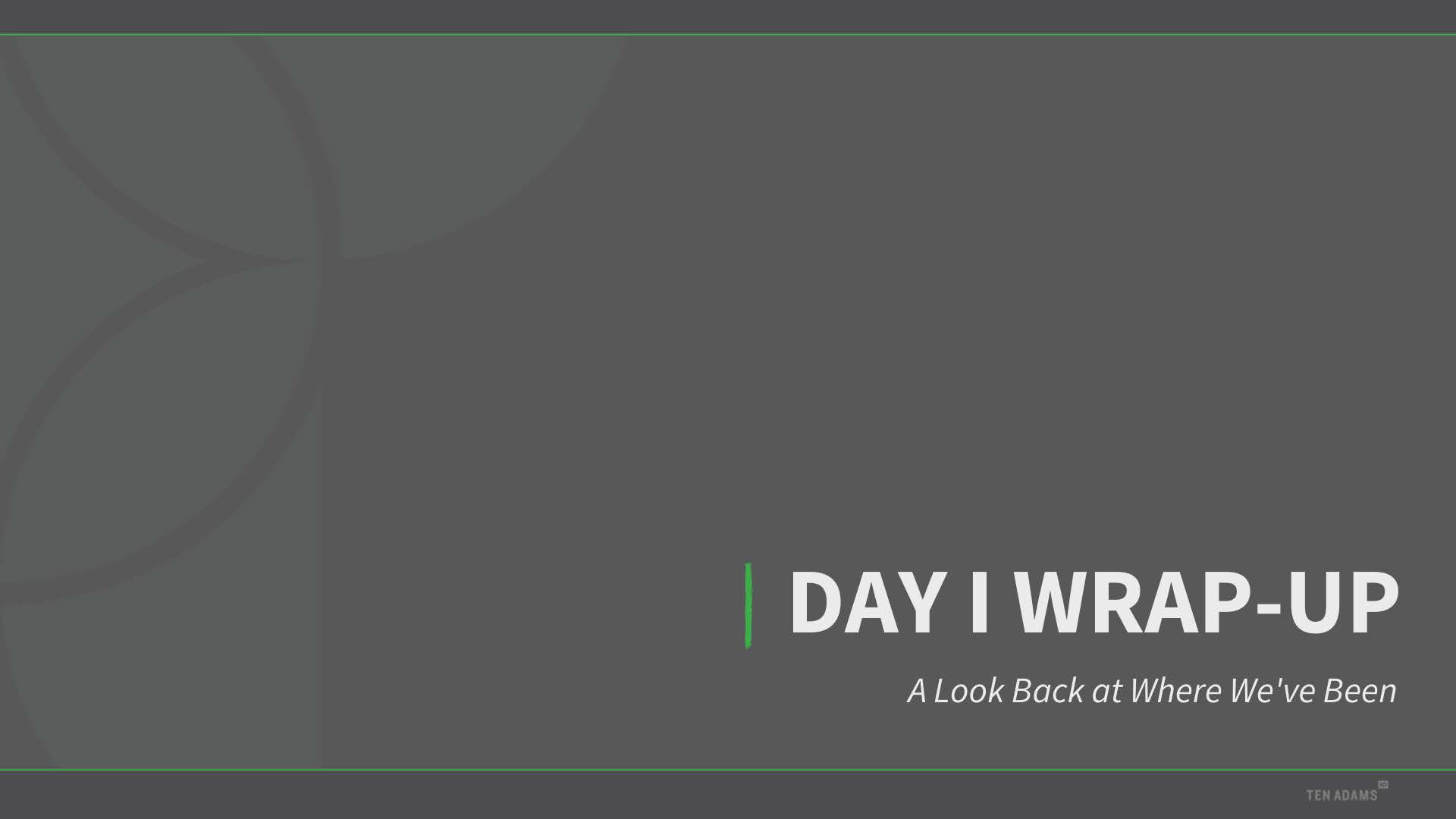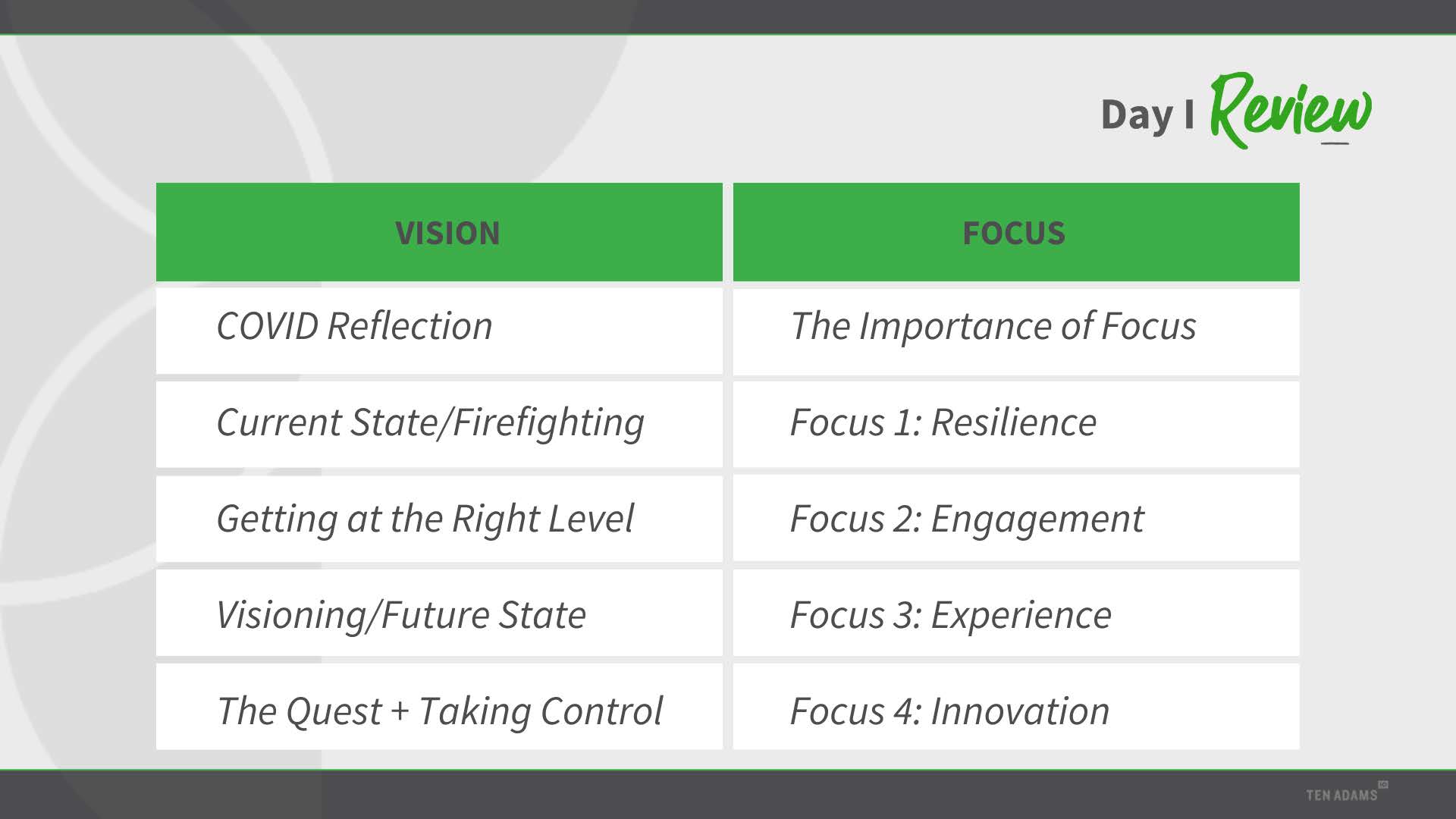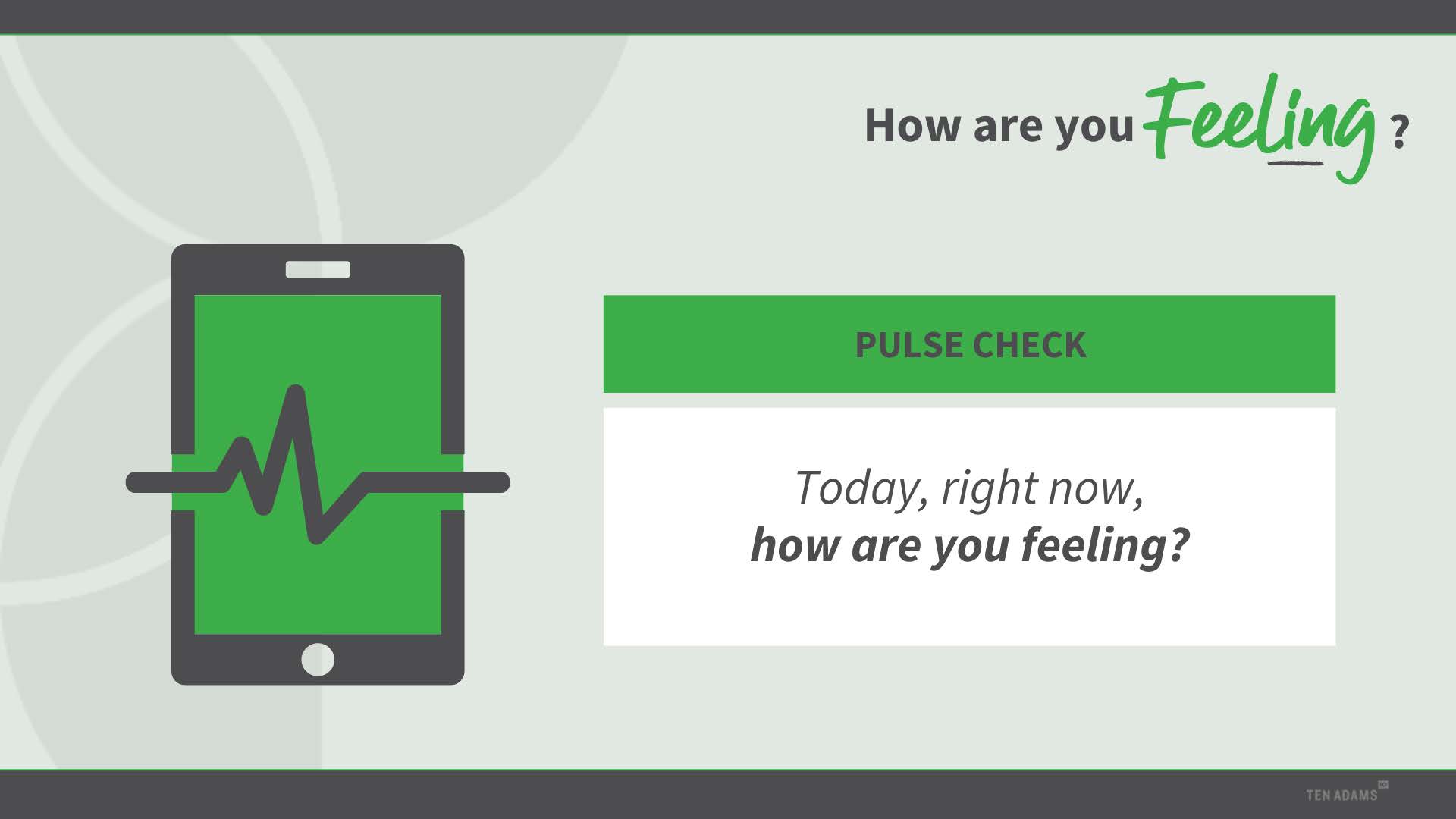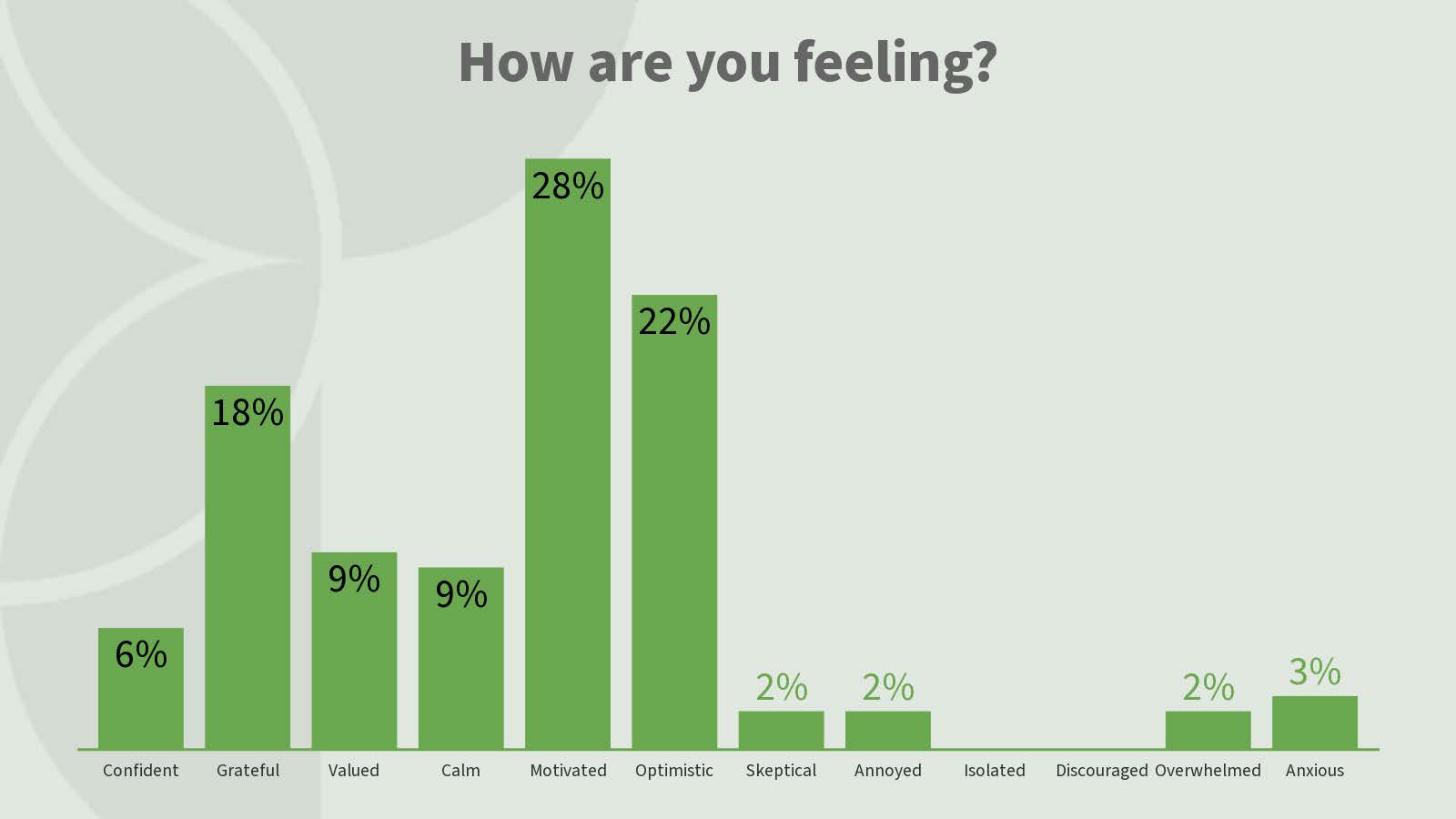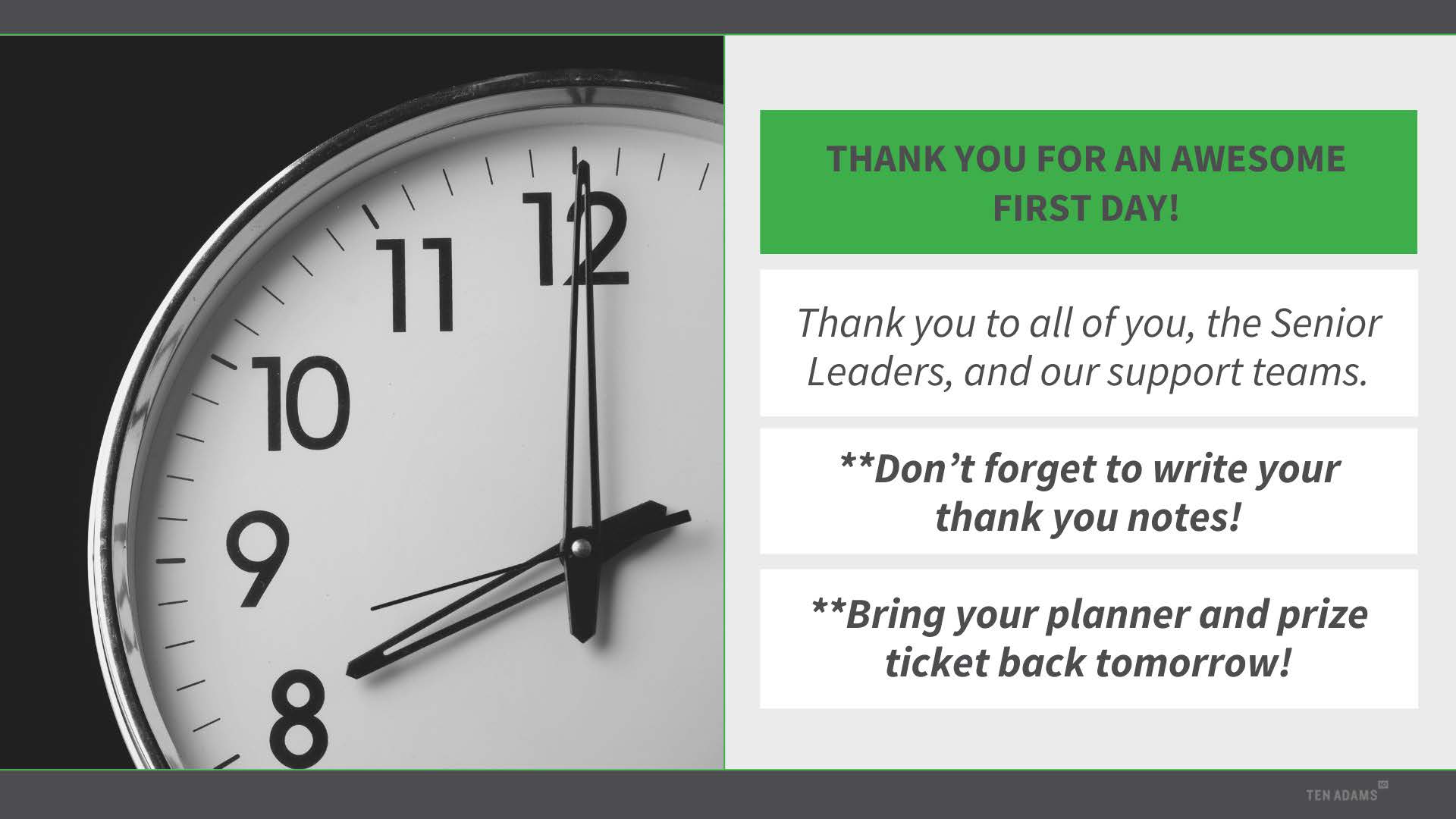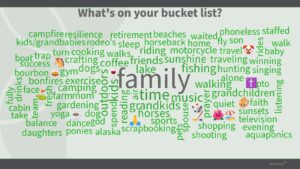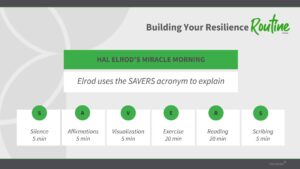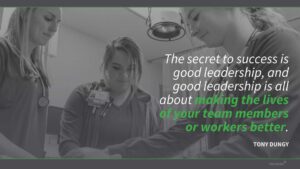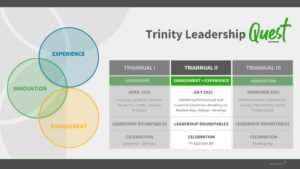
TRIANNUAL I: APRIL 5-6, 2022
Block II: Focus
Click above to watch the Focus video replay
Click above to view the Focus presentation slides
What you’ll learn in this module

In this Focus module, we’ll acknowledge all of the things that pull our focus as healthcare leaders and simplify what’s most important to only four focuses: resilience, engagement, experience, and innovation. We’ll set the stage for framing ALL leadership functions around these core four.
Four Focuses of a Leader
As we acknowledged in our firefighting lesson, we know that leaders are constantly pulled in too many directions, feeling responsible for everything, yet defeated because after fighting all of the fires, it can seem as if we’re not able to accomplish much of anything.
With this Leadership Quest, all of Trinity Health is committing to reorienting our leaders around four – that’s right, only four – core focus areas, simplifying our work as leaders to: Resilience, Engagement, Experience, and Innovation.
We will rebuild our conversations with our leaders and direct reports who are leaders around these core focuses to help us align our work throughout every level of the organization.
1. Resilience: a focus on cultivating personal and team wellbeing, building connections and a deeper sense of community, and finding purpose and meaning
2. Engagement: providing clear and motivating leadership to our teams, developing and coaching our employees to become their best, and crafting a cohesive and uplifting employee experience
3. Experience: elevating the patient and customer experience, enhancing the user experience for potential and future patients, and serving our community
4. Innovation: improving processes, operations and services, driving growth that is sustainable, repeatable, and substantial, and having impact at scale.
Narrowing our focus will help us maximize and reclaim our most valuable resource as leaders – our time.
Review the Four Focuses of a Leader on page 12 of your Planner.
Resilience
Resilience is an essential foundation for all of us, and an important focus of a leader.
As Dr. Brene Brown says, “Joy, collected over time, fuels resilience, ensuring we’ll have reservoirs of emotional strength when hard things do happen.”
Intentionally building our resilience helps to equip us to handle anything that may come. It gives us the internal and emotional strength we need to respond with our highest capacity and create the greatest, most positive change.
Here are tools for building our resilience:
1. Bucket List: in this lesson, we focused on outlining our bucket list – making a go-to list of everything we can do to fill our bucket so we’re able to immediately fill up our tank when our reservoirs are running low. Set a date with yourself or a friend to check off some items from your bucket list on a regular basis to keep your reserves full.
**In Triannual II, when we dig into employee engagement, a great tool to support our team will be knowing what’s on their bucket list. Knowing the most effective way to encourage and recharge our team will help us be compassionate and effective leaders.
2. Resilience Routine: Hal Elrod’s Miracle Mornings book set the framework for building out our resilience routine and reclaiming the first hour of each day to doing whatever we need to fill our tank. He suggested six types of activities with the “SAVERS” acronym that will help us start the day right:
–Silence: quiet your mind, block out any chatter, and focus on your breathing
–Affirmation: repeat encouraging words to help you overcome your fears, achieve your goals, and feel happy
–Visualization: walk through your day and imagine meeting everything that comes with a successful outcome
–Exercise: get your blood flowing and increase the oxygen to your brain with physical movement like yoga, walking, or working out
–Reading: find positive, inspiring material to improve your outlook and help you grow and develop as a leader
–Scribing: spend time journaling to process your thoughts, set your goals, and reflect on everything you’ve already achieved
**Design your Resilience Routine and start your own Miracle Mornings with the exercise on page 14 of your Planner.
Engagement
Renae Lenertz, Chief Human resources Officer and VP of Human Resources, reminded us why working to improve employee engagement is so essential:
“One of the best ways to lead is to engage our staff.
Why? Because that’s a good way to retain them. We need to work harder to retain the staff that we have. We all know, it’s no surprise that recruitment is getting tougher and tougher and tougher. And, over the next couple of years, recruitment and retention is going to be a big focus amongst all of us.
It’s a black dot, it’s part of our SDP, so I’m probably going to be asking for a lot of help from [all of the leaders in this Leadership Quest]. We’re going to be opening a new hospital and we need staff to do that. So, the retention part of that is really as important as the recruitment. And, coaching our staff to succeed is also a big piece of it.
Our employees do talk about that…The last employee survey that we had, one of the things that employees talk about is ‘we want to be engaged, we want to be engaged in the decisions that are made’ and that’s a big piece to retention part.
I will look for all of you to help with those pieces. And, I know it is such an important topic that we’ll be spending a lot more time at the next Triannual we have, so be thinking about that.”
As Renae said, we’ll dive deep into employee engagement, rounding, coaching, and re-designing the employee experience in July at Triannual II.
Until then, keep an eye out in your daily interactions with coworkers and your direct reports for opportunities to increase engagement, to coach our teams, and to develop an environment that inspires our best talent to stay on board the Trinity Health team.
Continue to jot down those opportunities and ideas on page 15 of your Planner.
Experience

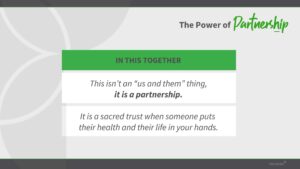
When addressing the Patient and Customer Experience, Jennifer told a touching story of walking through health challenges with her mother and experiencing healthcare from the other side.
She explained that words matter, and defining those we serve as “patients” can lead us to sometimes fall into making them be patient – long wait times for appointments, multiple reschedules, and a less than human or compassionate approach to treating the patient as an active and engaged participant in their care.
Jennifer proposed that we rethink the patient as a partner and that we reorient our care for them acknowledging the weightiness of the sacred trust they have placed in us to care for their health and wellbeing, or to care for the outcomes of their precious loved ones and families.
As with employee engagement, we’ll explore re-designing the patient and customer experience in July at Triannual II.
Until then, continue to work through ideas about the power of the patient as a partner and ideas to improve the patient and customer experience on page 16 of your Planner.
*Note: even if you are not involved in direct patient care, you still have a customer and partner with the work that you do.
Perhaps you are able to improve the patient experience from the lens of adminstrative and operational efficiency, or you’re able to improve the experience of hospital vendors who are your customer – wherever your role falls within the Trinity Health team, there is room to rethink and recommit to a compassionate, human centered, serviceFIRST approach to your customer and elevate their experience by treating them as a true partner.
Innovation
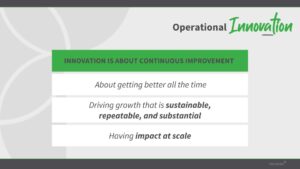
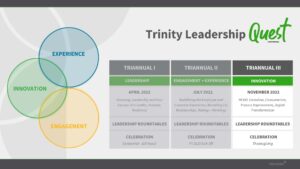
Randy Schwan, VP of Mission Integration led us in our look at innovation at Trinity Health:
“I think about how we do innovation at Trinity and how we have all been through the process of learning how to move the benchmark up and then sustain that over time. Strategizing and moving the benchmark up and hardwiring that gain so we don’t fall back into old trends, old habits, old processes.
And, over time, a lot of innovation has taken place in that process.
Working smarter, not harder. We’re all working hard enough, and putting enough time in.
But, how can we be smarter about what we’re doing? Listening to others, hearing their ideas, suggestions – that came up at our table two or three times today – about getting more input, getting more feedback, trying new things that have bubbled up from our staff. Is there an idea that maybe needs to be cultivated instead of dismissed?
So, working to sustain the change and the gains that we’ve made, making sure that we can repeat that again and again, across different departments, and learning from each other.
And, finally to make that substantial. Innovate and make substantial change.“
Innovation is about both the growth that is substainable, repeatable, and substantial – about impact at scale or the “big I” innovation – but it is also about continually improving everything we do, in small, repeatable ways – the “little I” innovation.
Keep track of your ideas for how we can innovate operations in big and small ways at Trinity Health on page 17 of your Planner. What can we do overall and what can we do within your department?
We’ll dive deeper into innovating our operationgs in November at Triannual III.
TRIANNUAL I: PLANNER
Integrating What You’ve Learned
TRIANNUAL I PLANNER
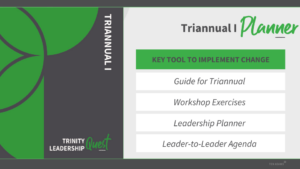
Access a digital download of the Triannual I Planner with Triannual I content and all planning pages from April 4th, 2022 to July 18th, 2022.
LEADER-TO-LEADER
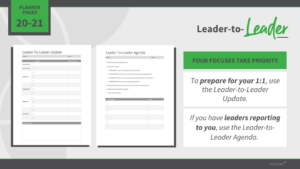
Download the Leader-to-Leader Update and Leader-to-Leader Agenda to prepare for your 1:1 meetings with your leader and direct reports.
TRIANNUAL I: CONTENT
Vision, Focus, Alignment, Action
Block I: Vision
In this Vision module, we’ll take a moment to reflect on our COVID experience and honor the strength, heroism, and grit of our incredible Trinity Health Team, we’ll dig into our current state to see where we are now, and we’ll set a powerful vision for the future of leadership at Trinity Health.
Block II: FOCUS
Block III: Alignment
Block IV: Action
In the Action module, we’ll deep dive into our everyday schedules and re-orient our plans around the four focuses of a leader. You’ll integrate everything you’ve learned and leave this workshop style section having completed detailed annual, quarterly, monthly, and weekly plans in your Triannual I planner.

